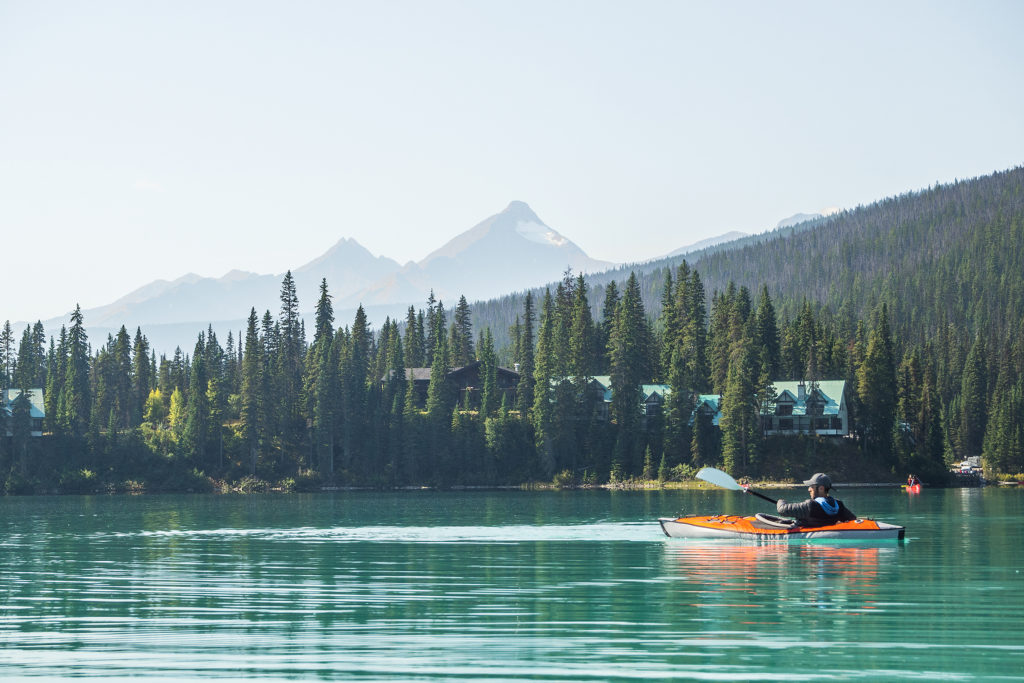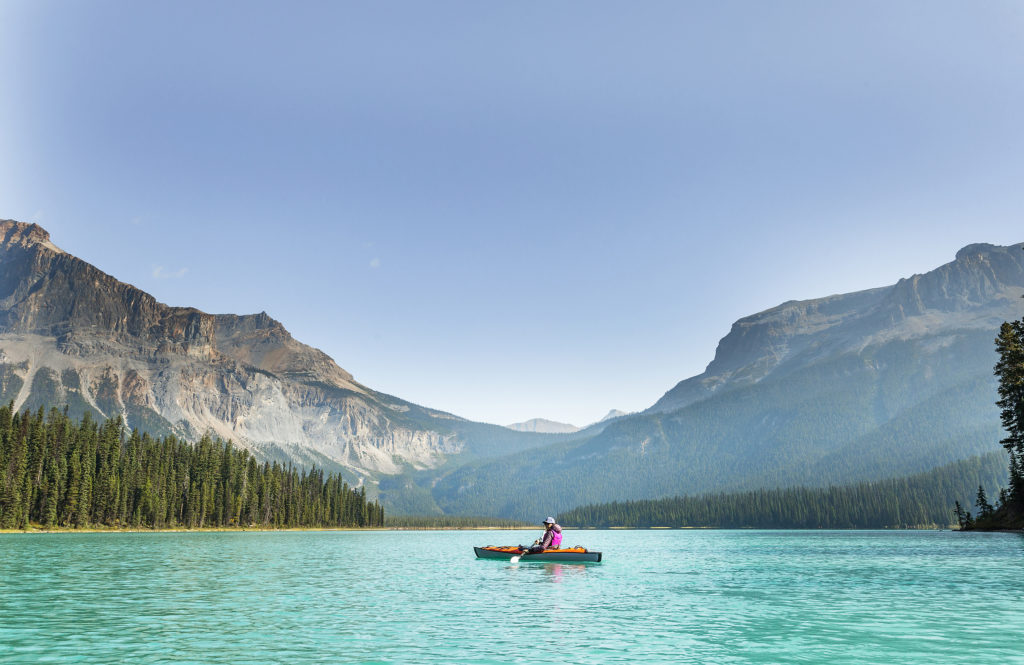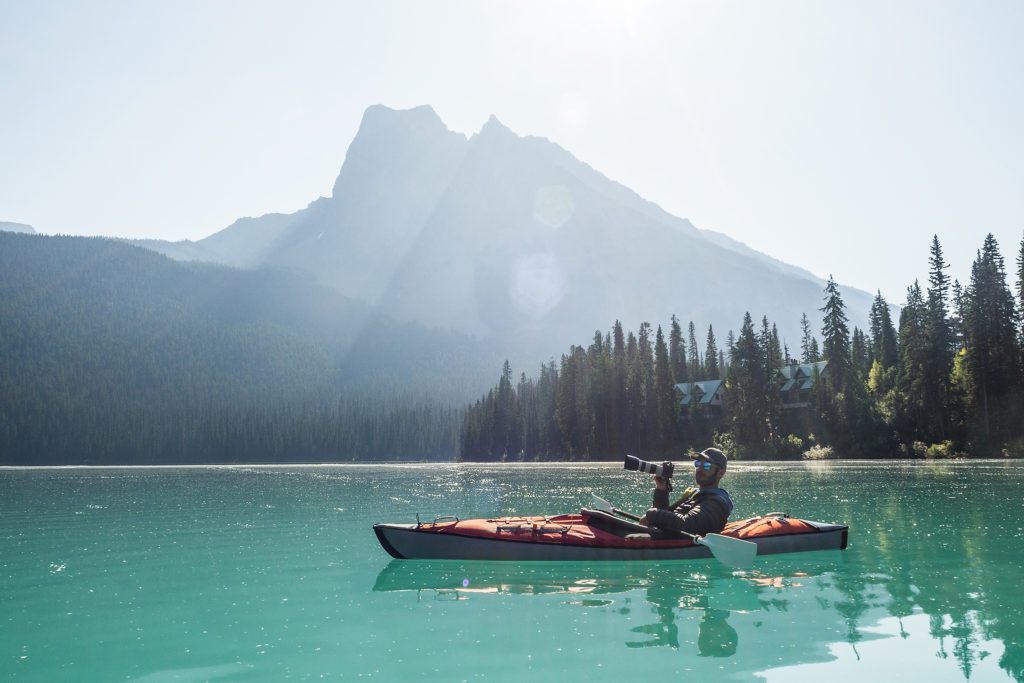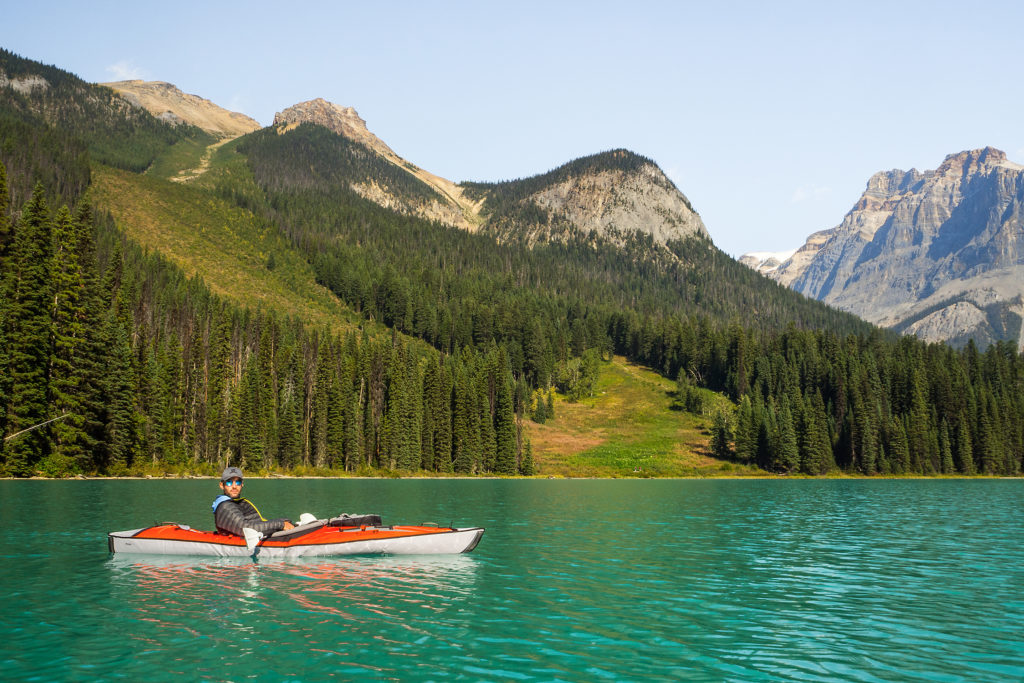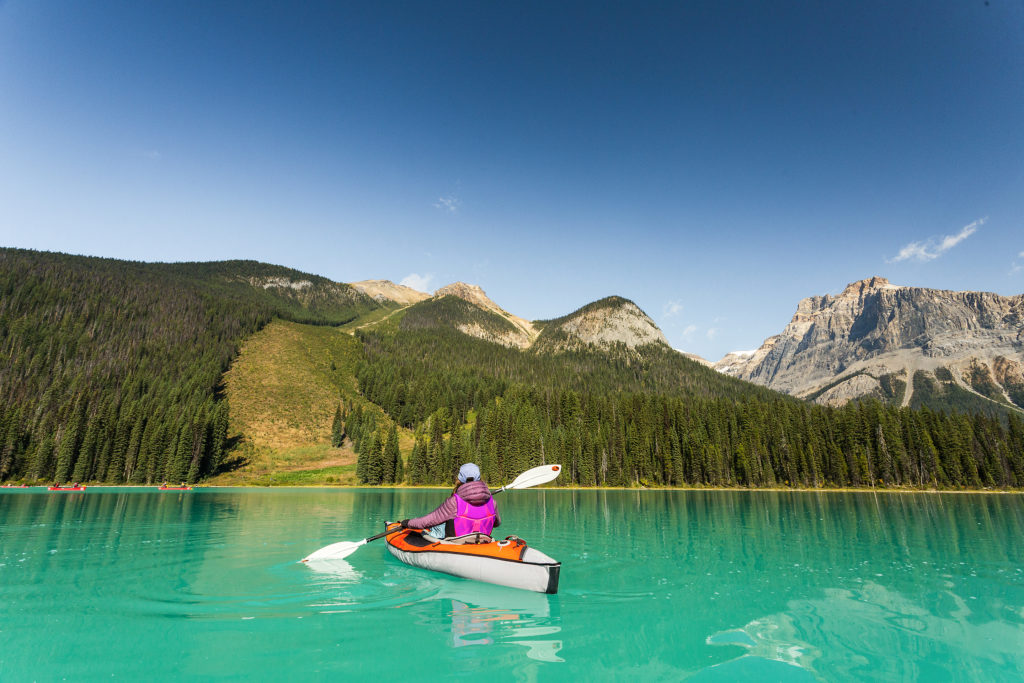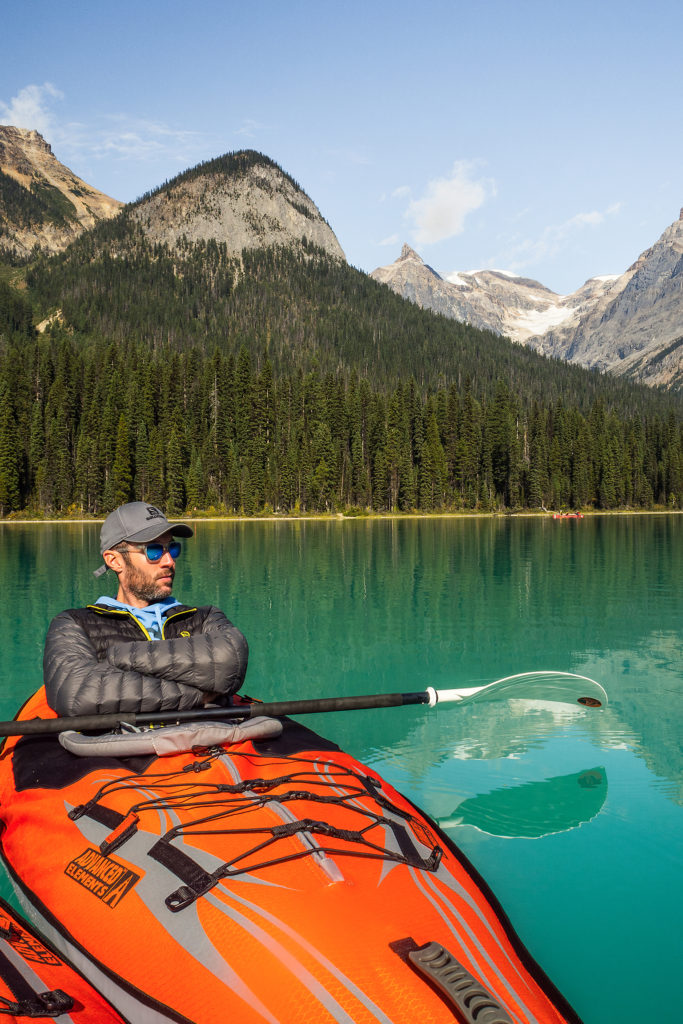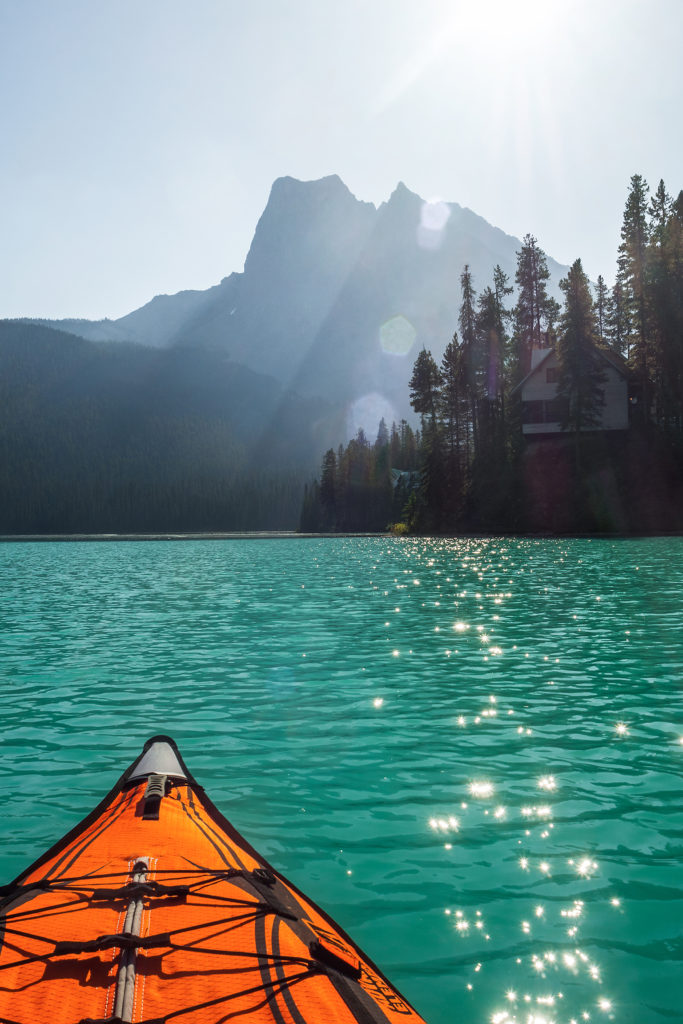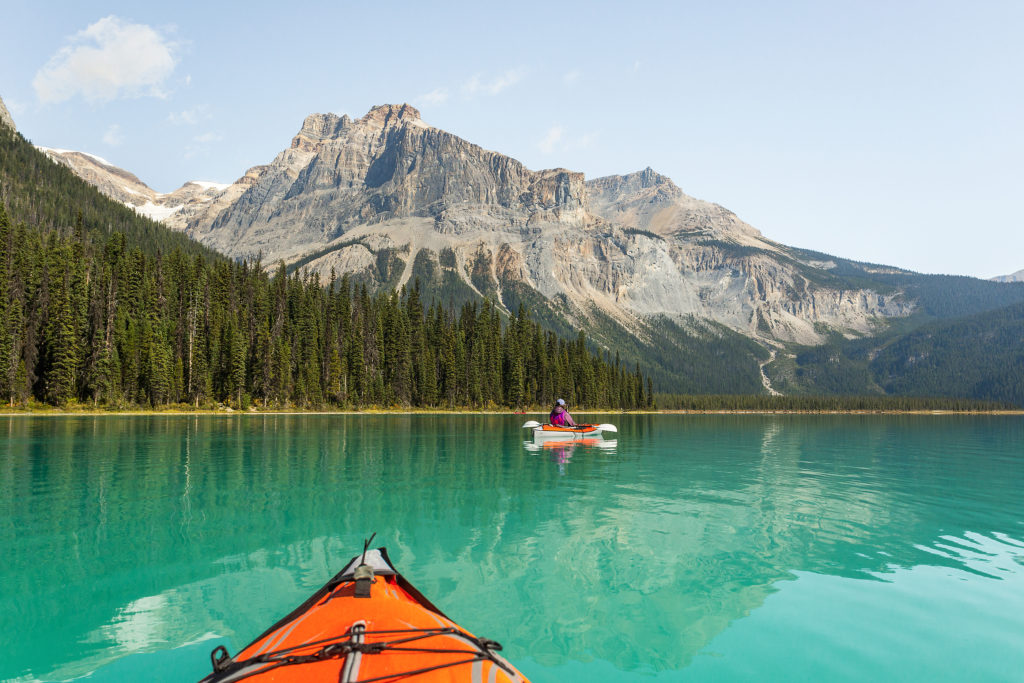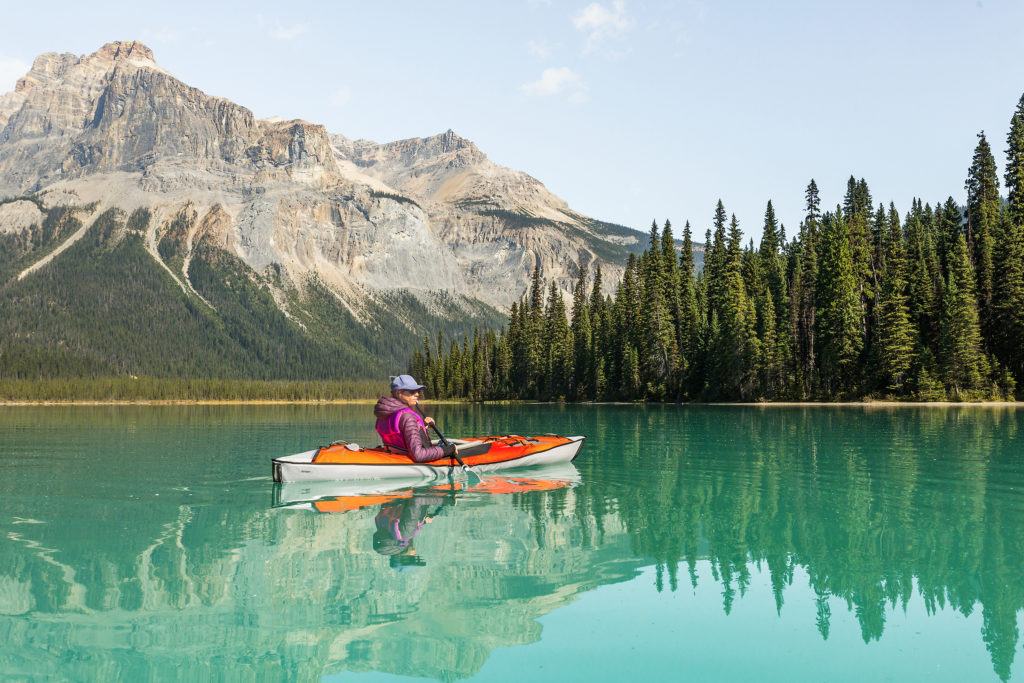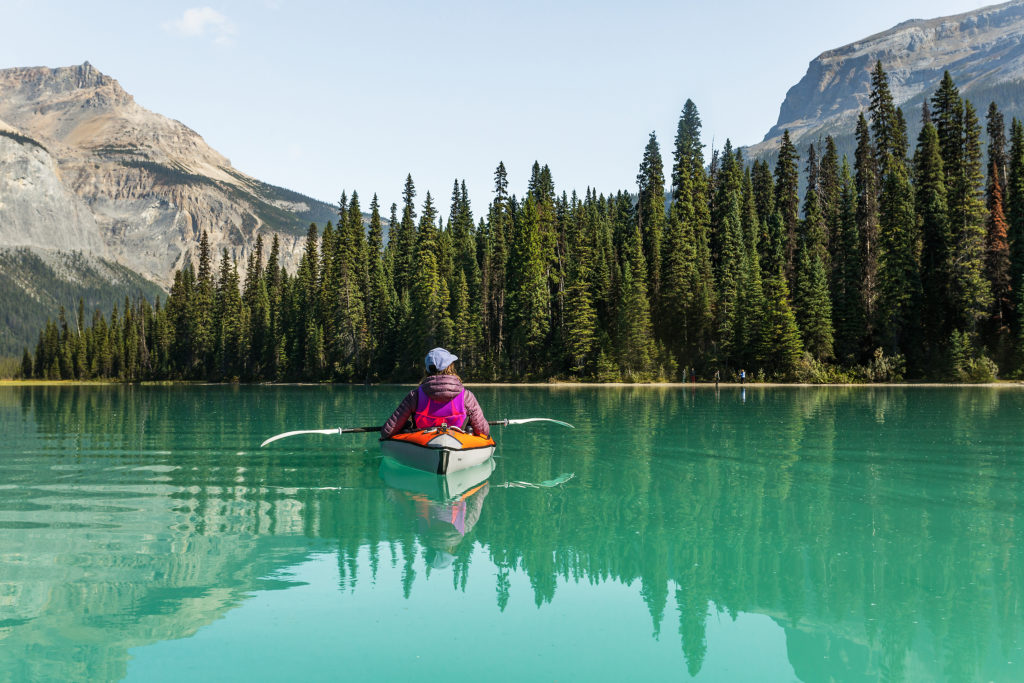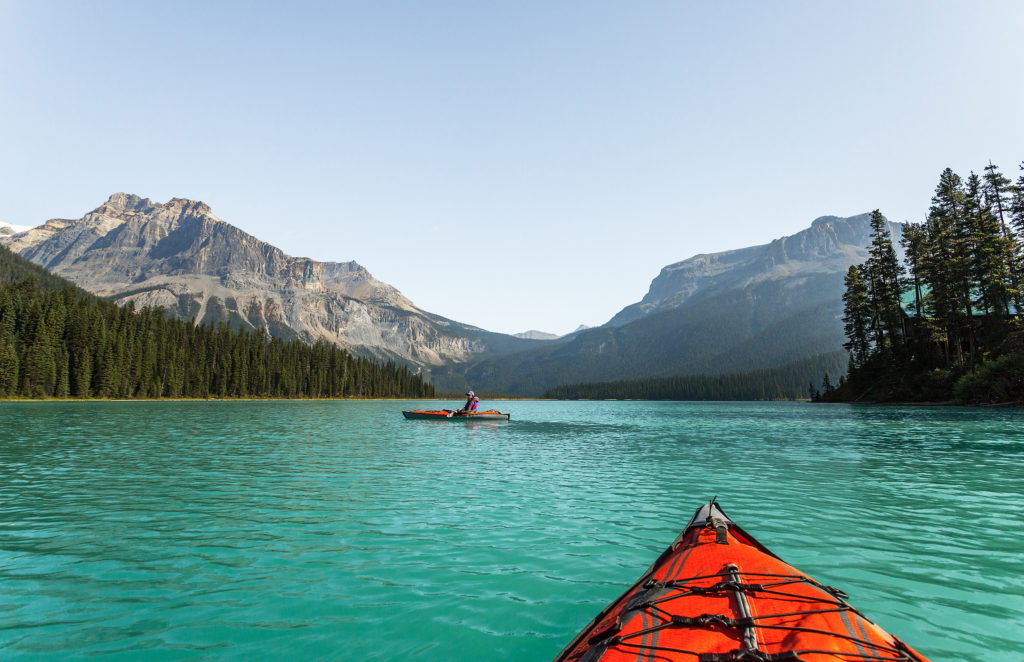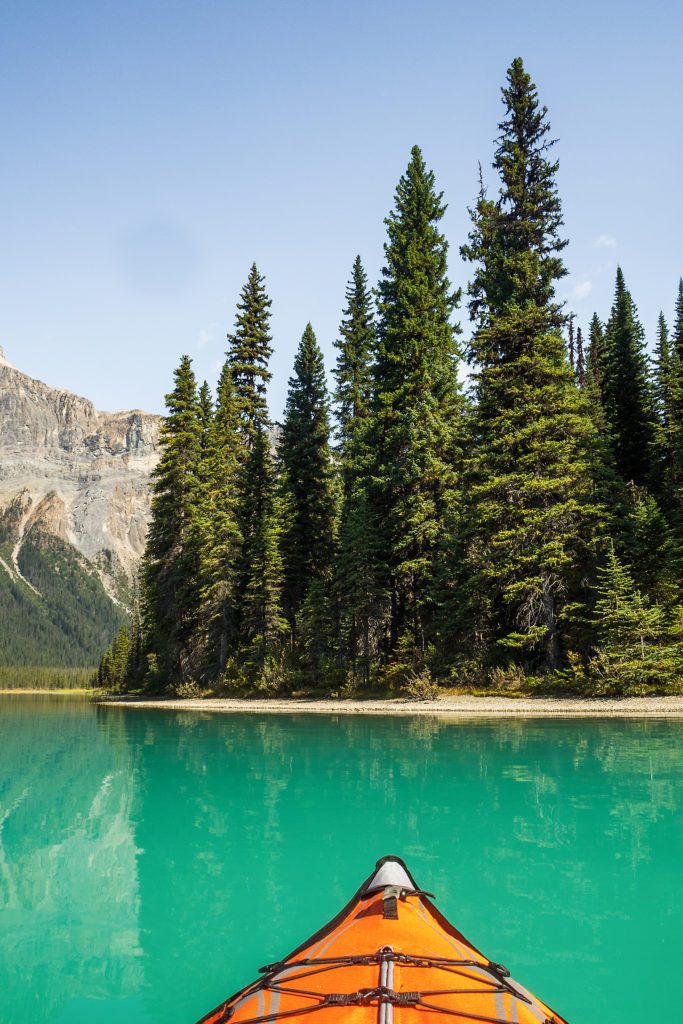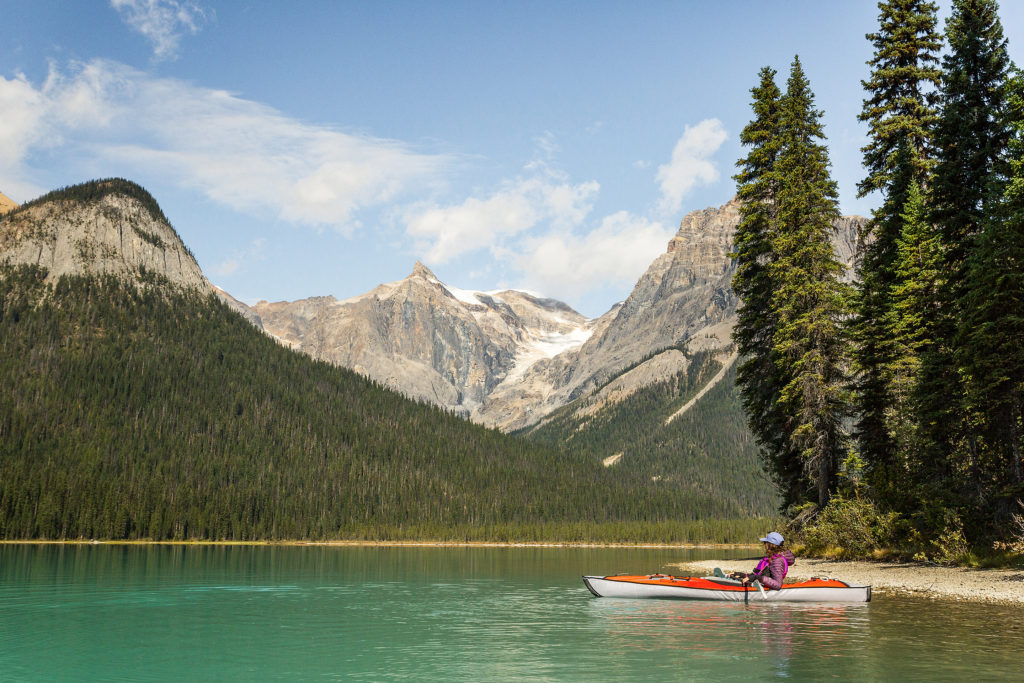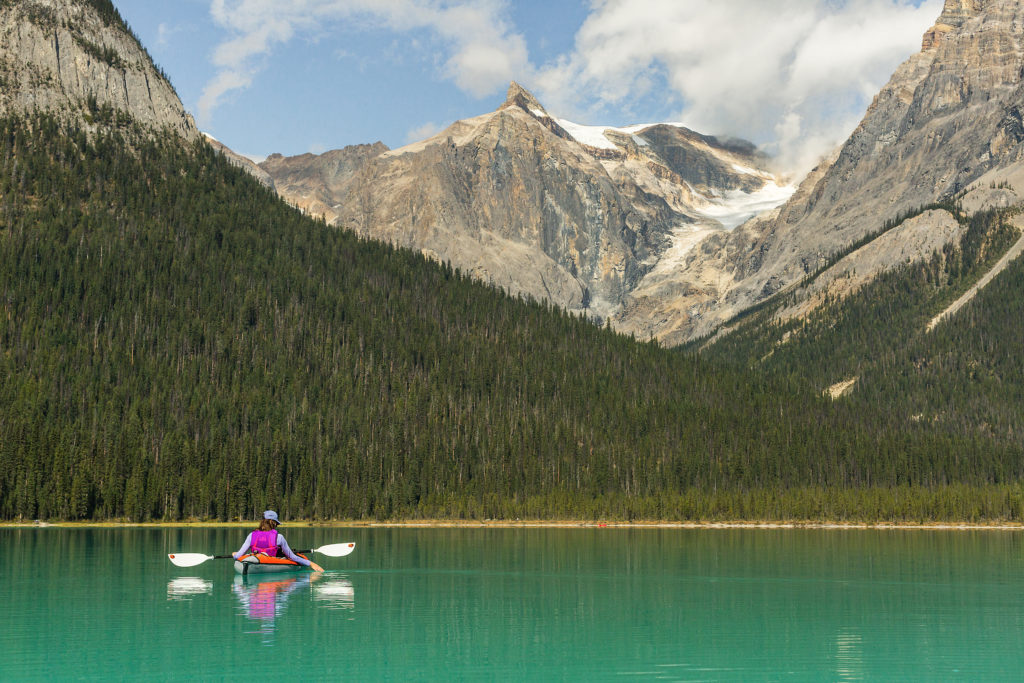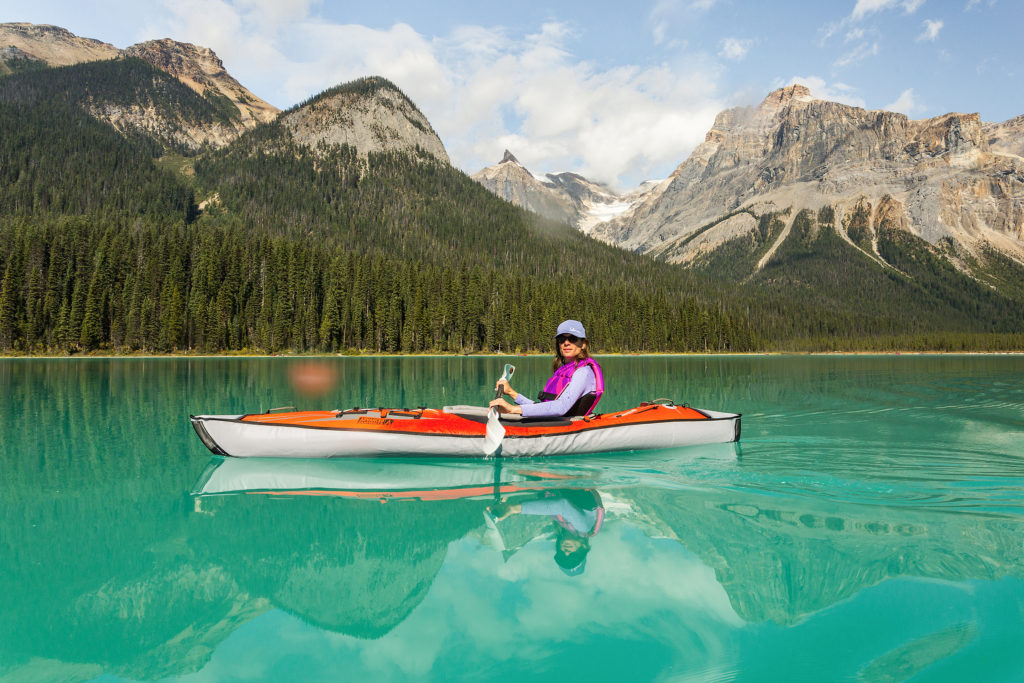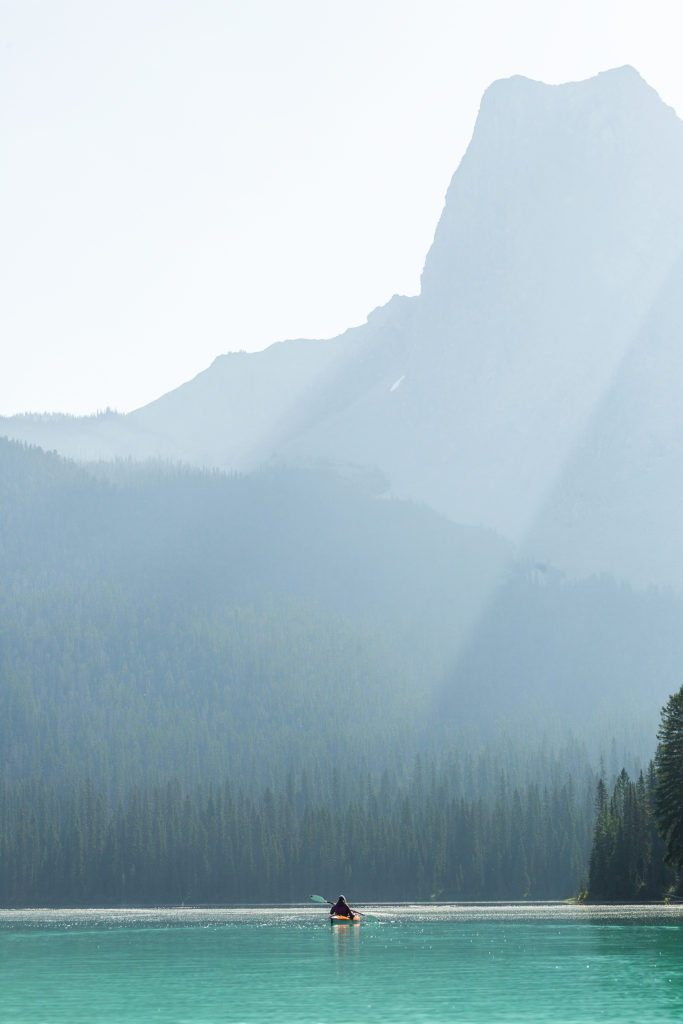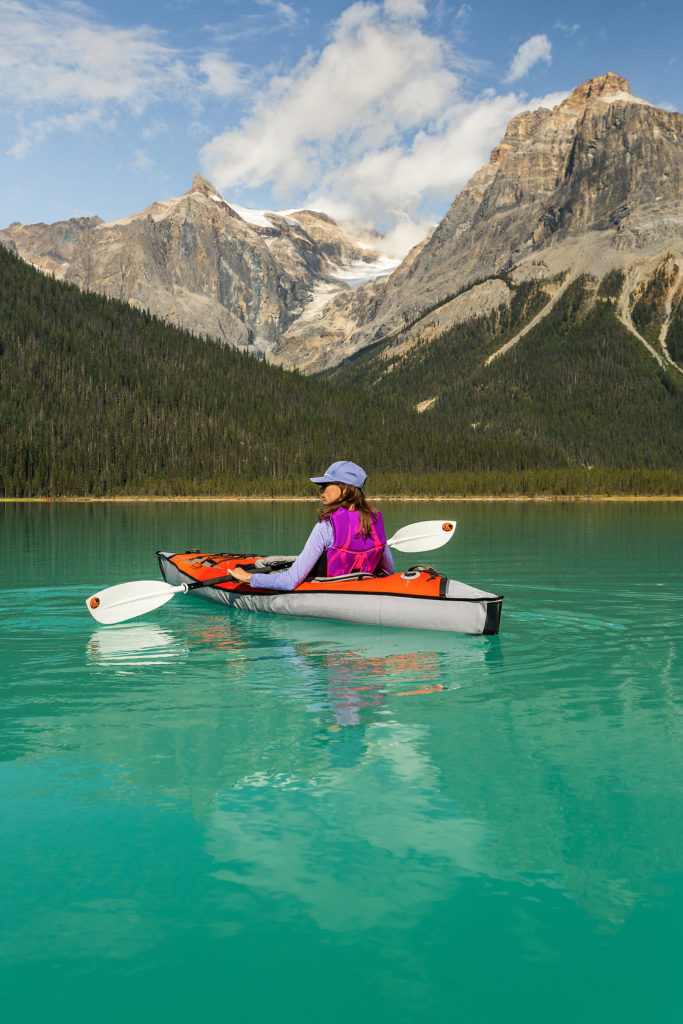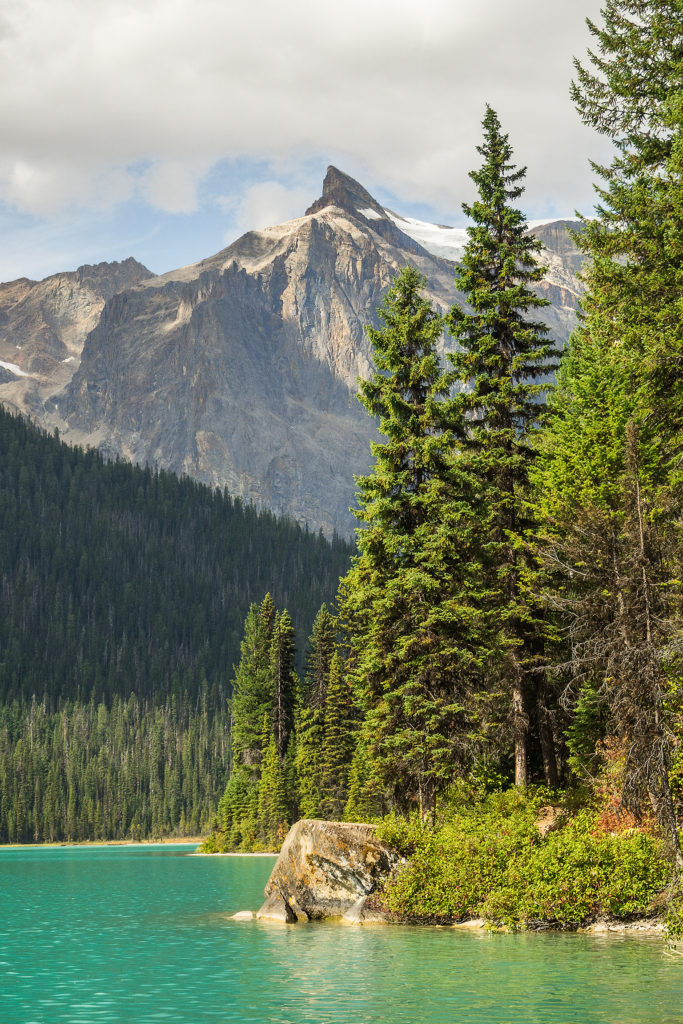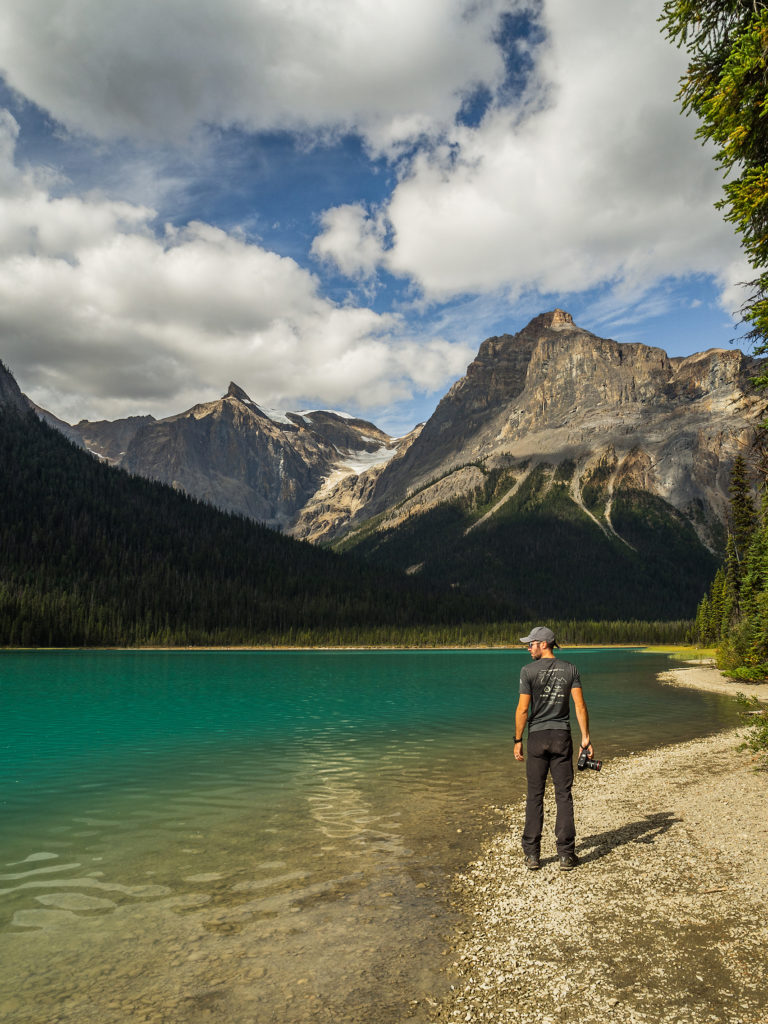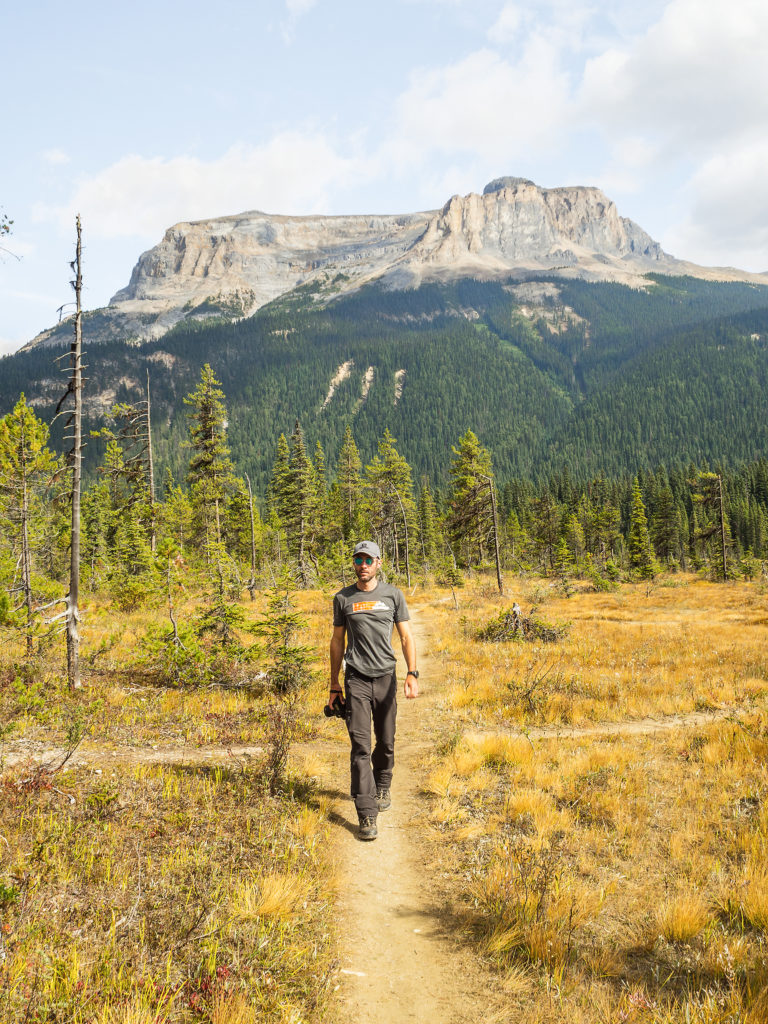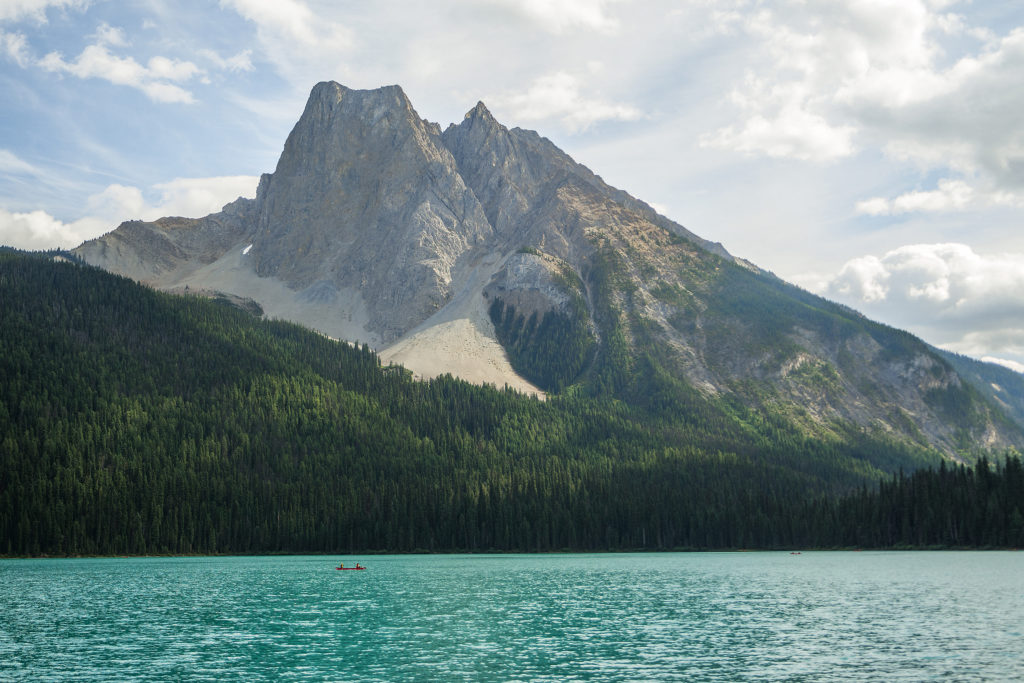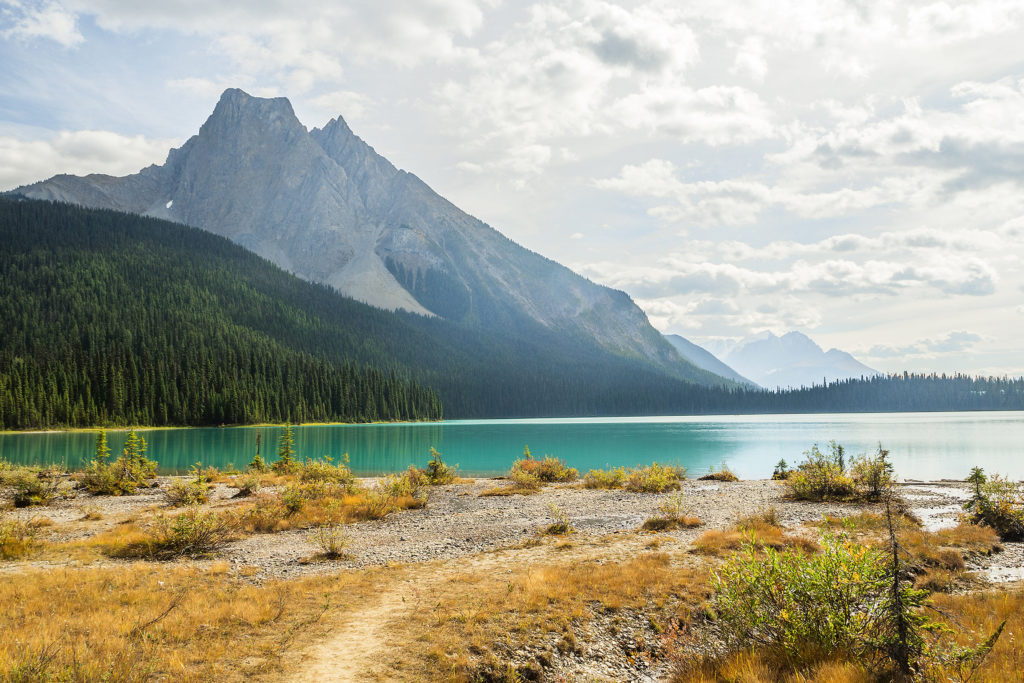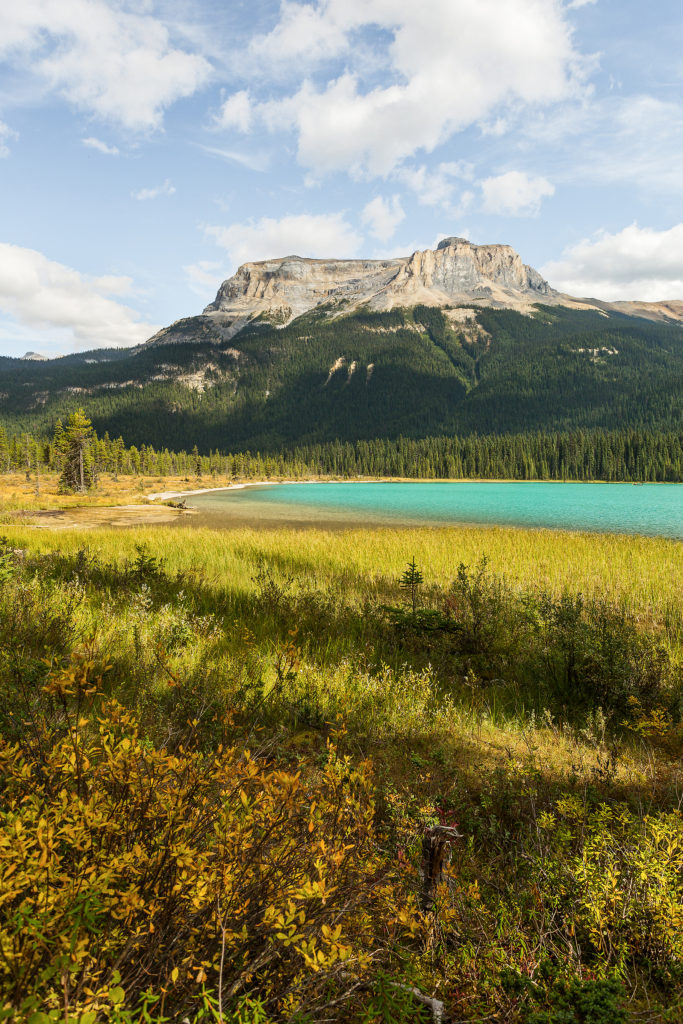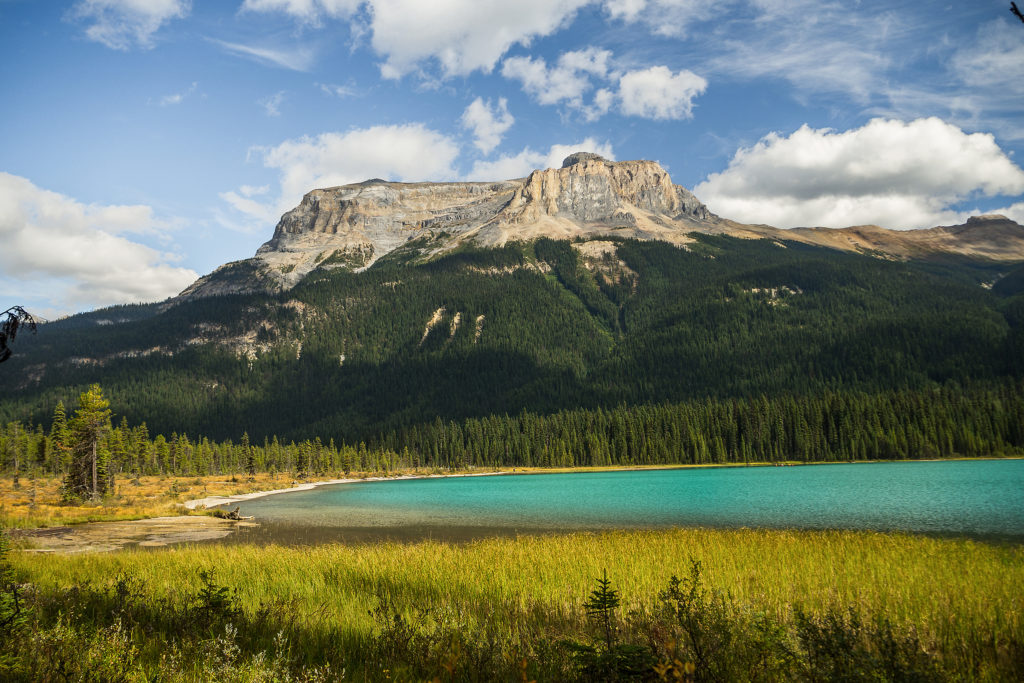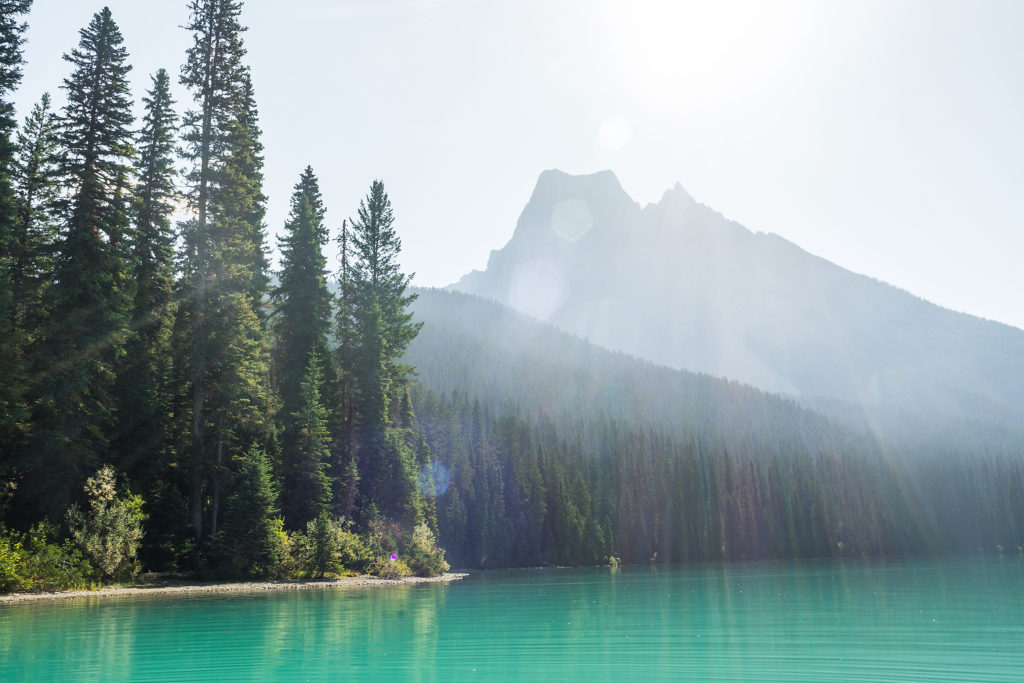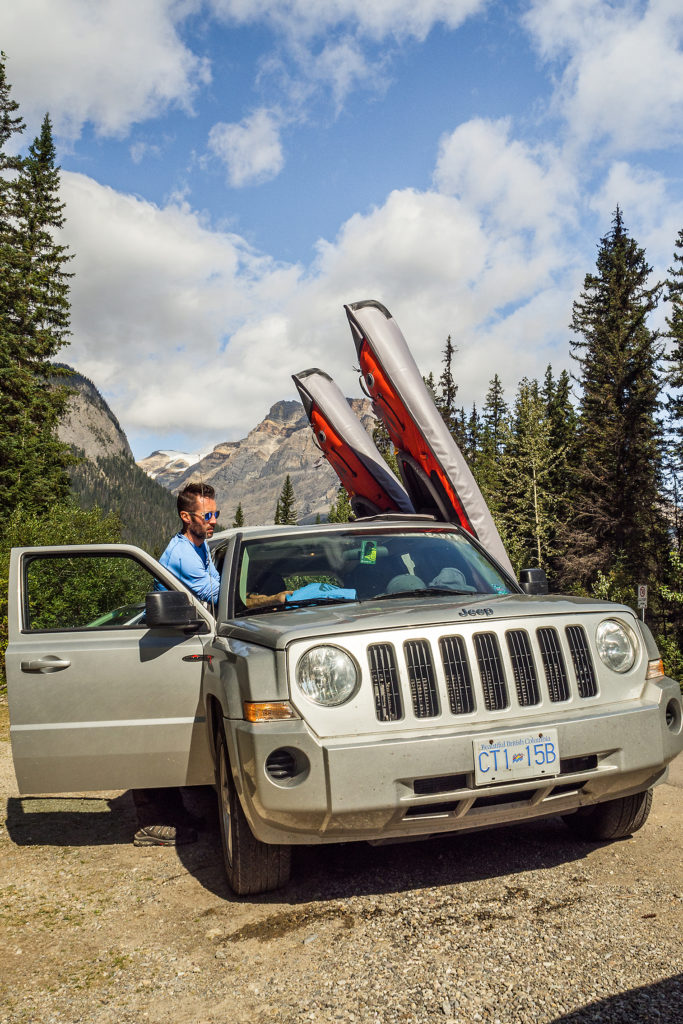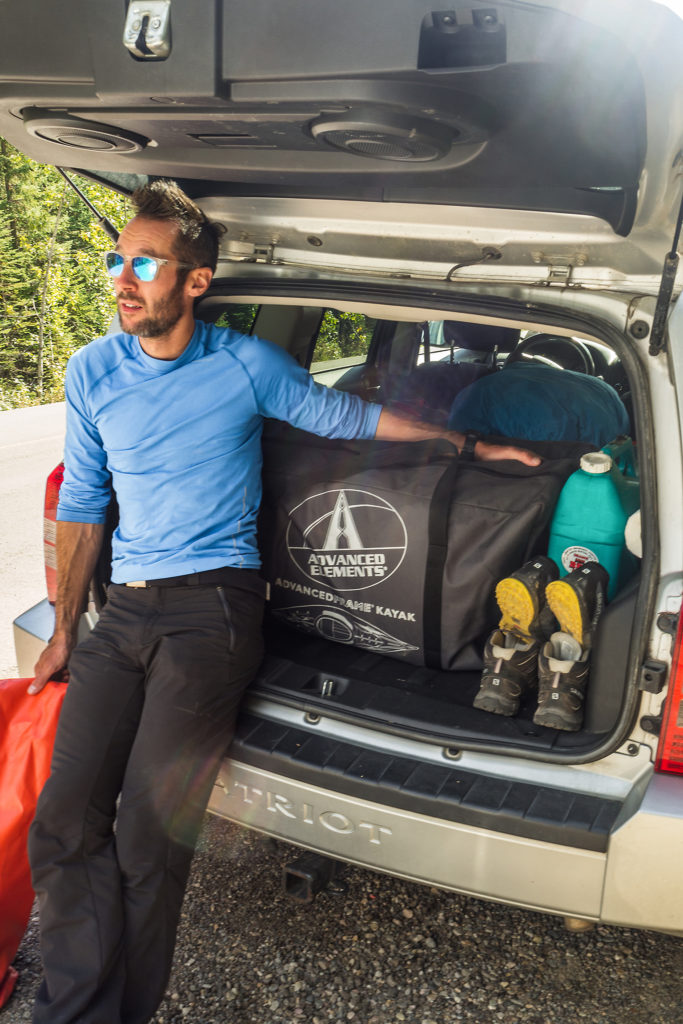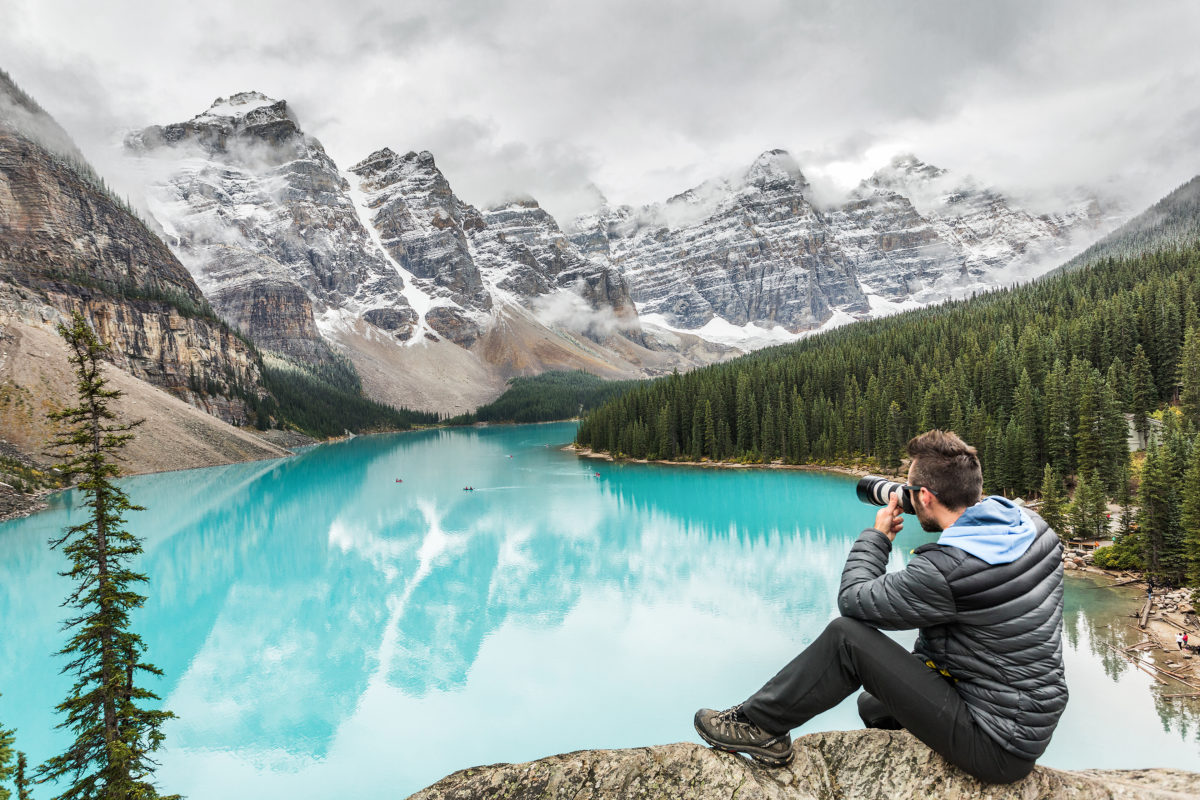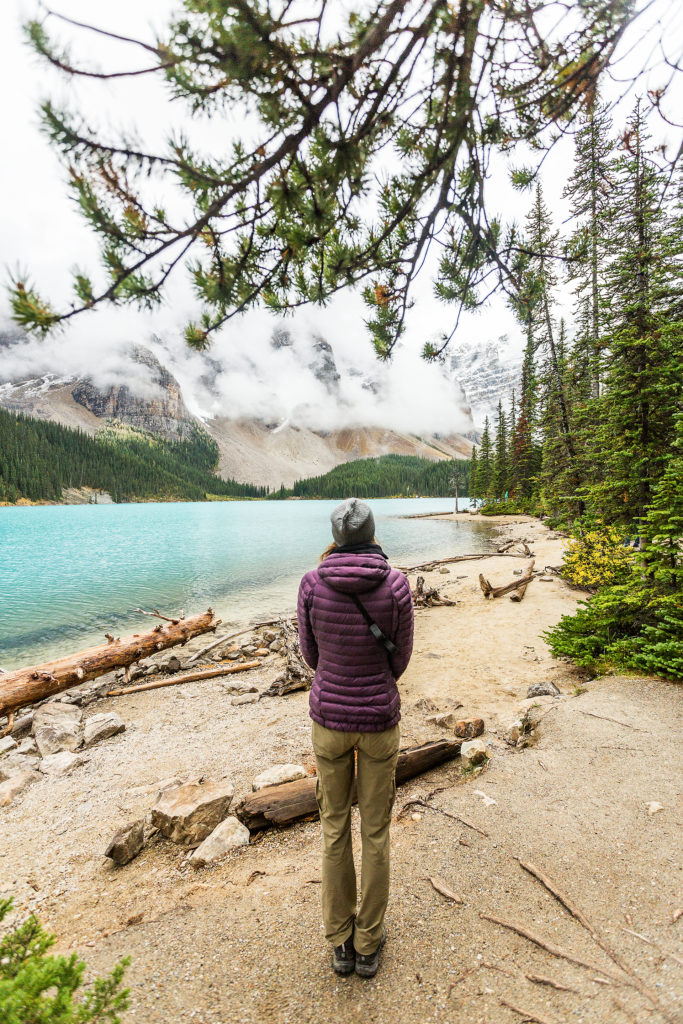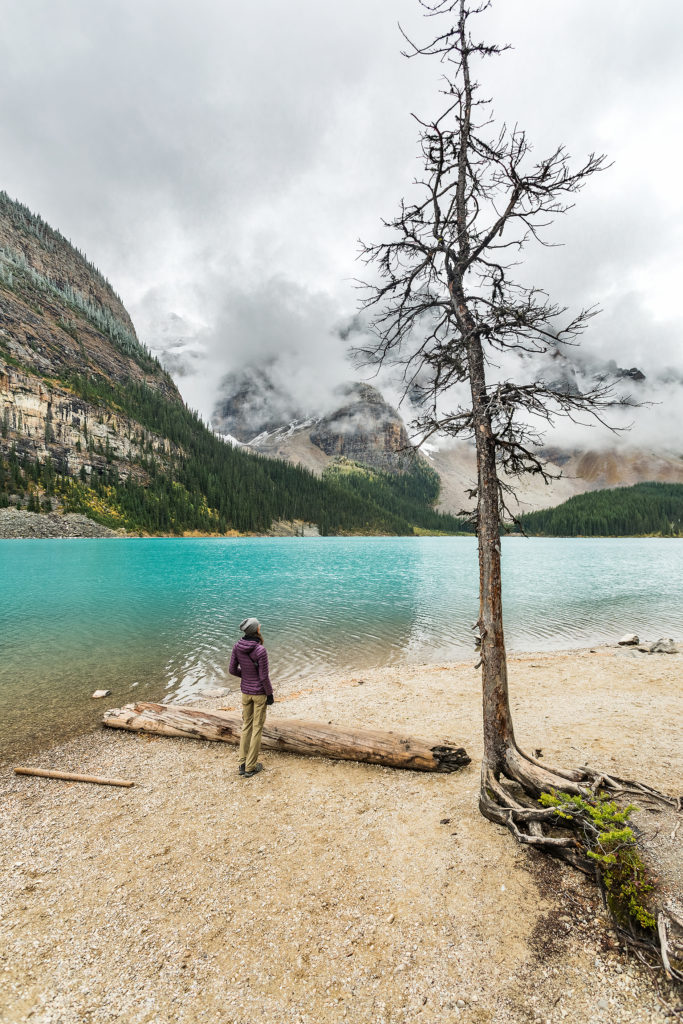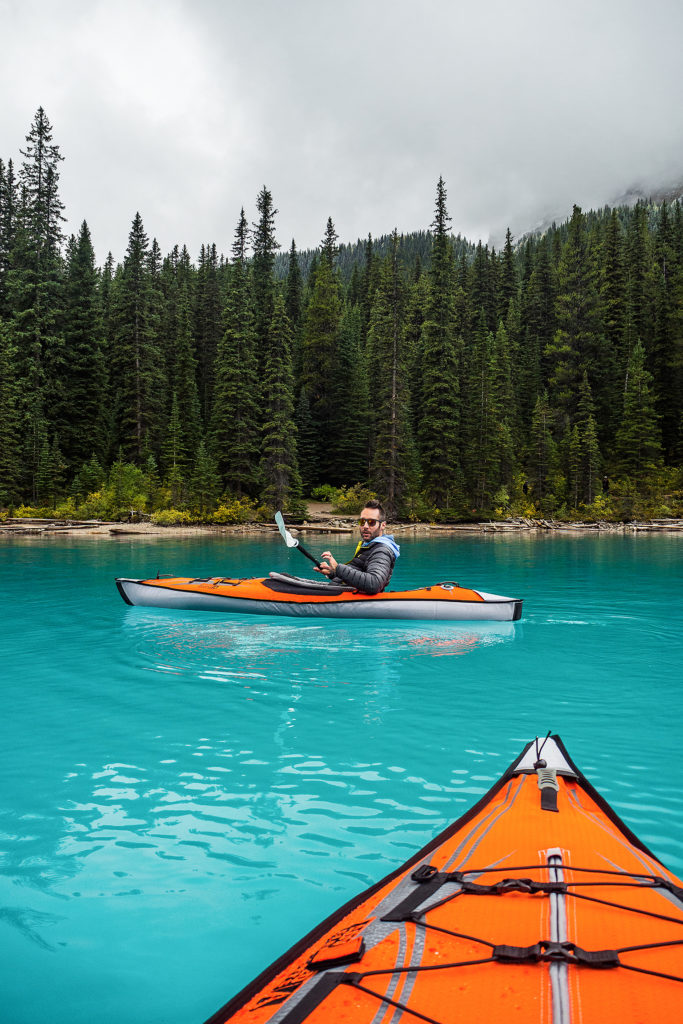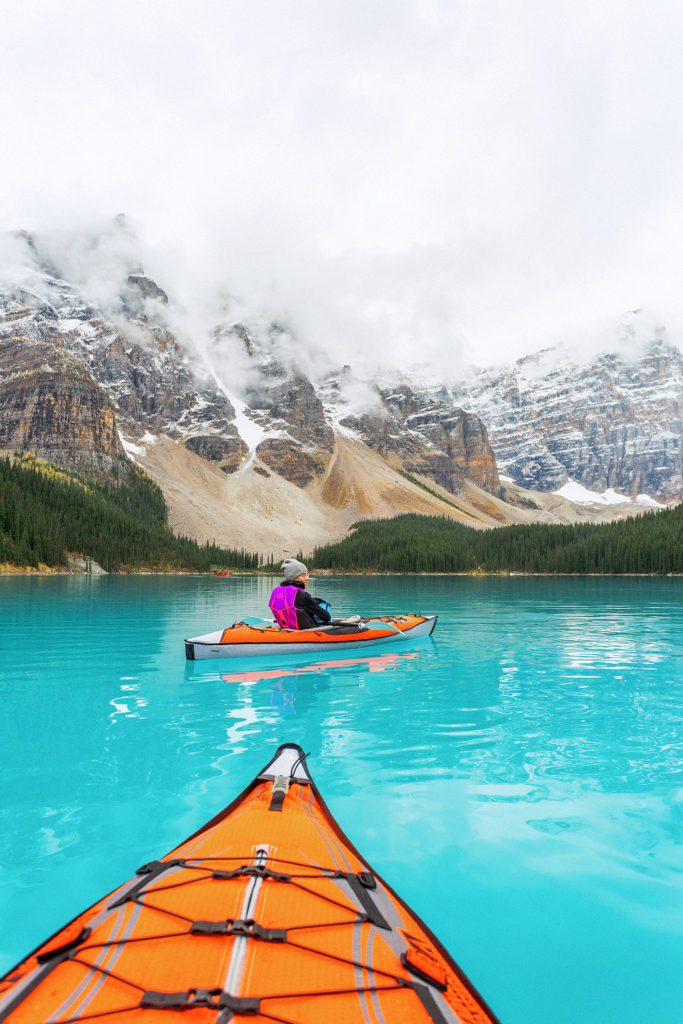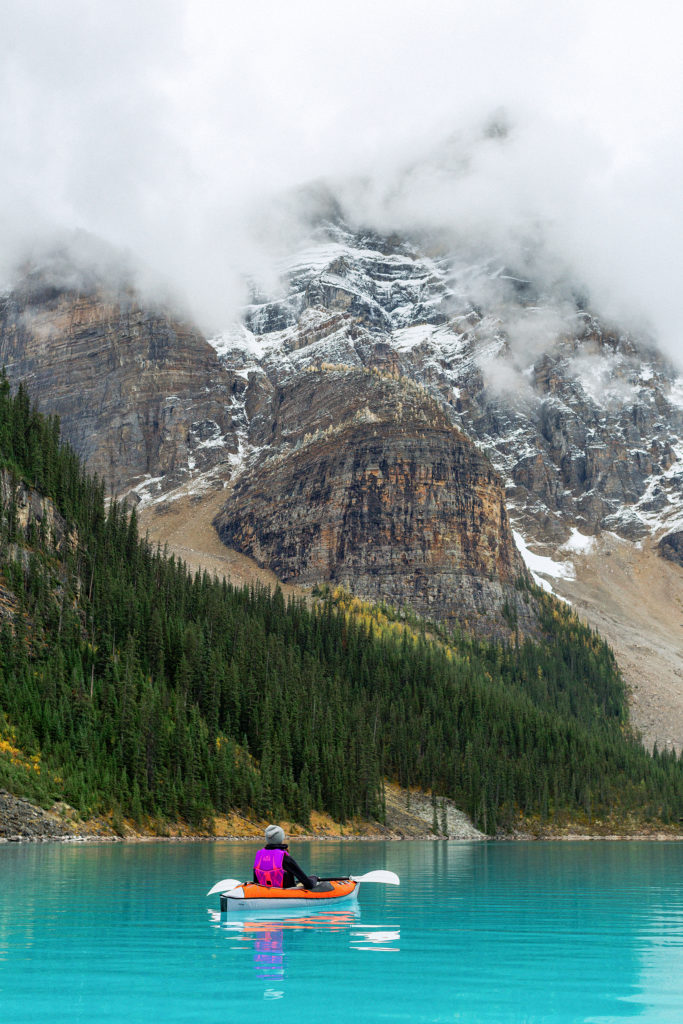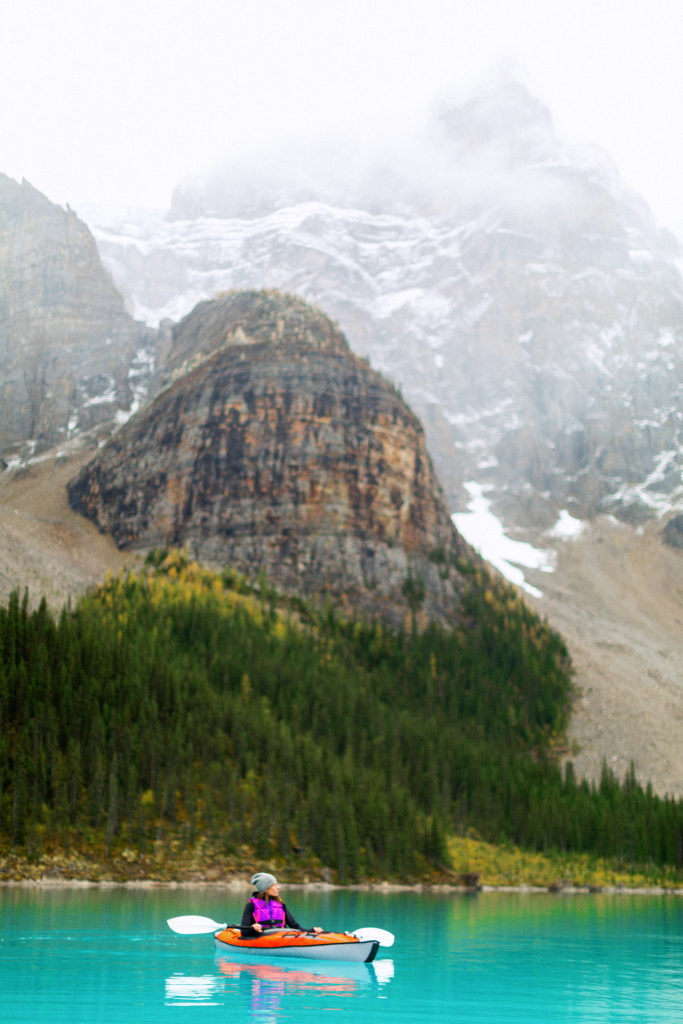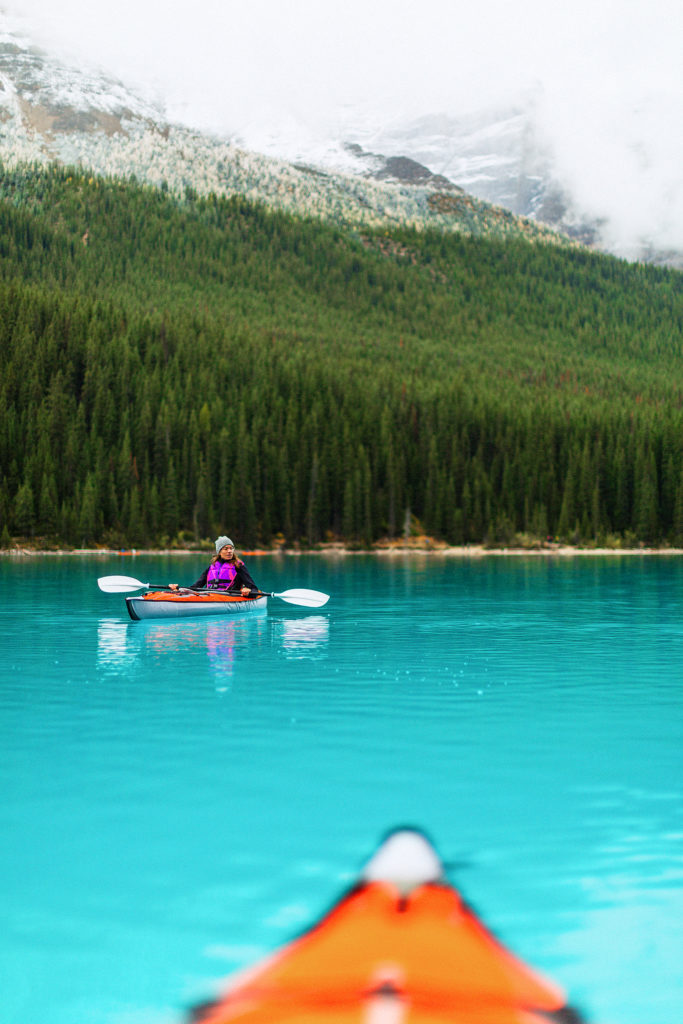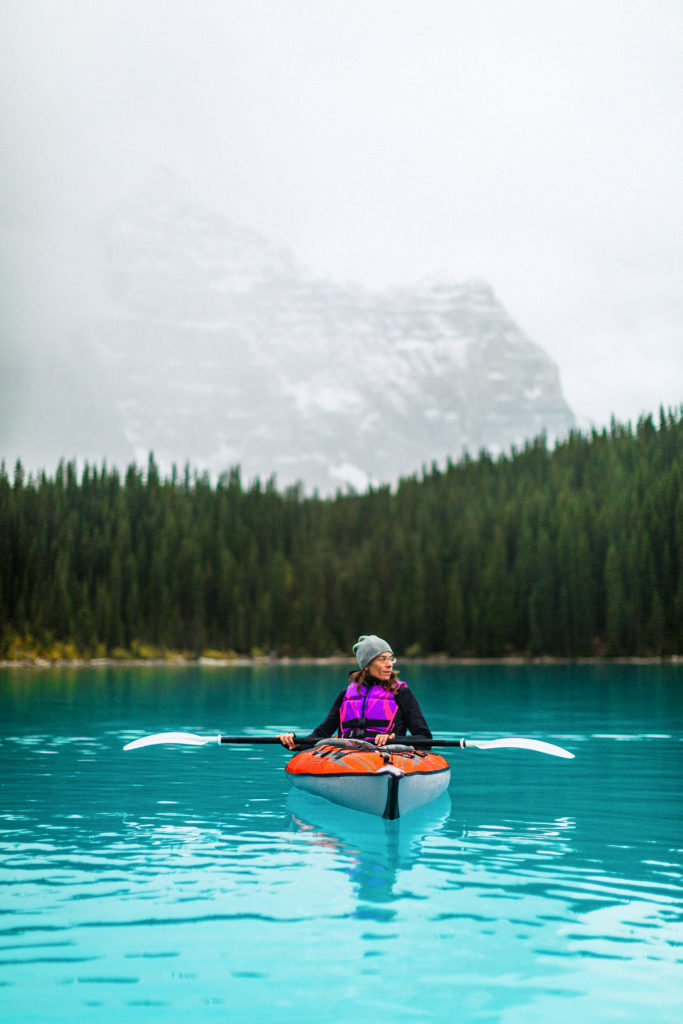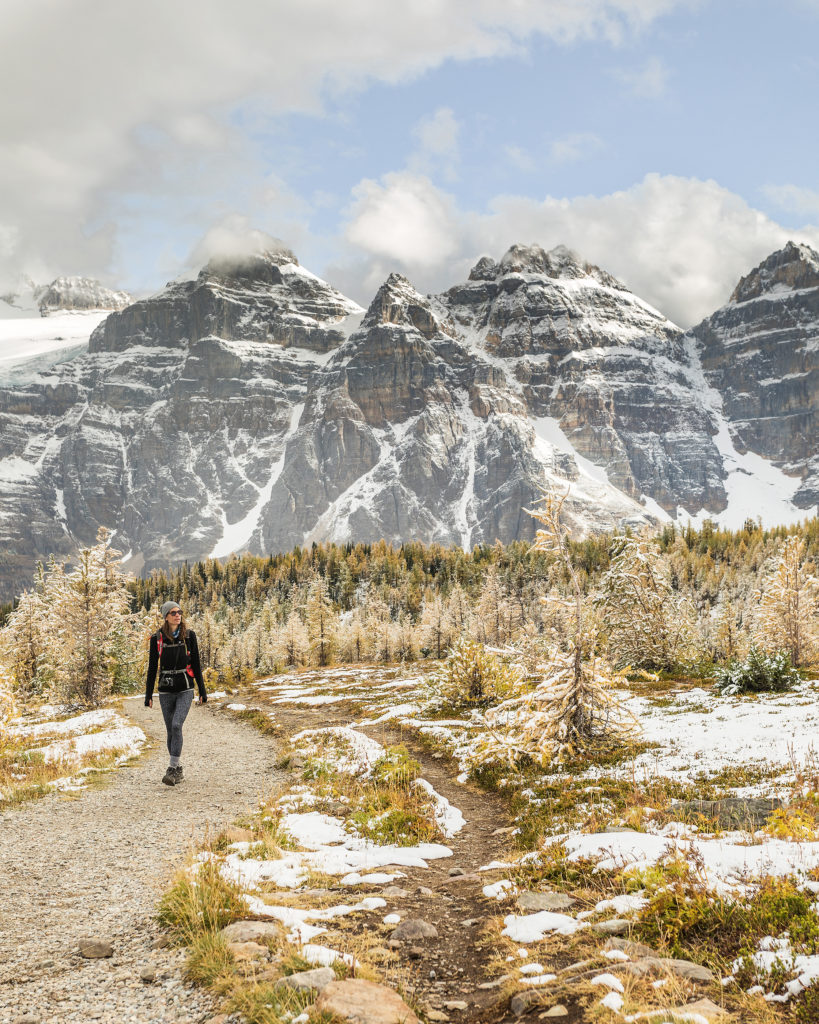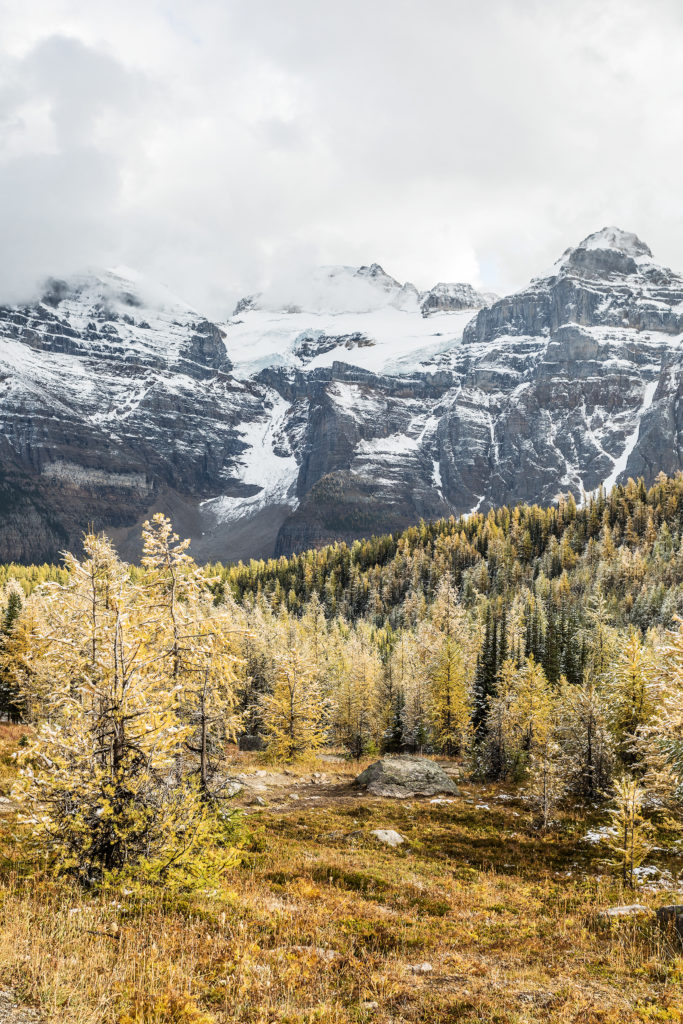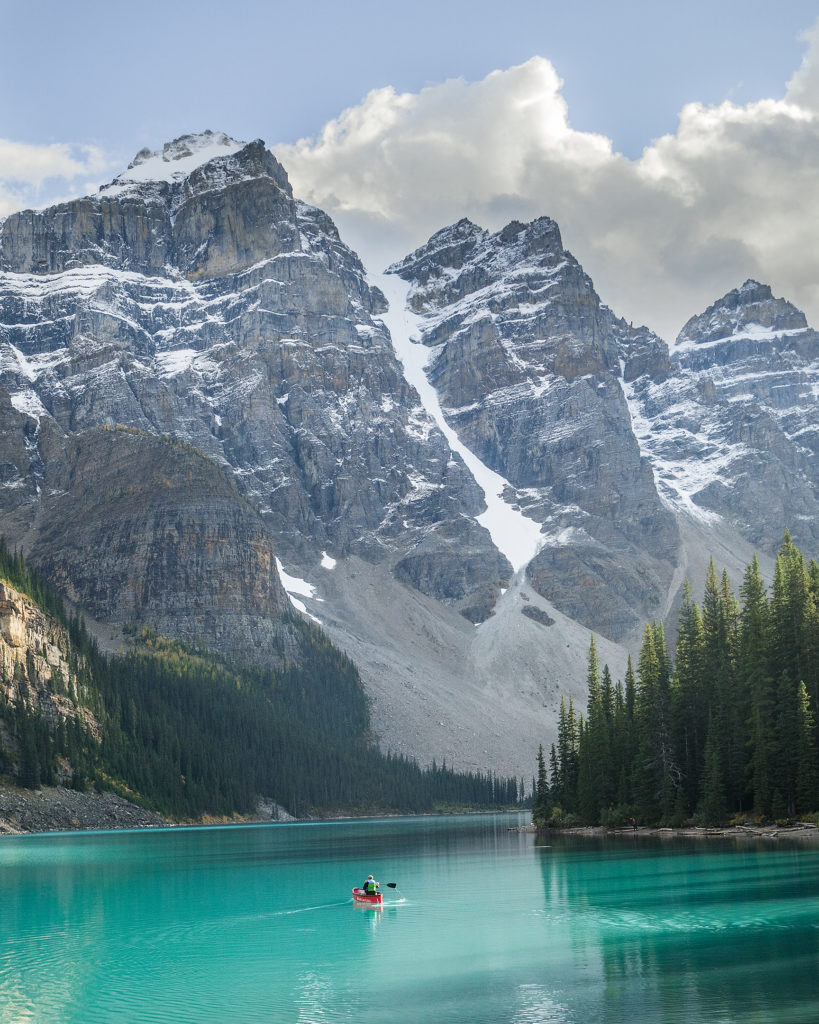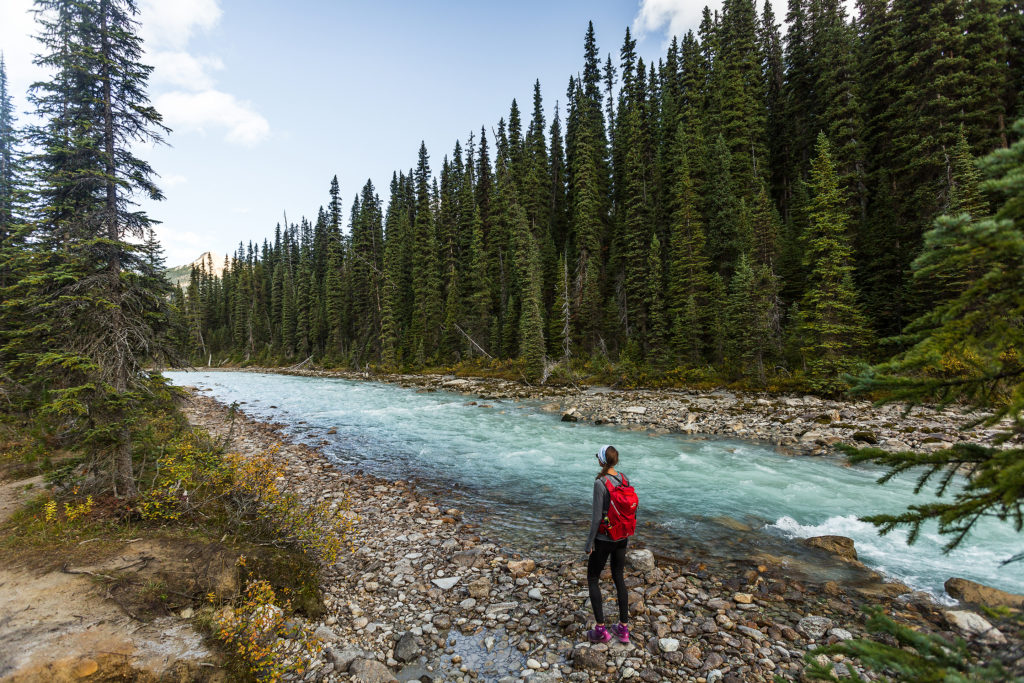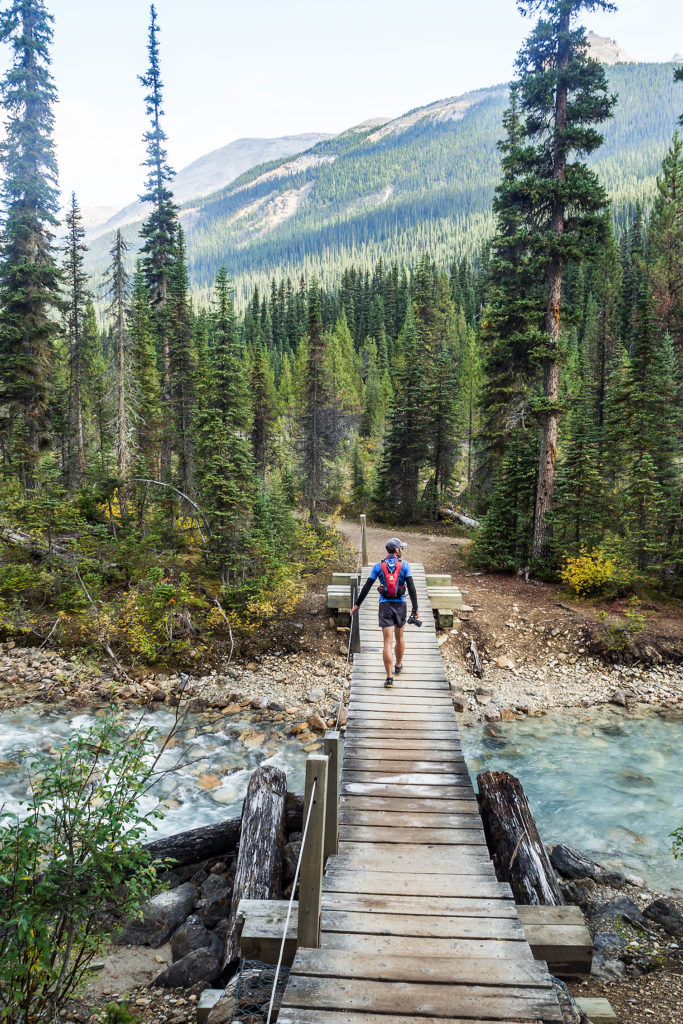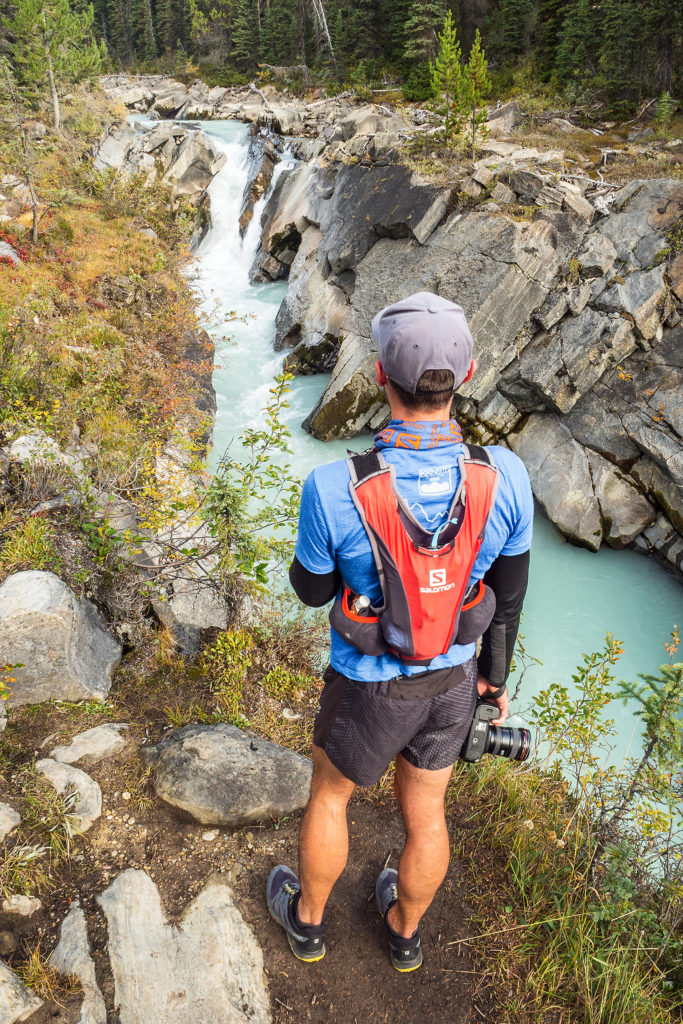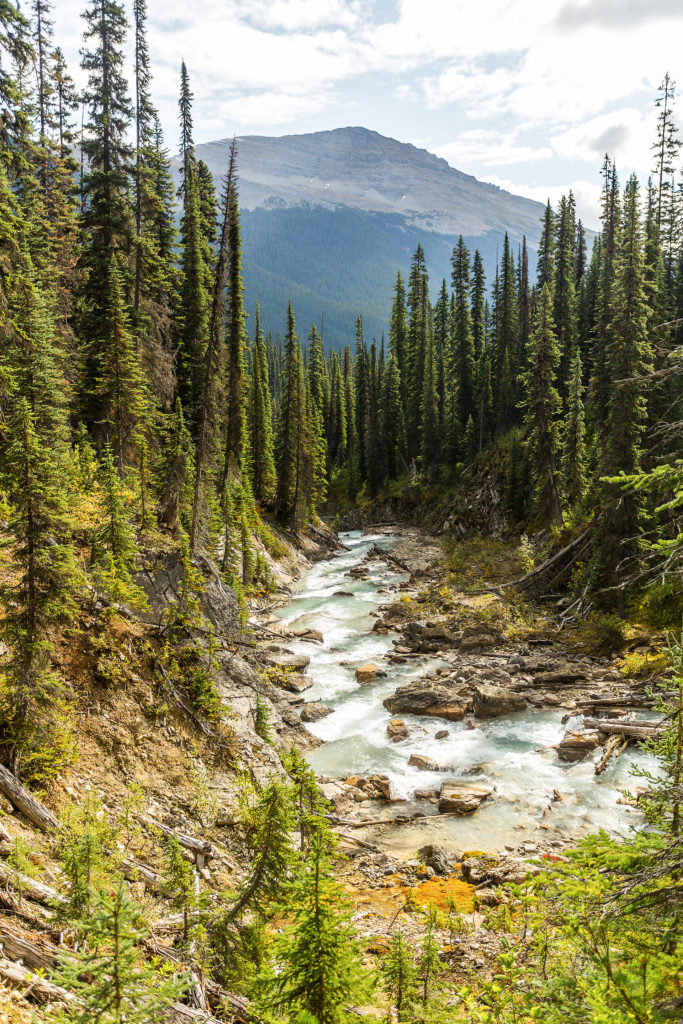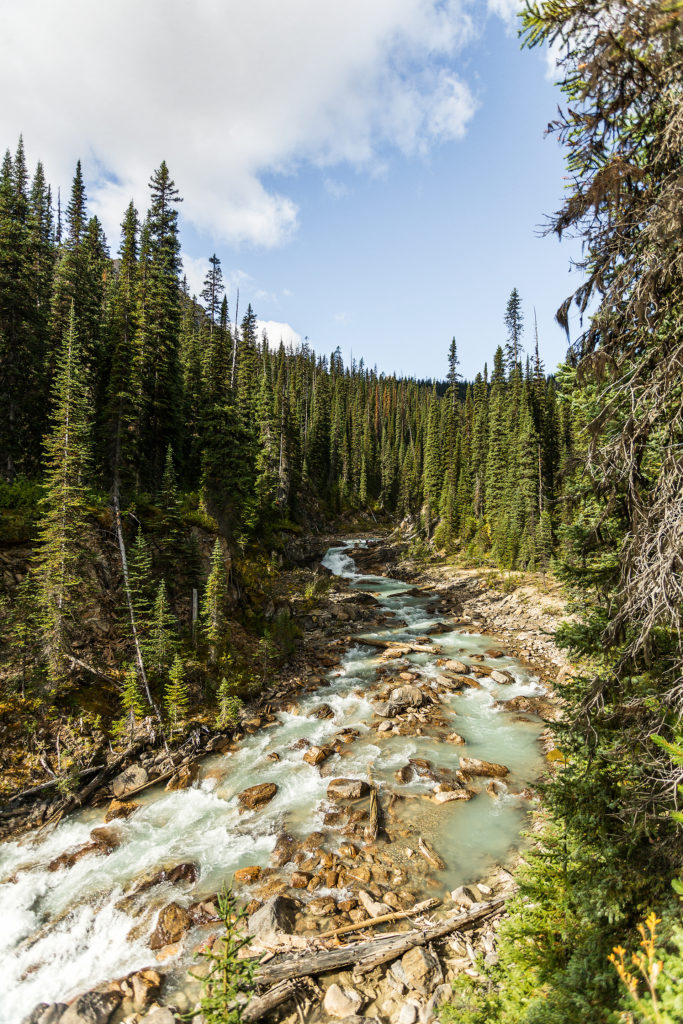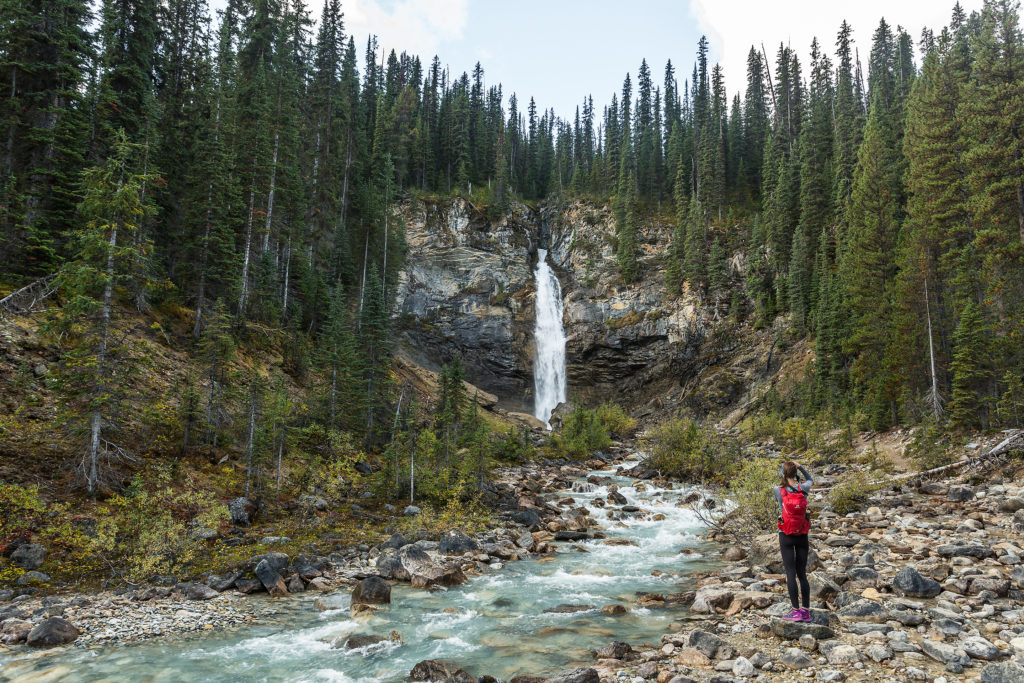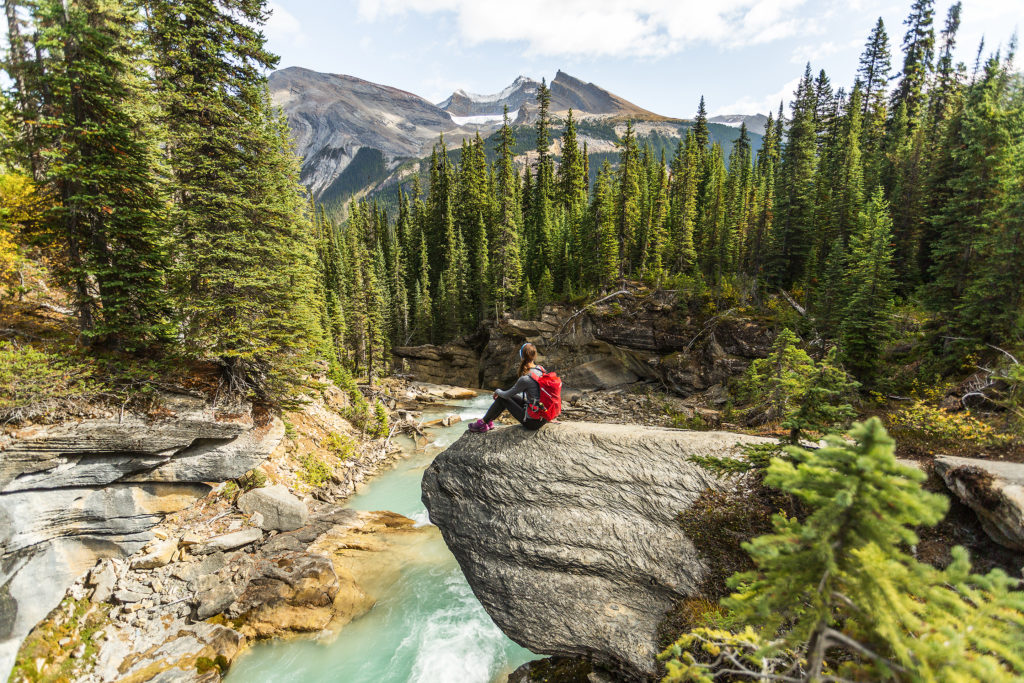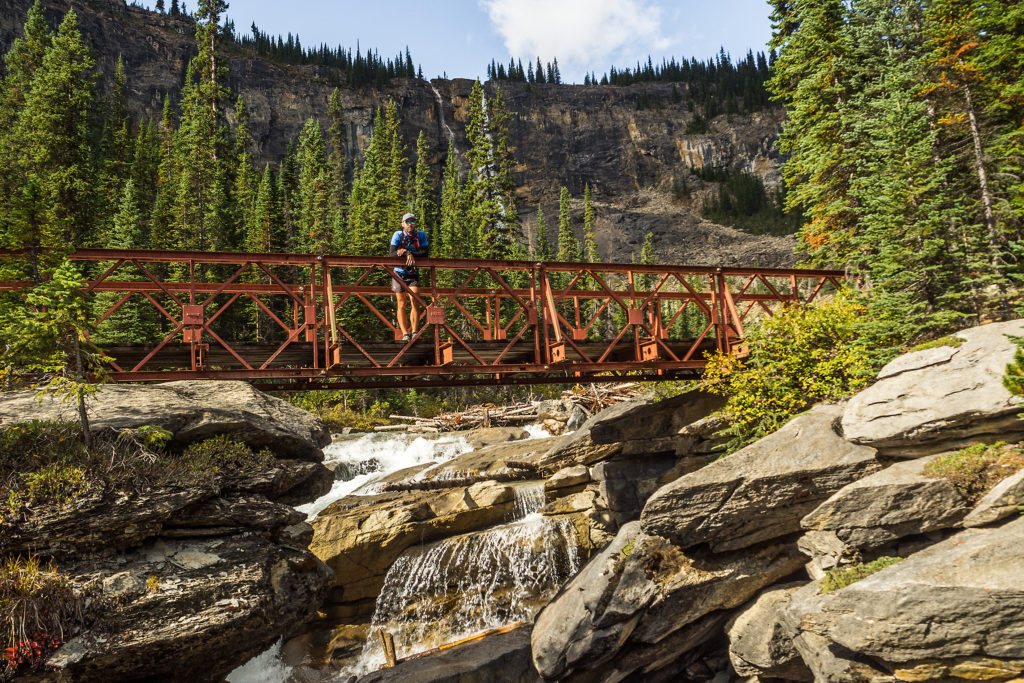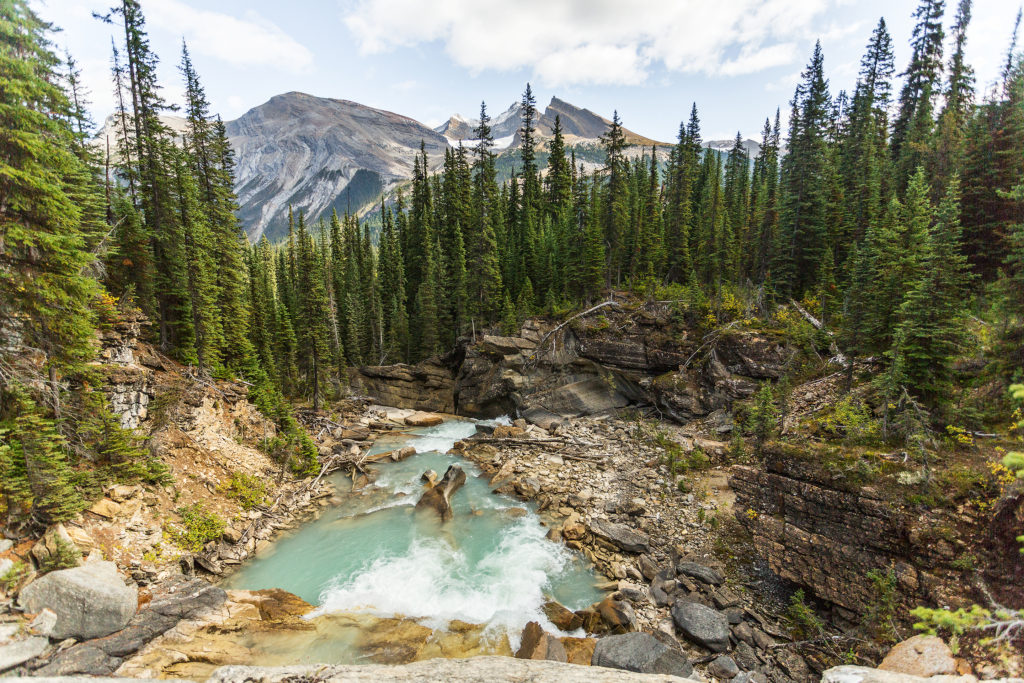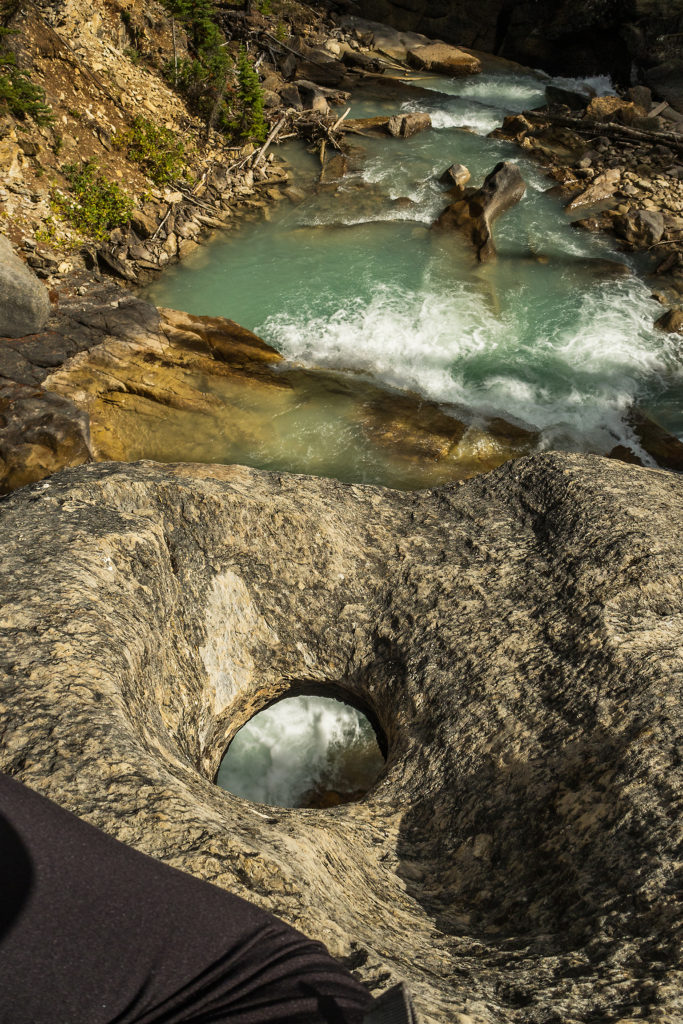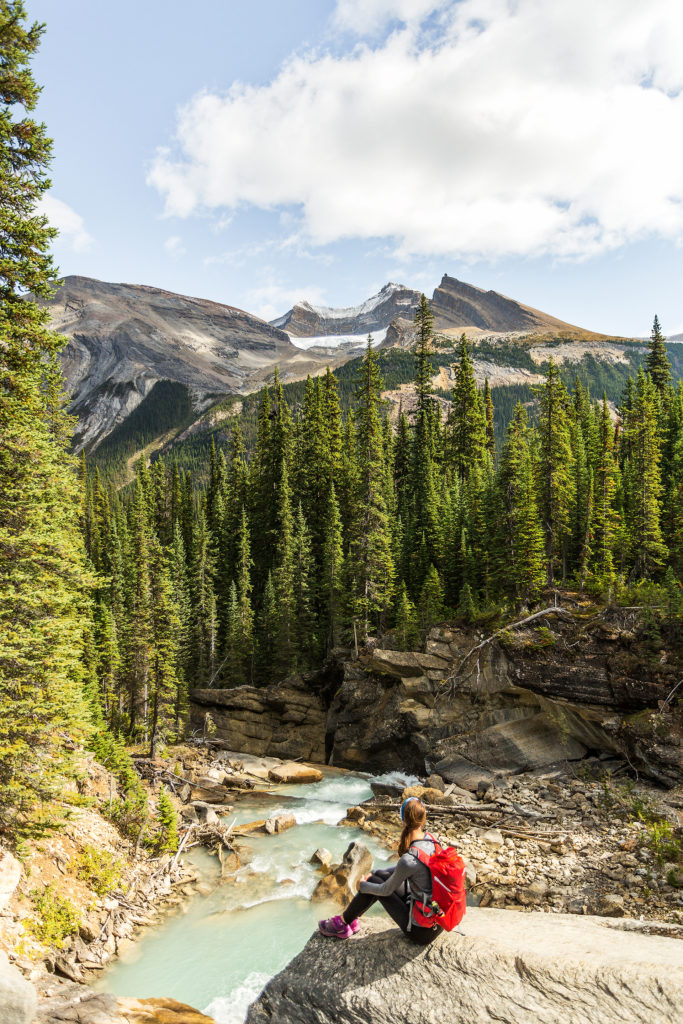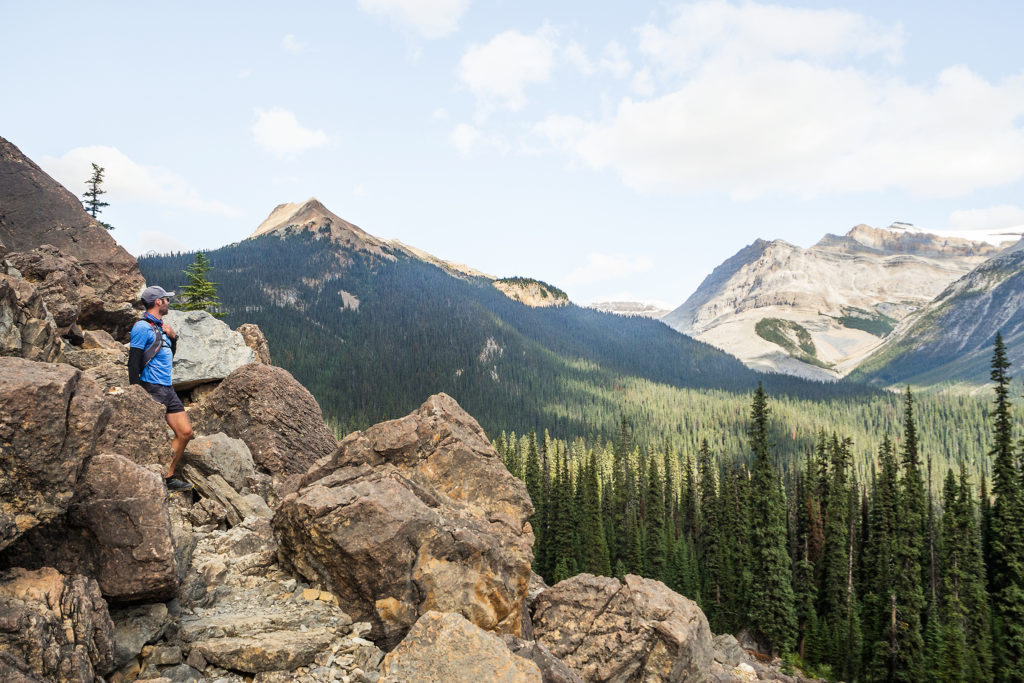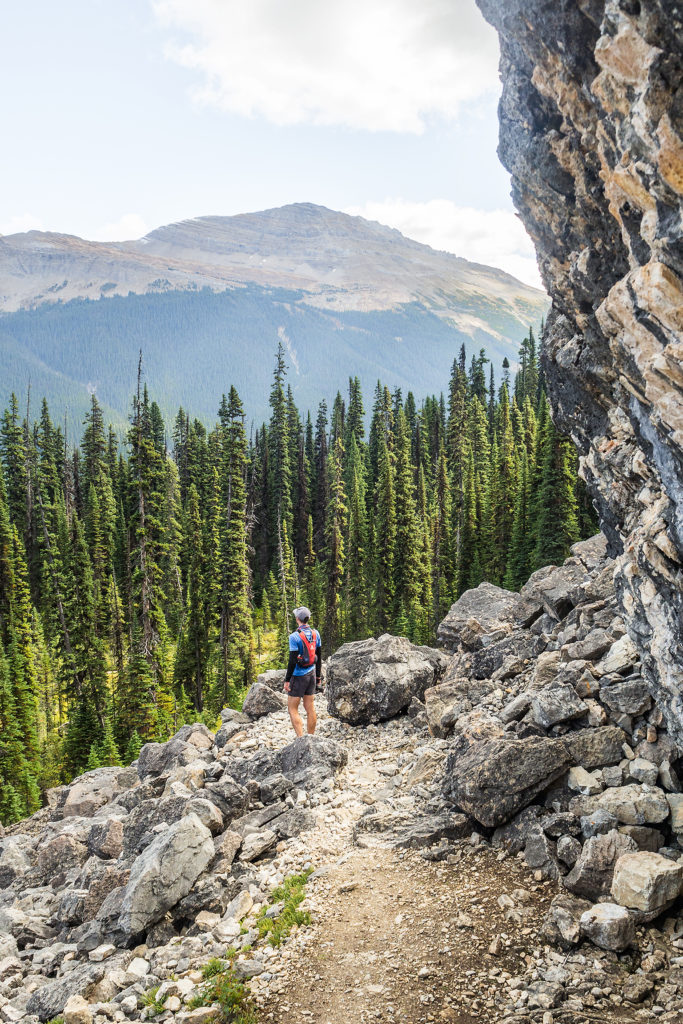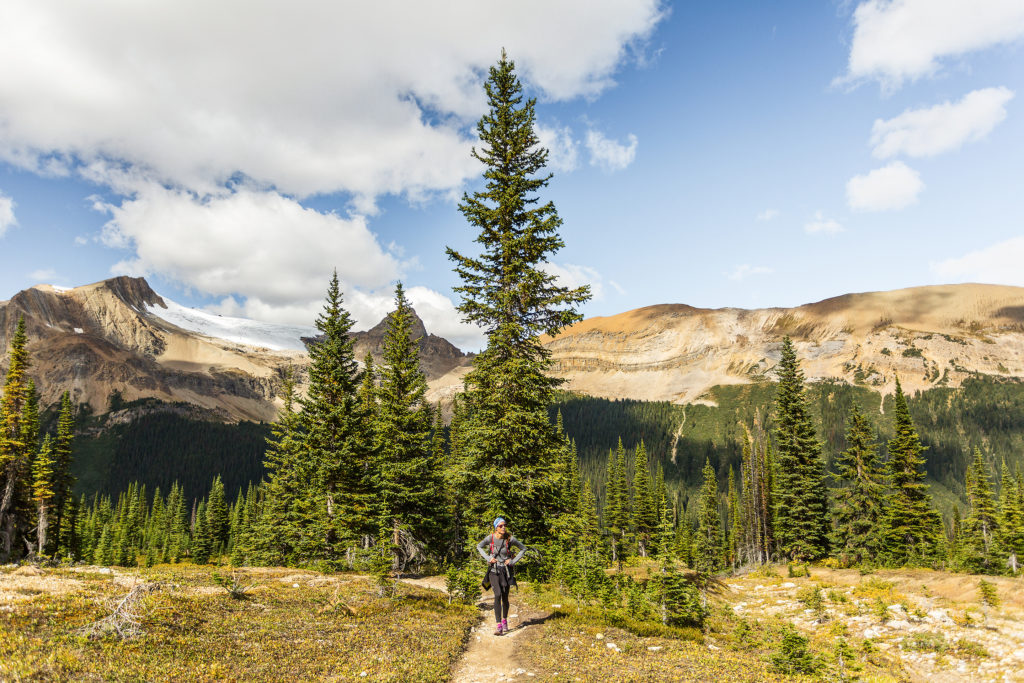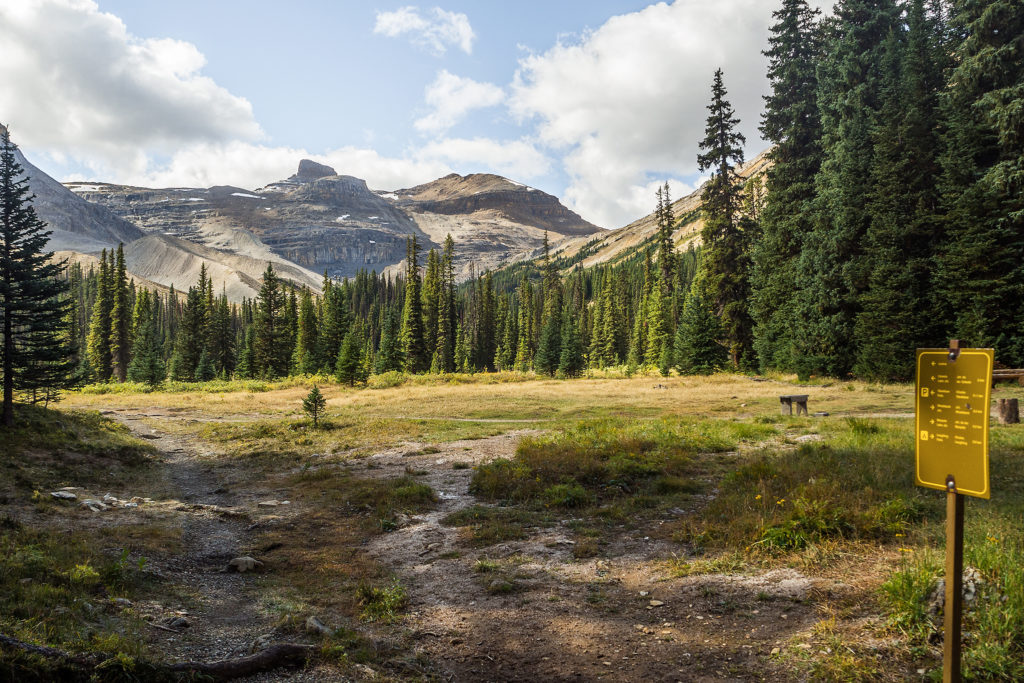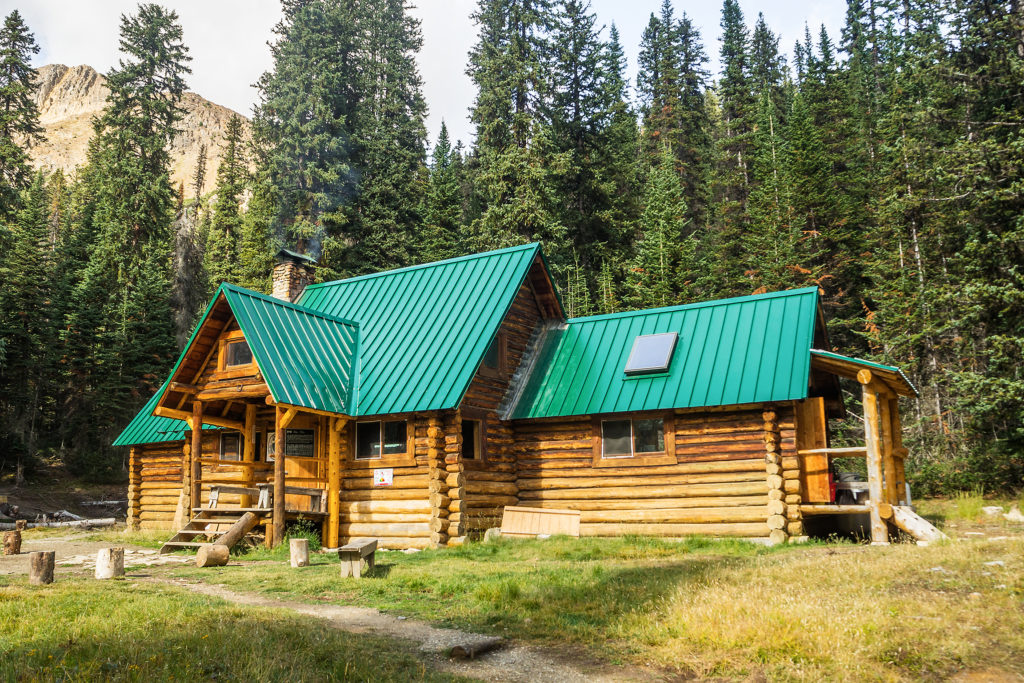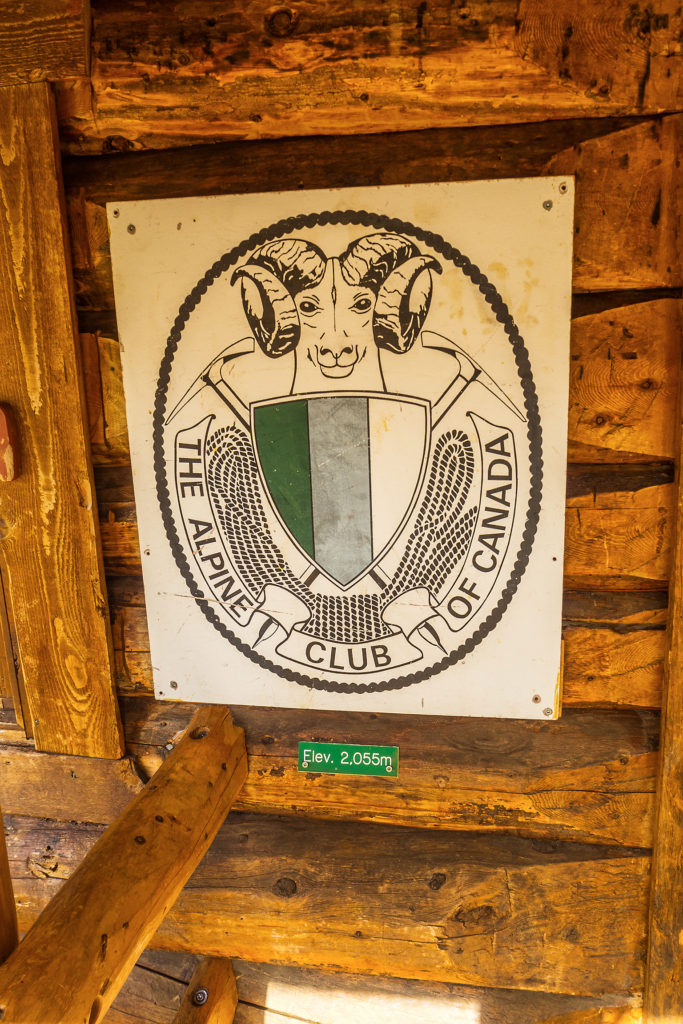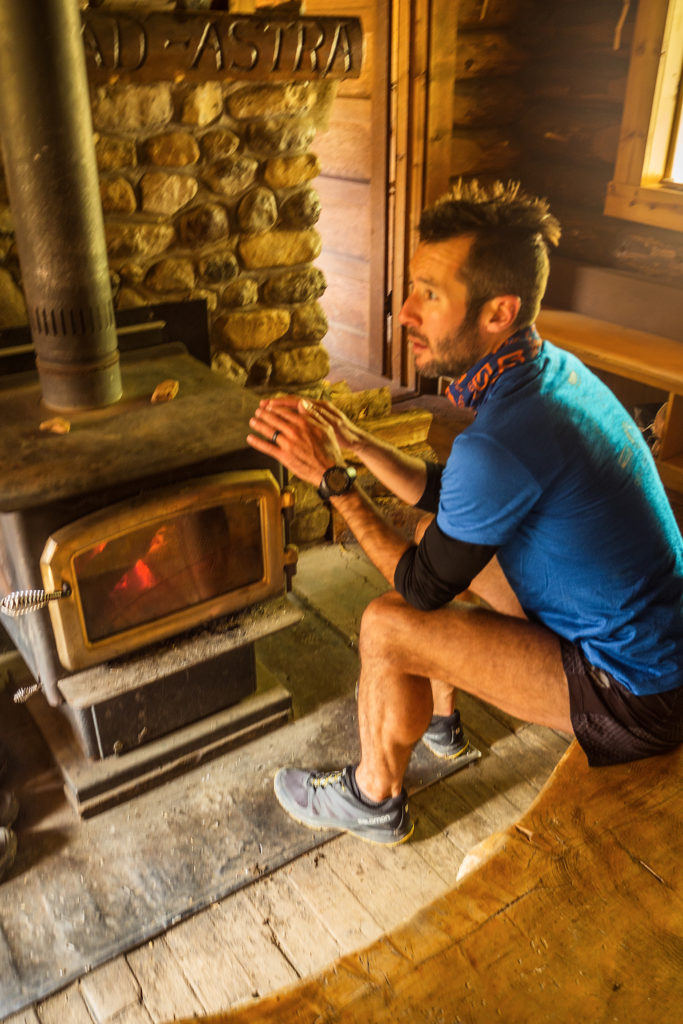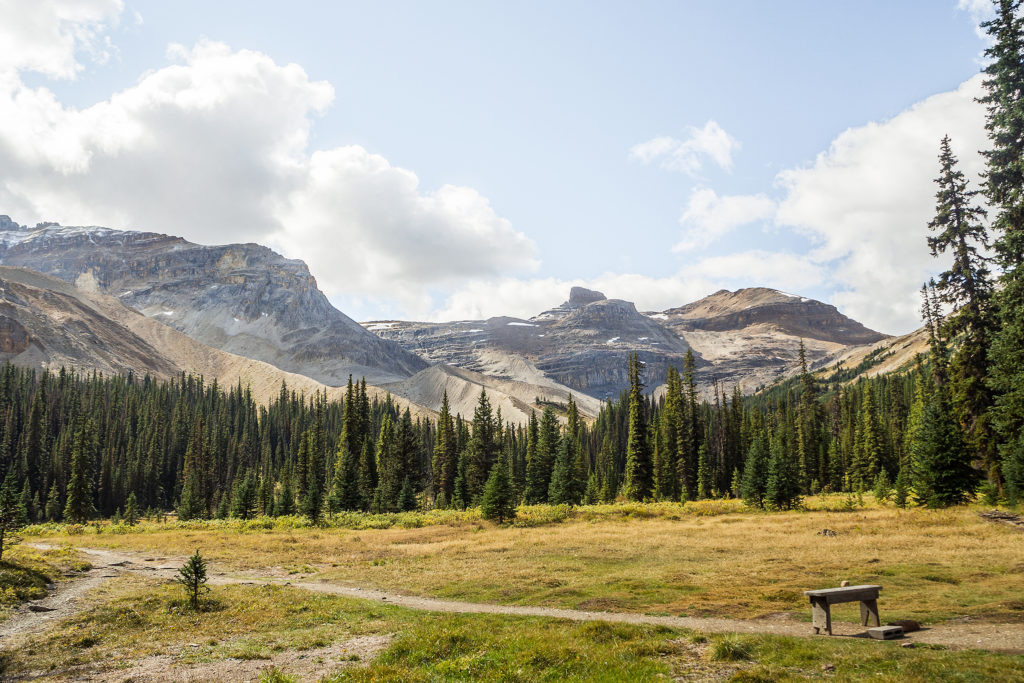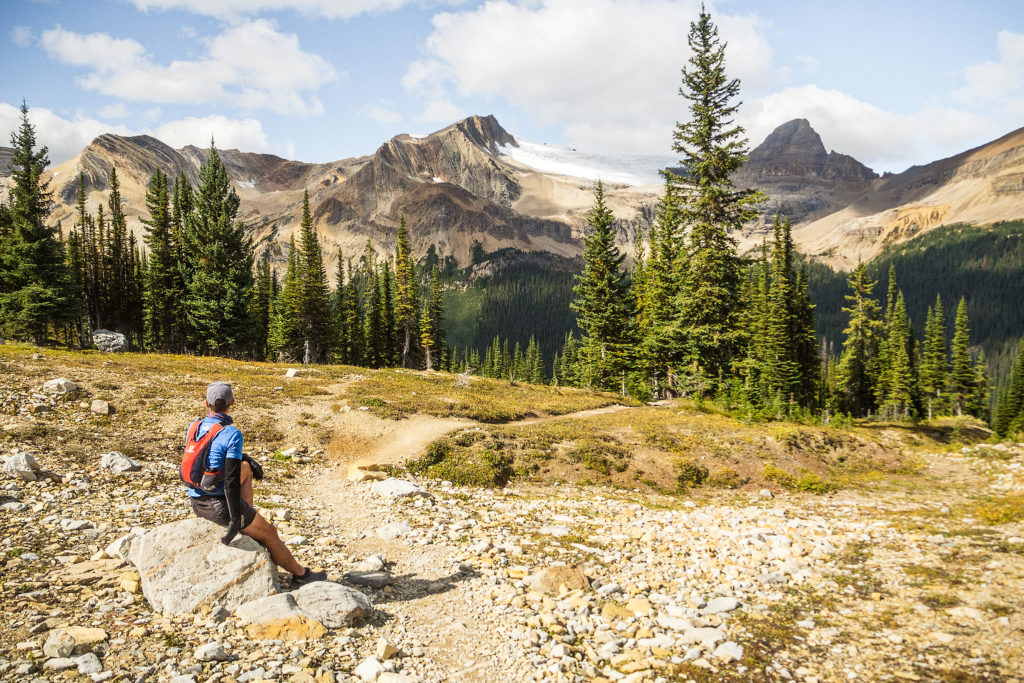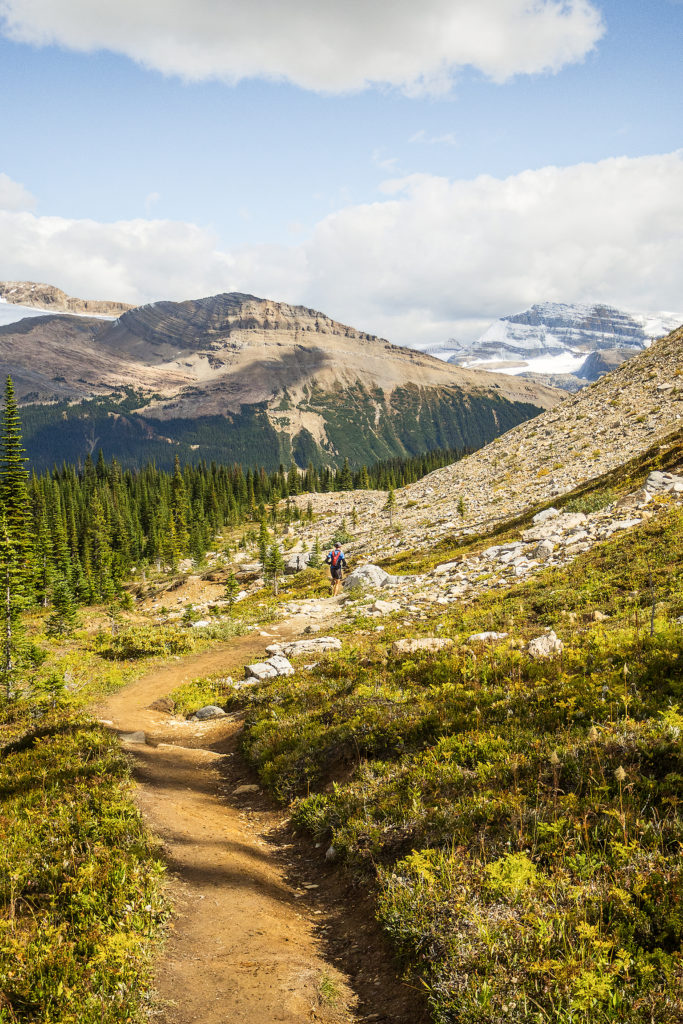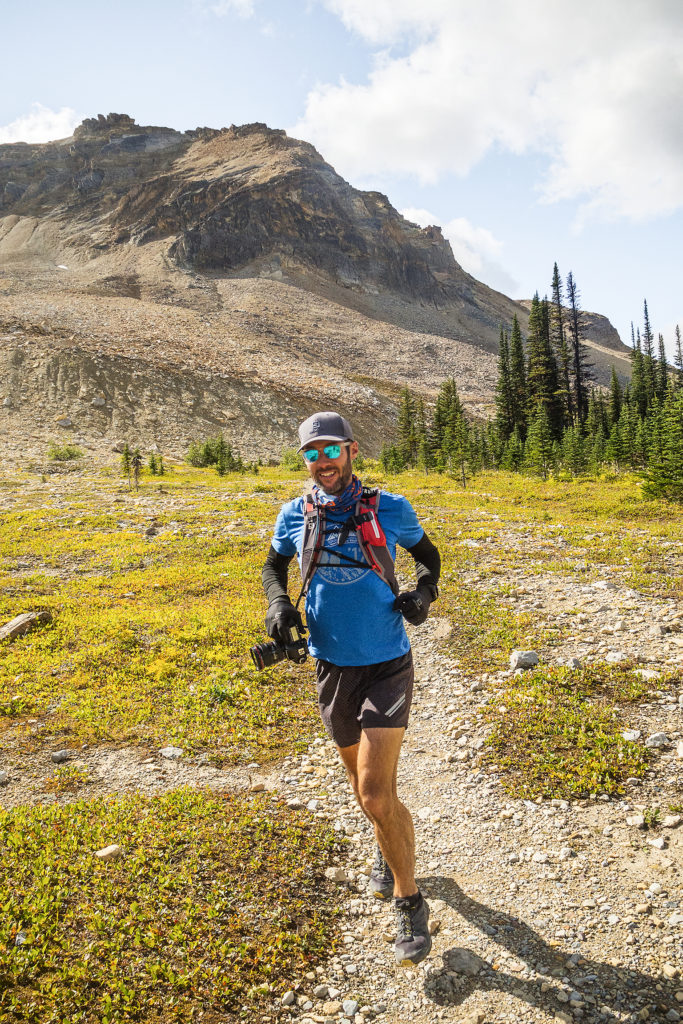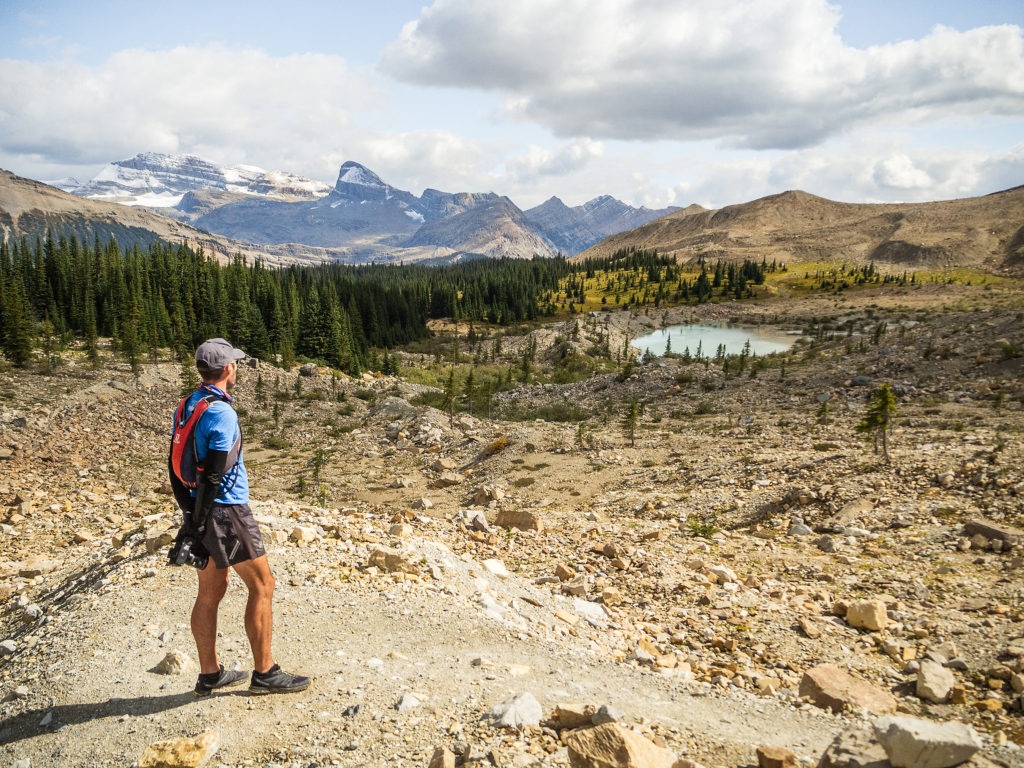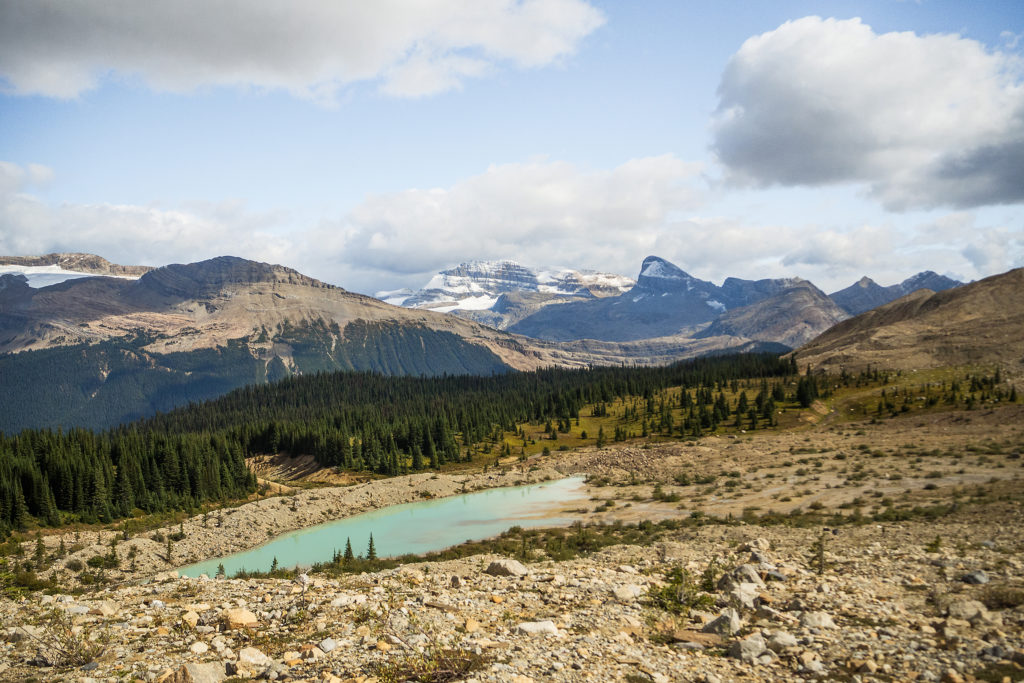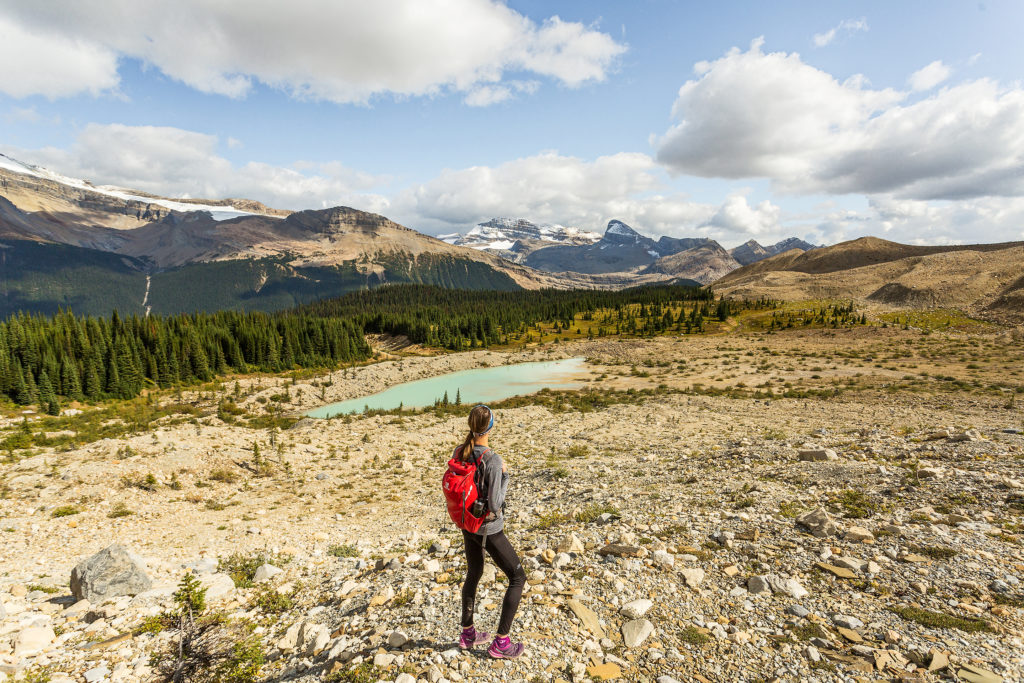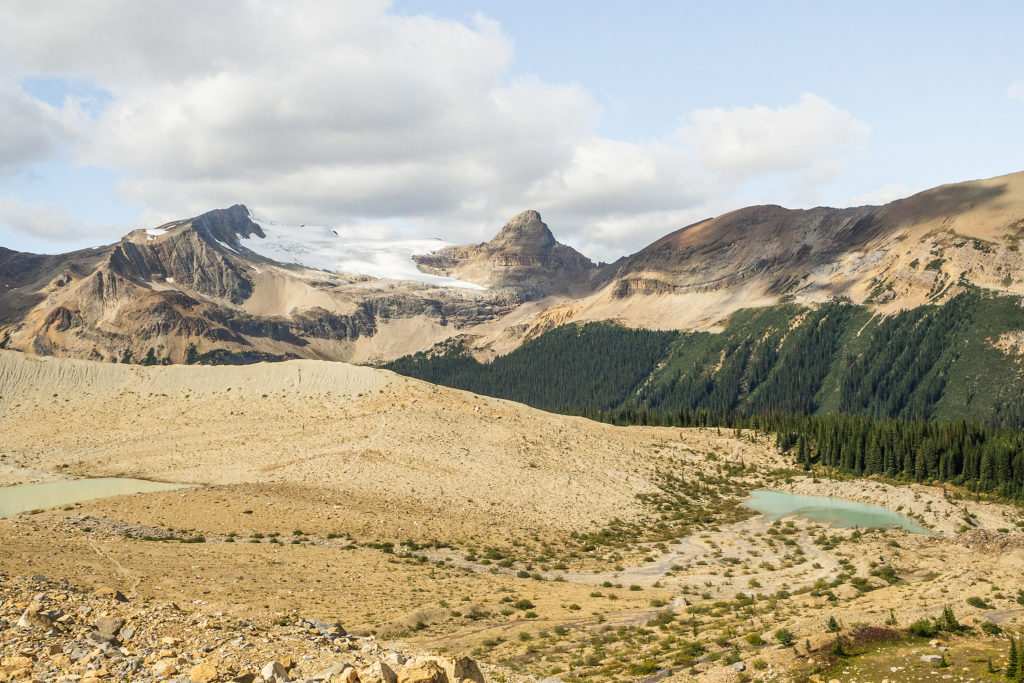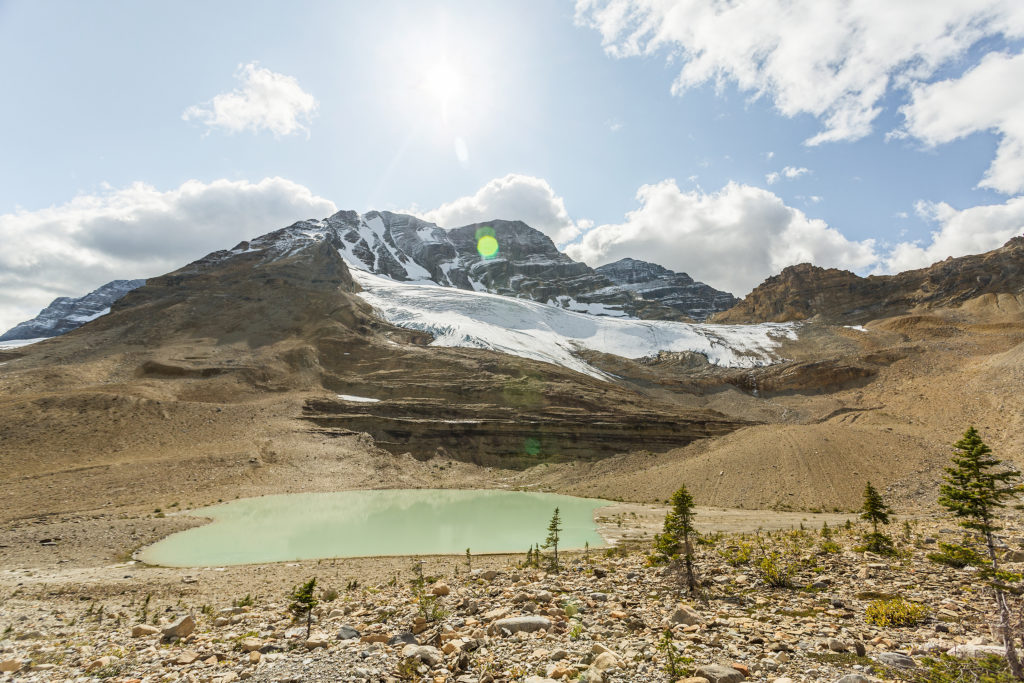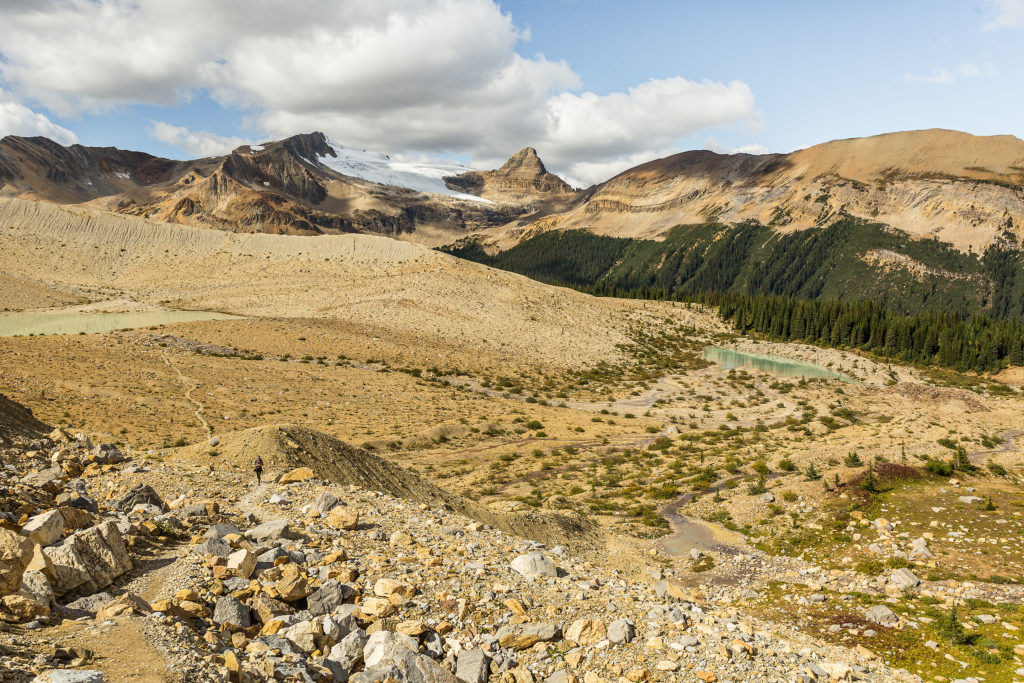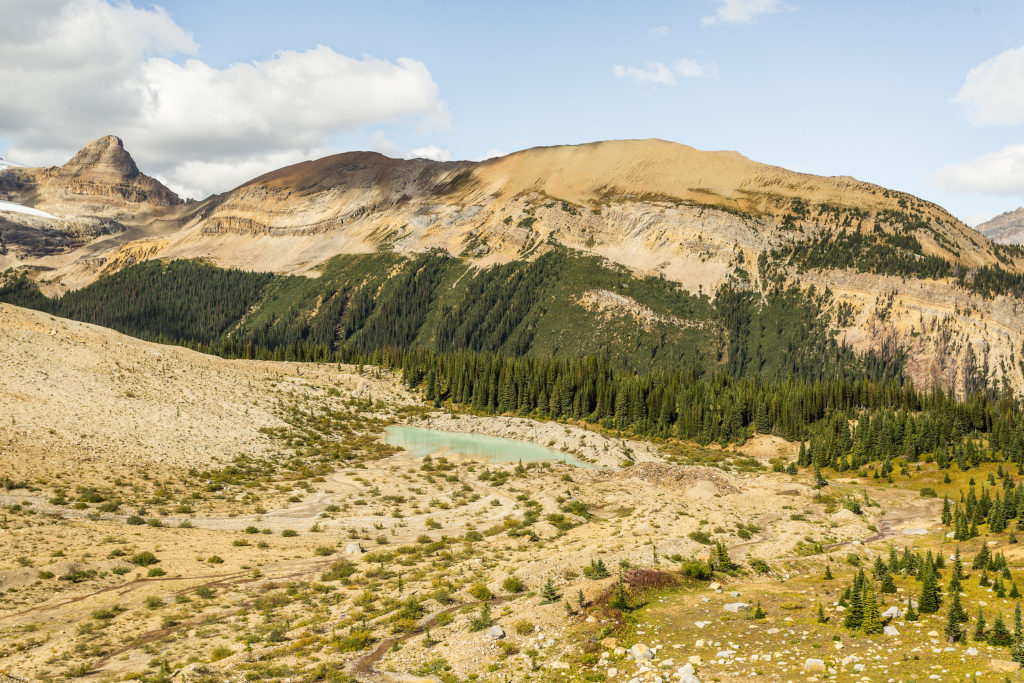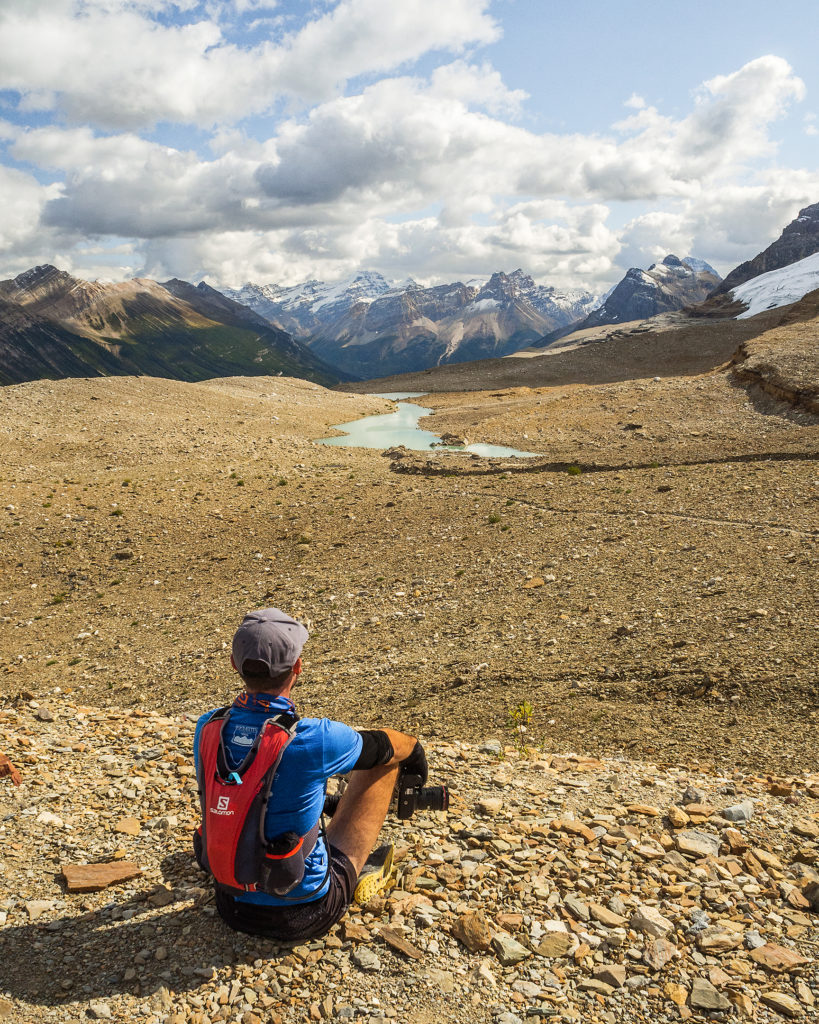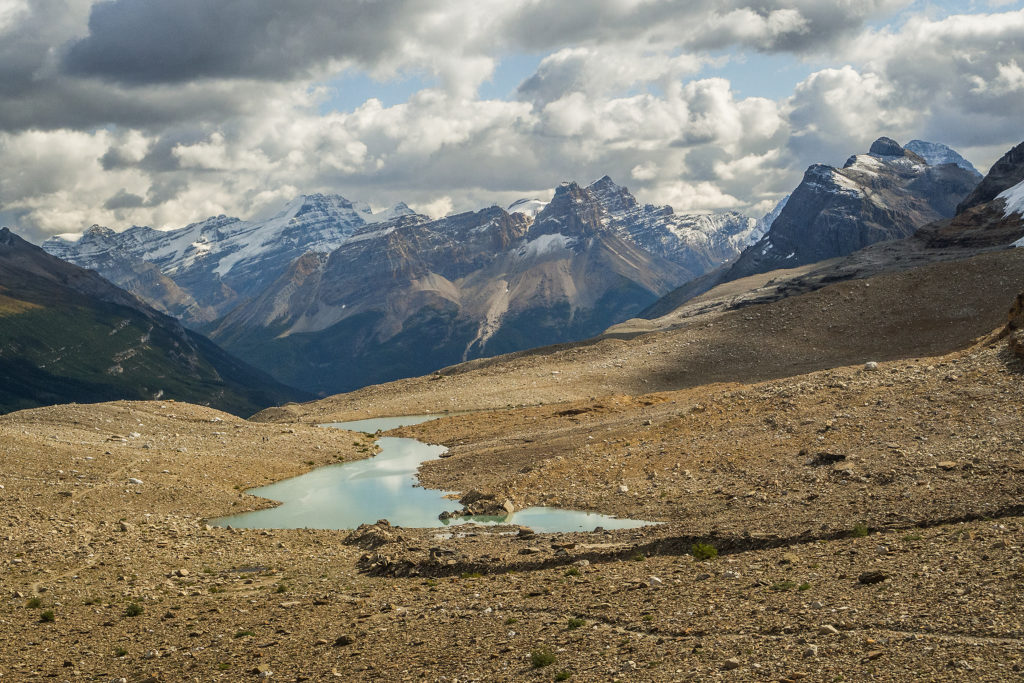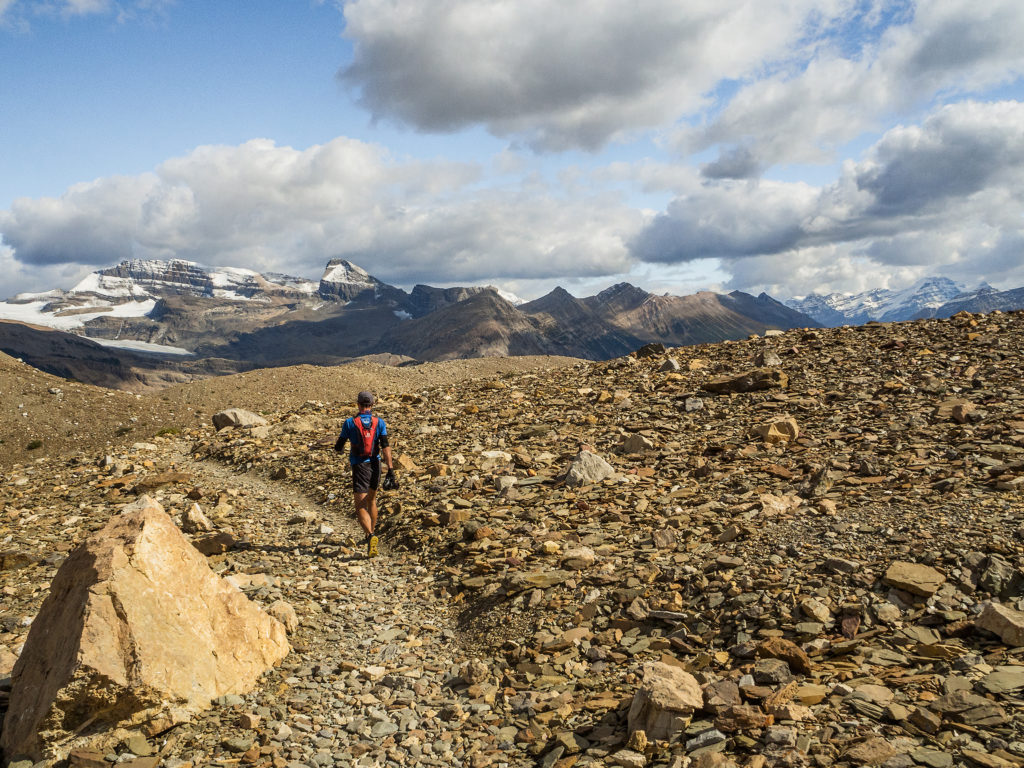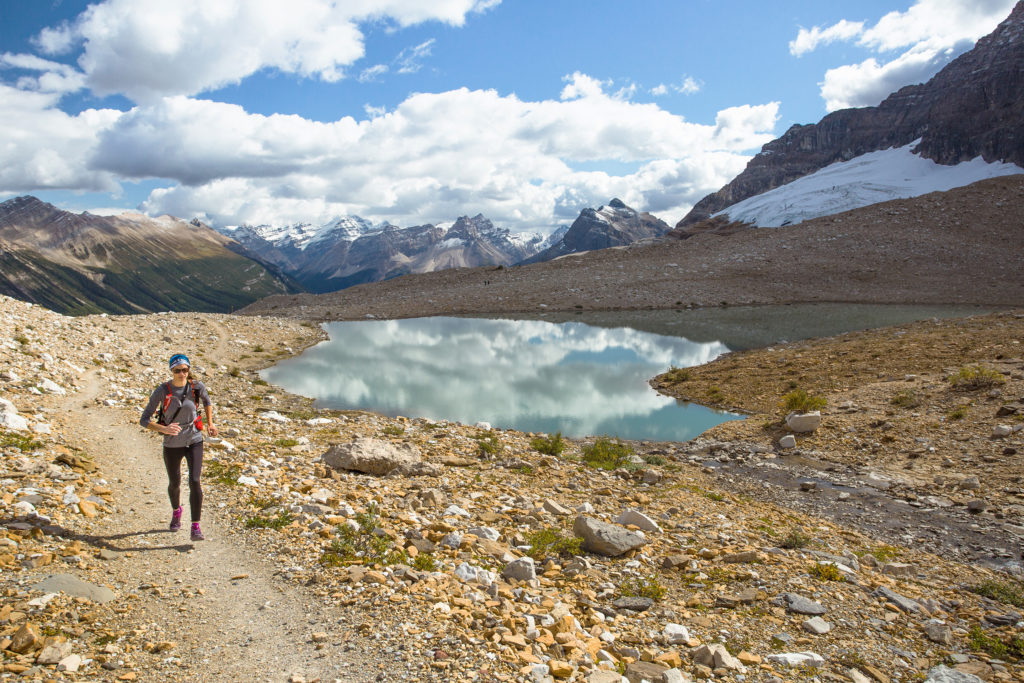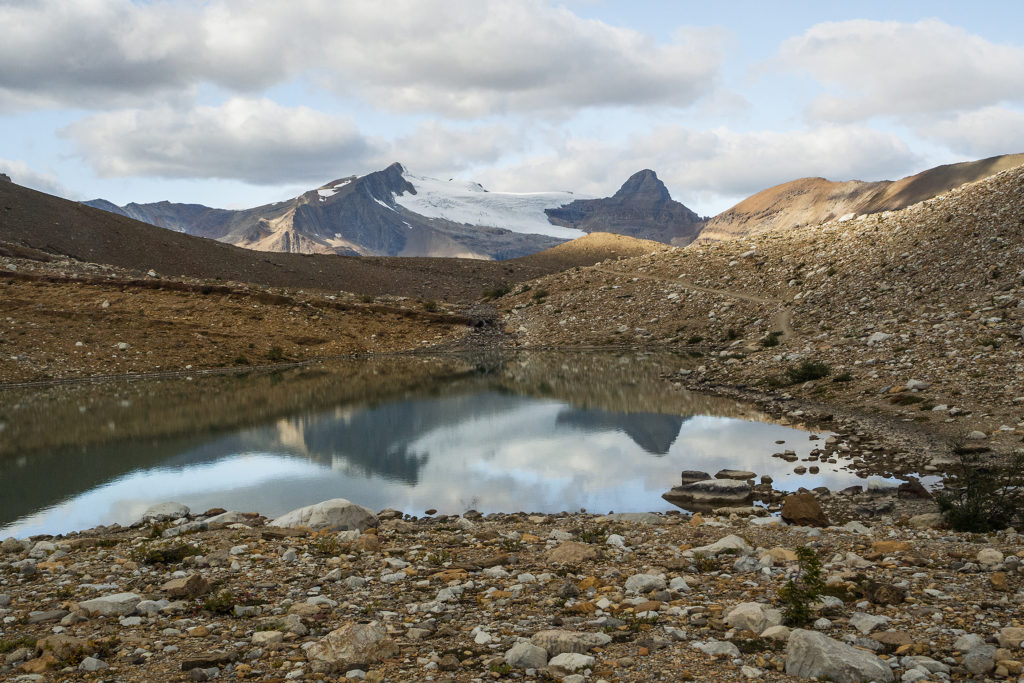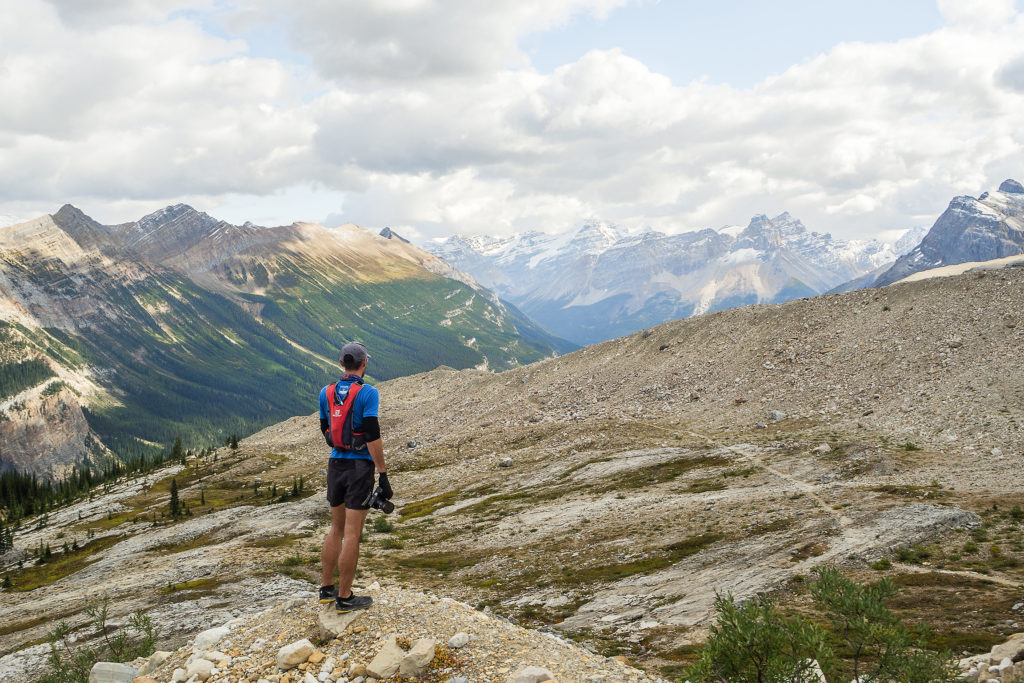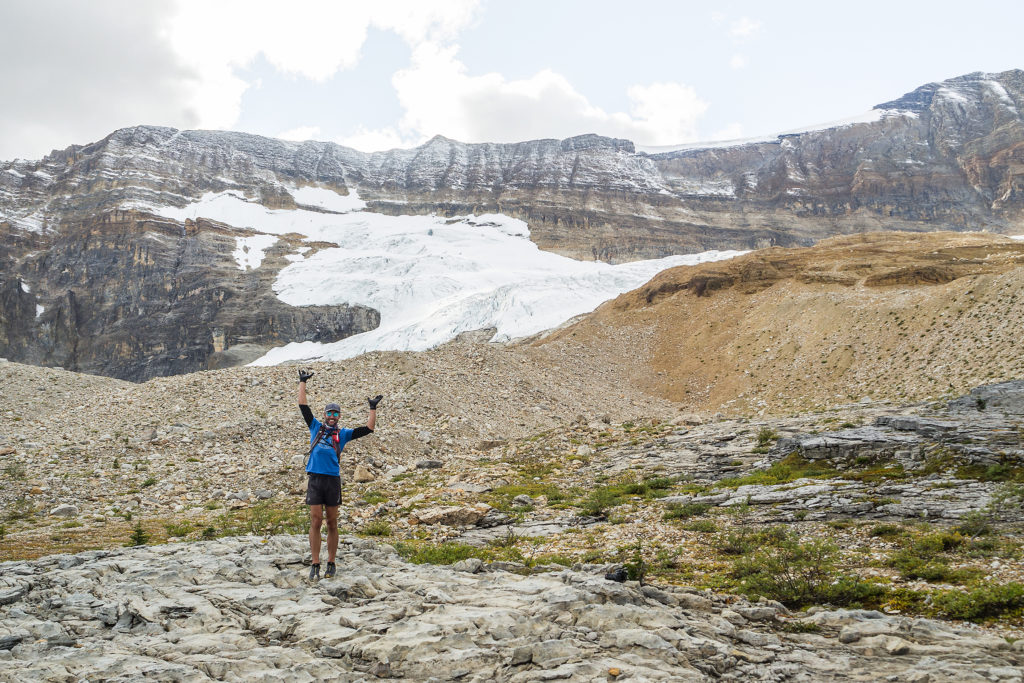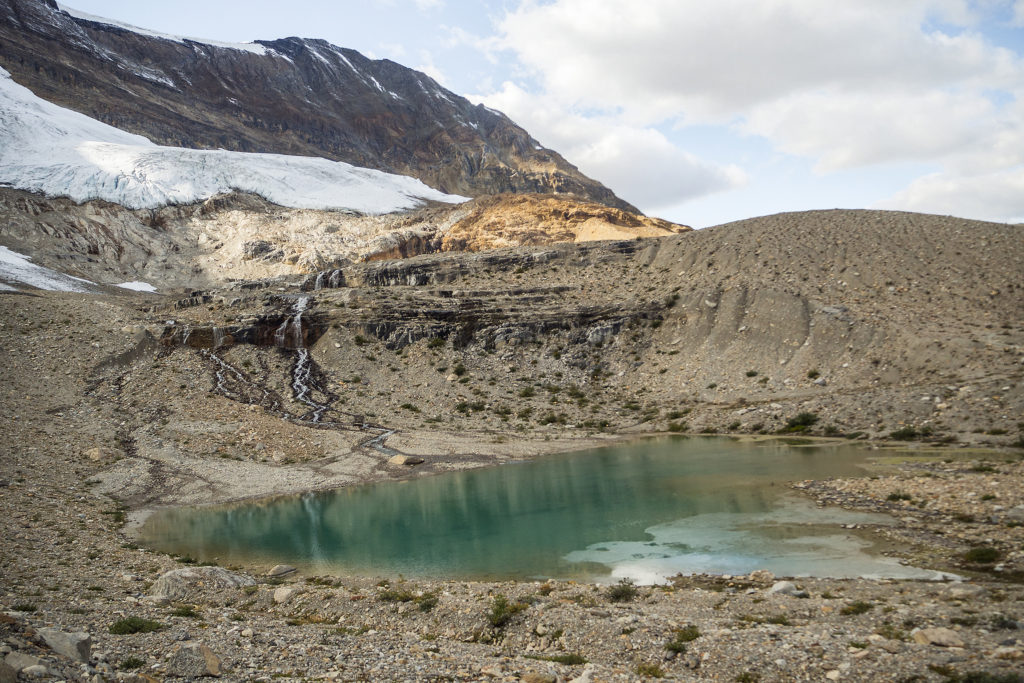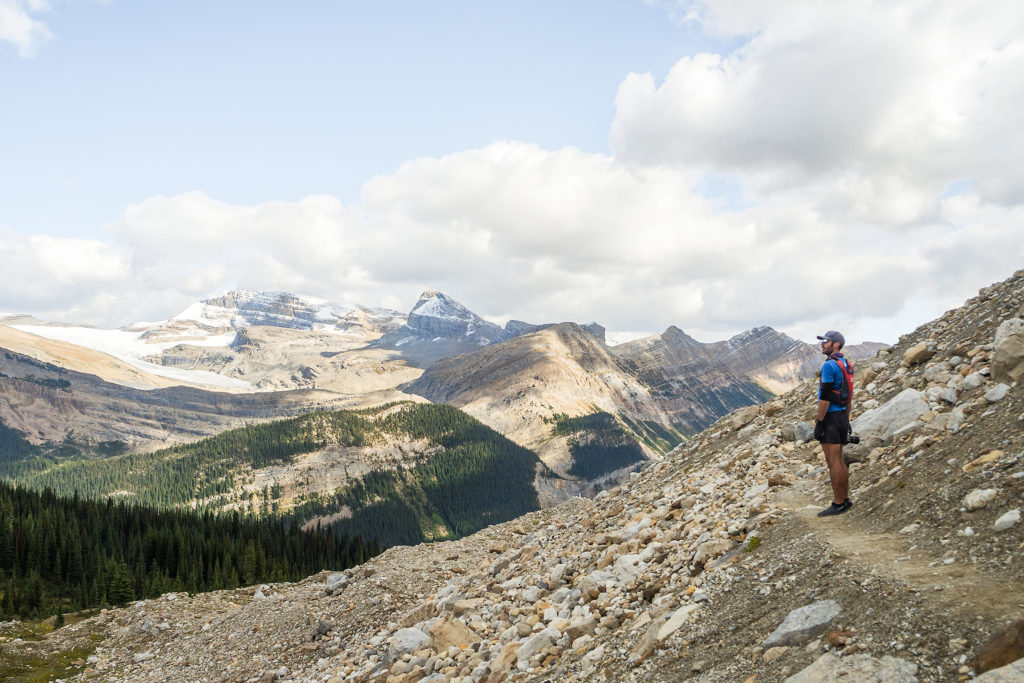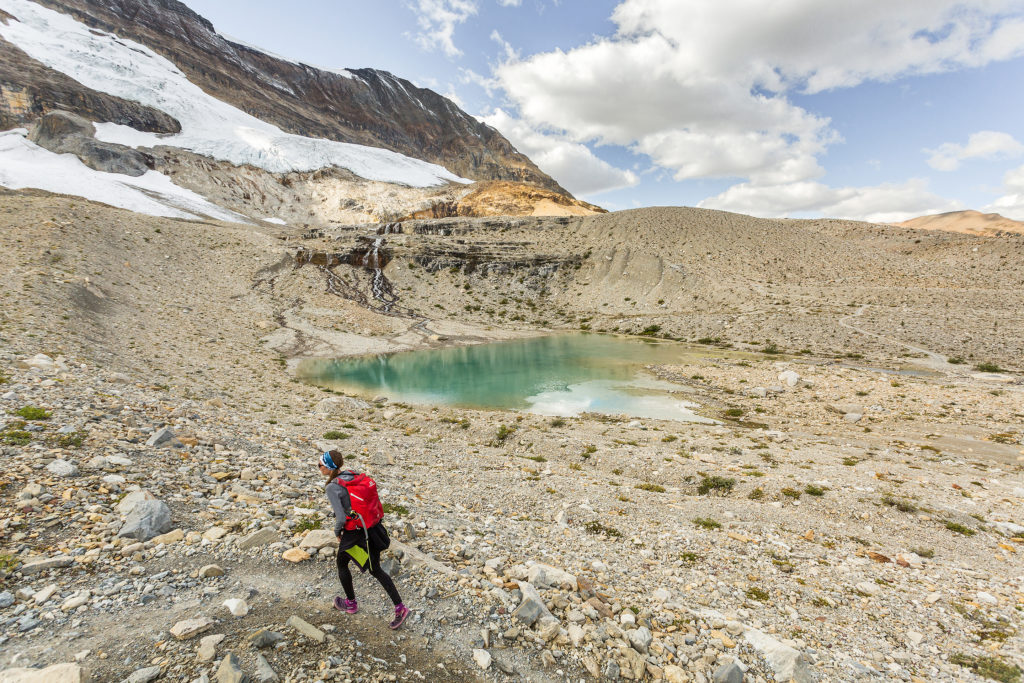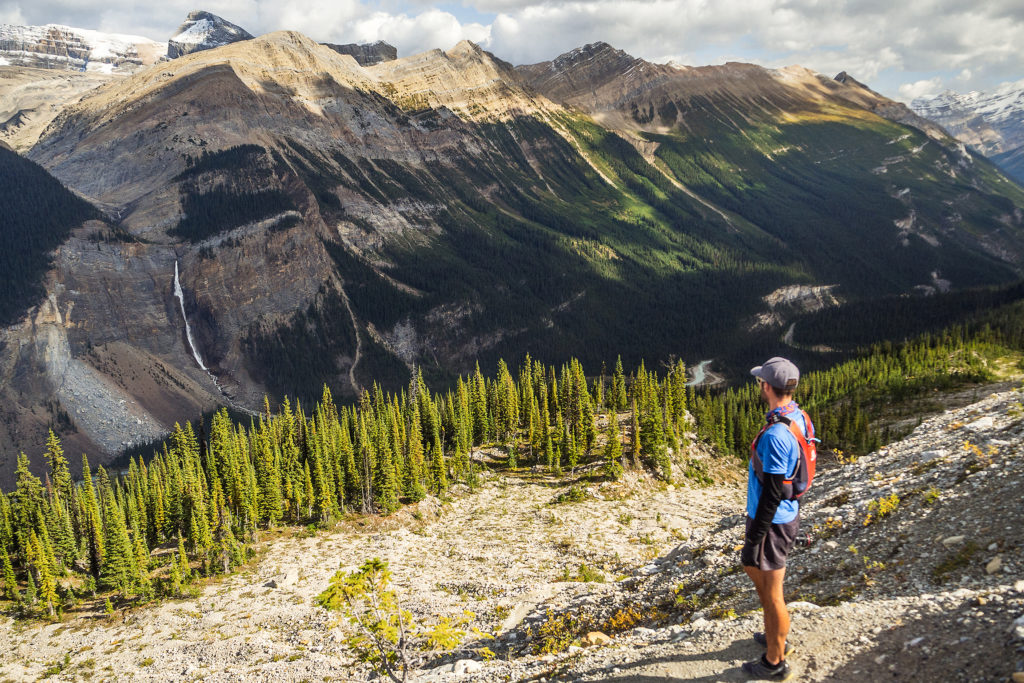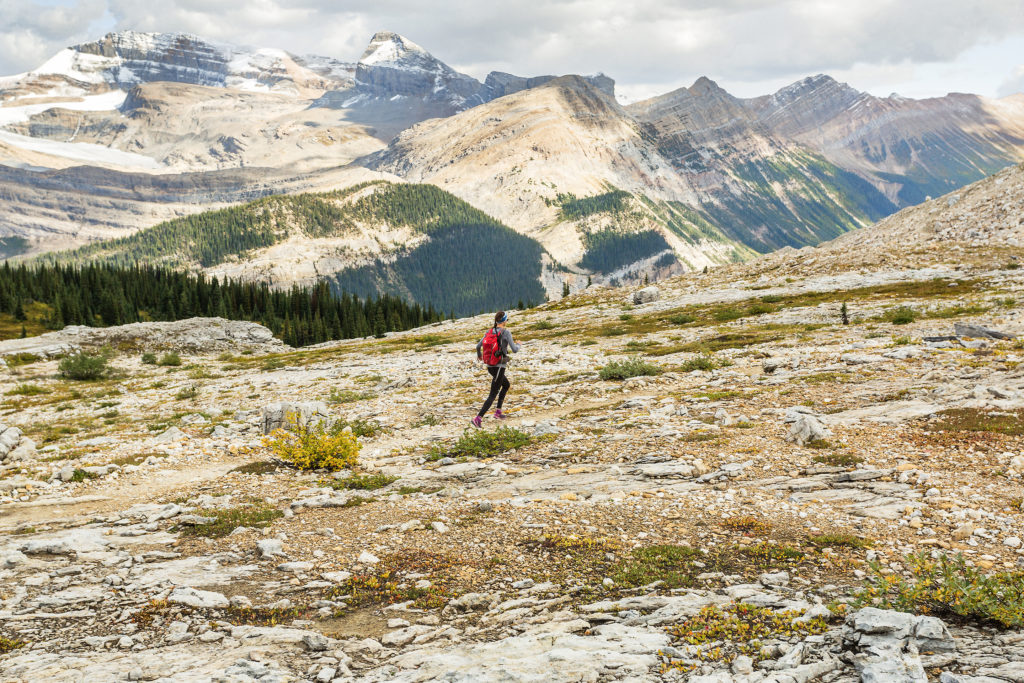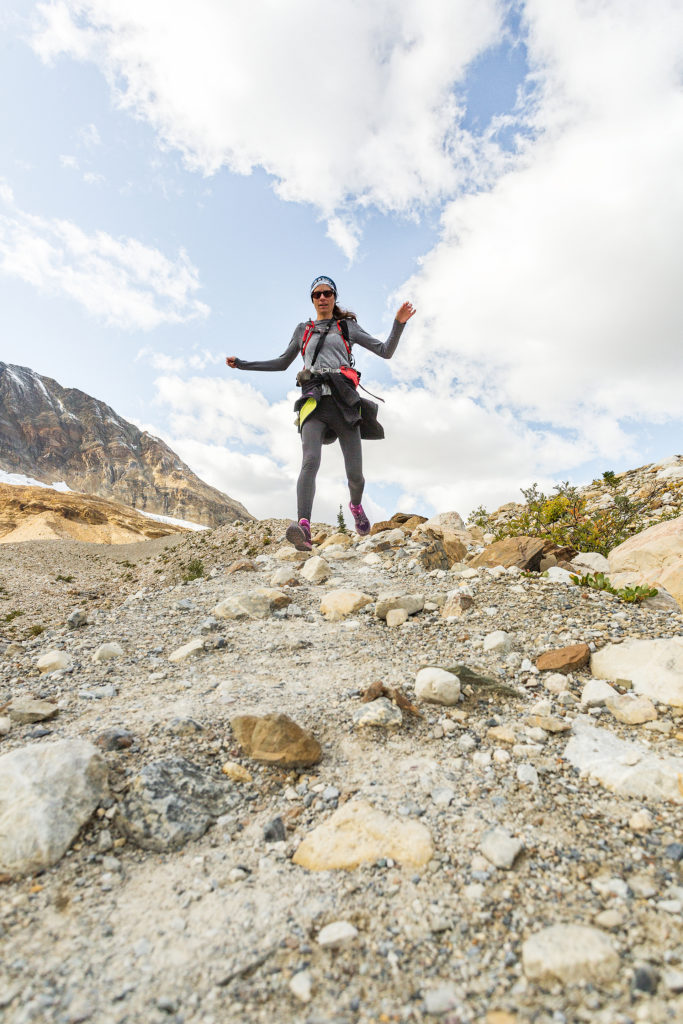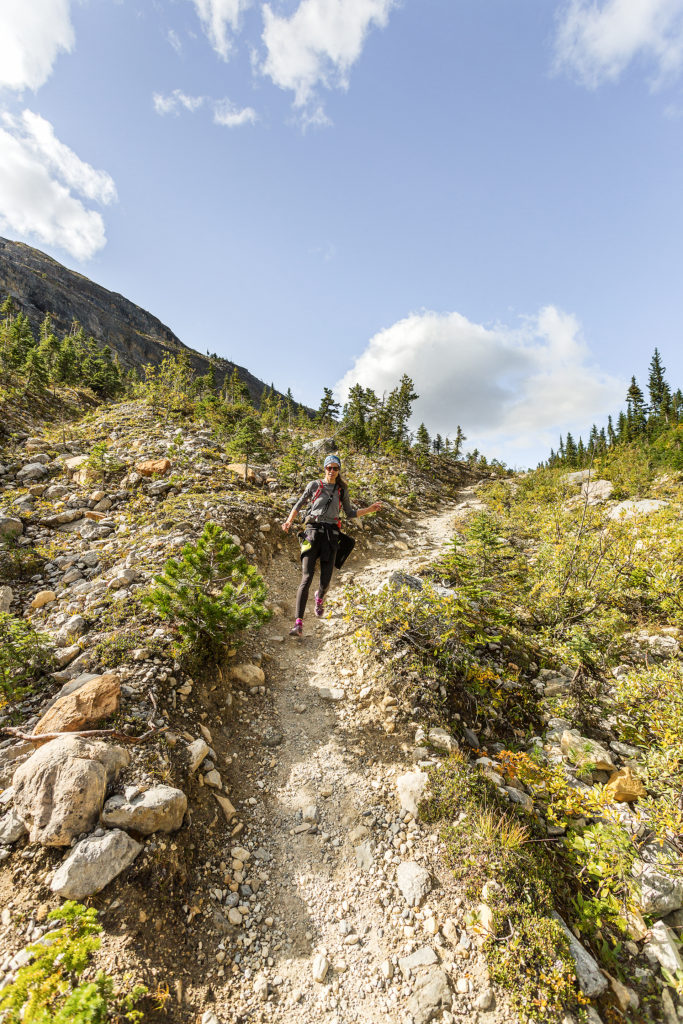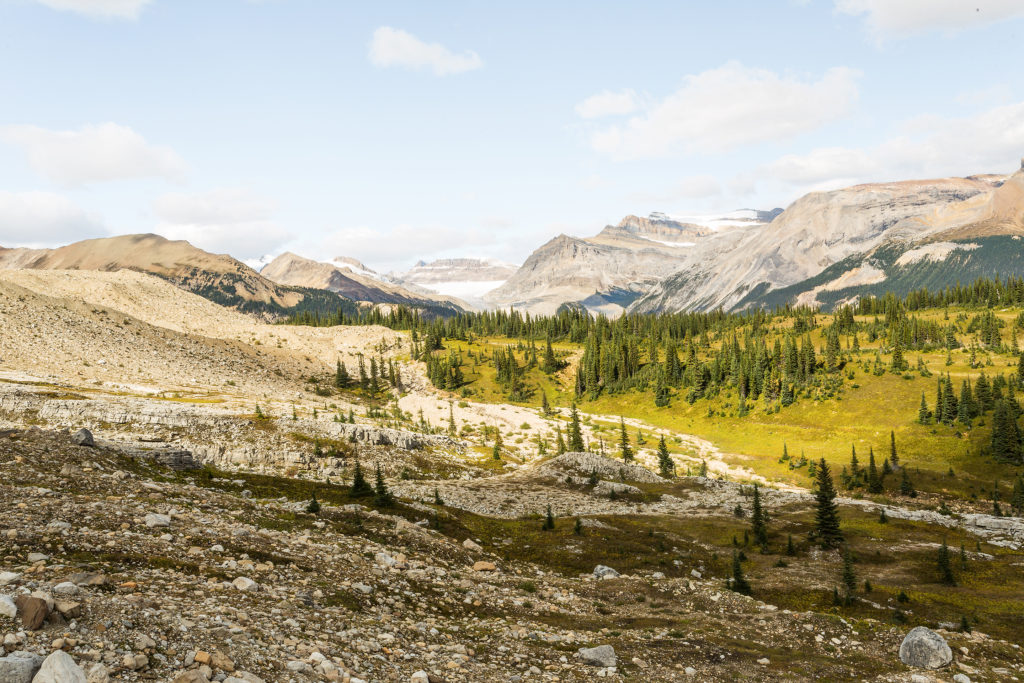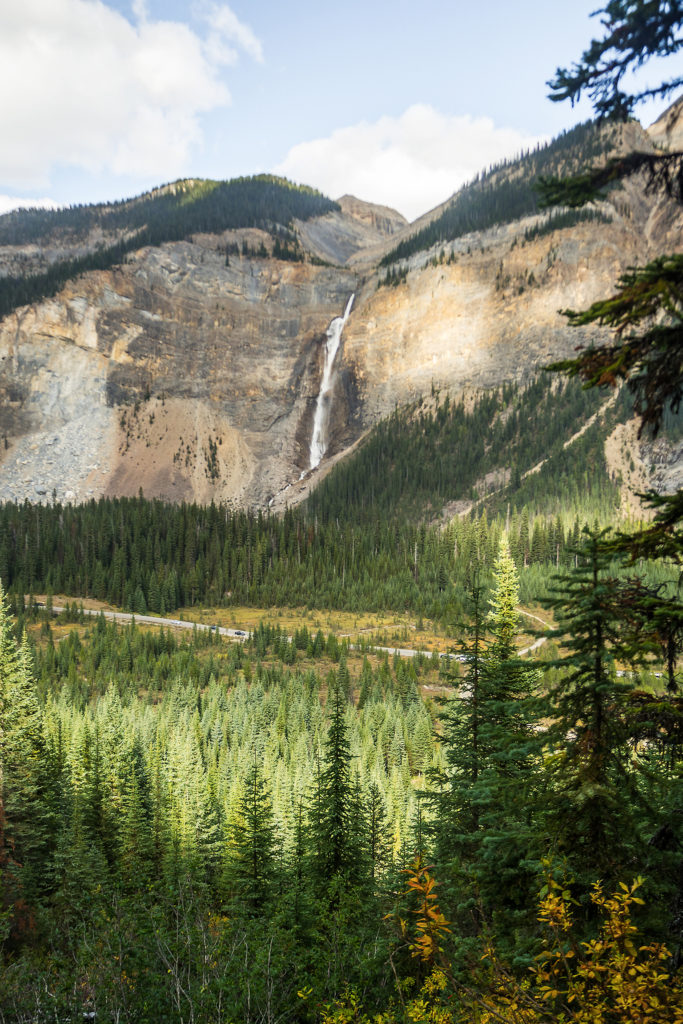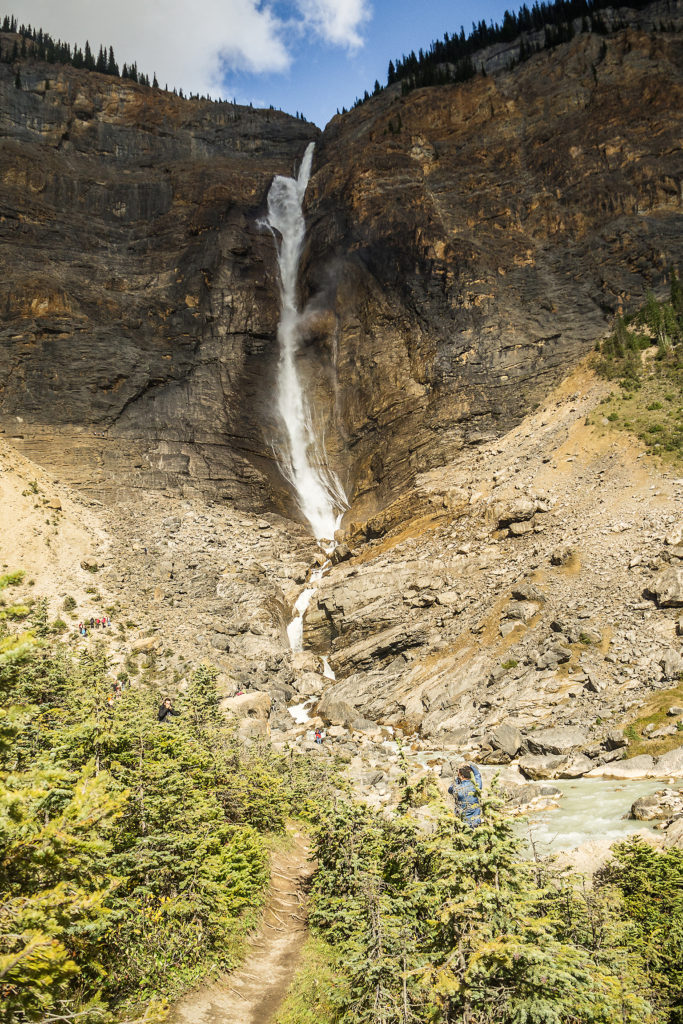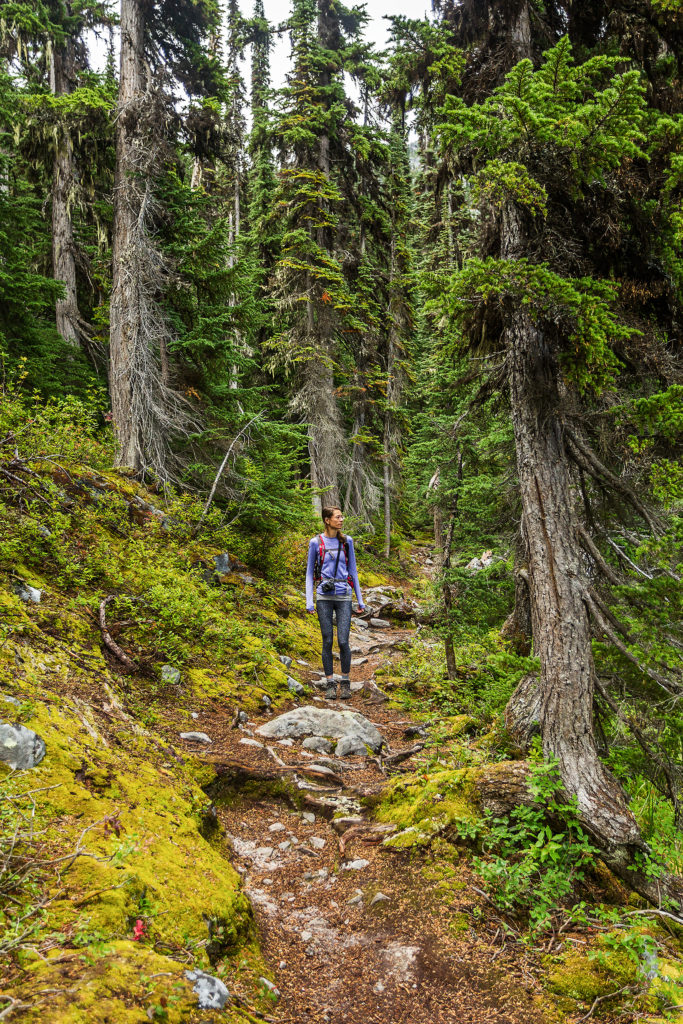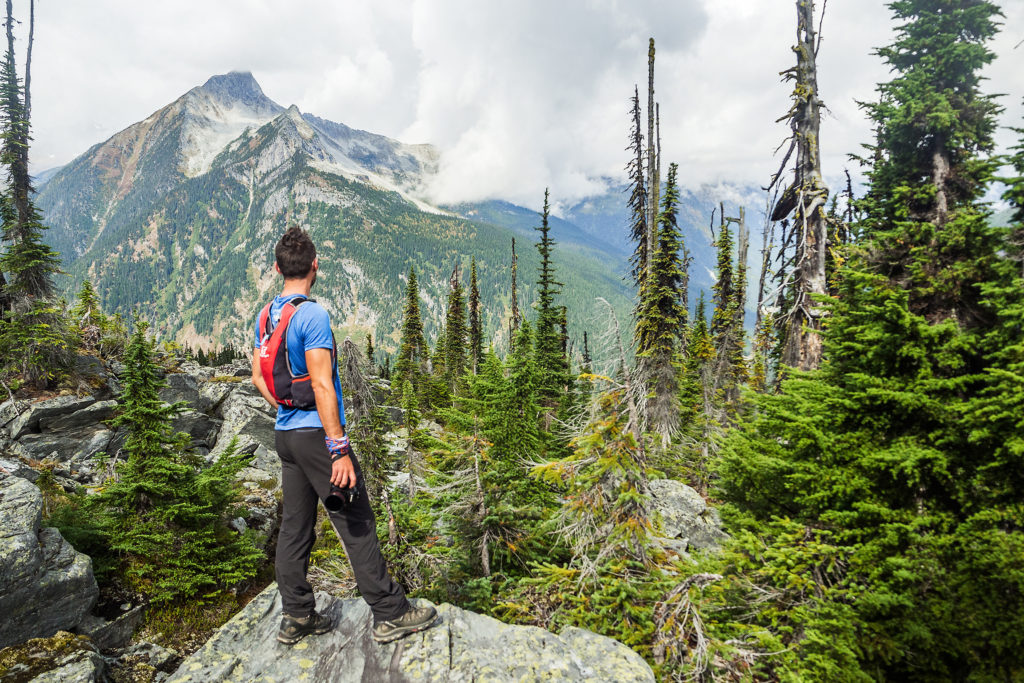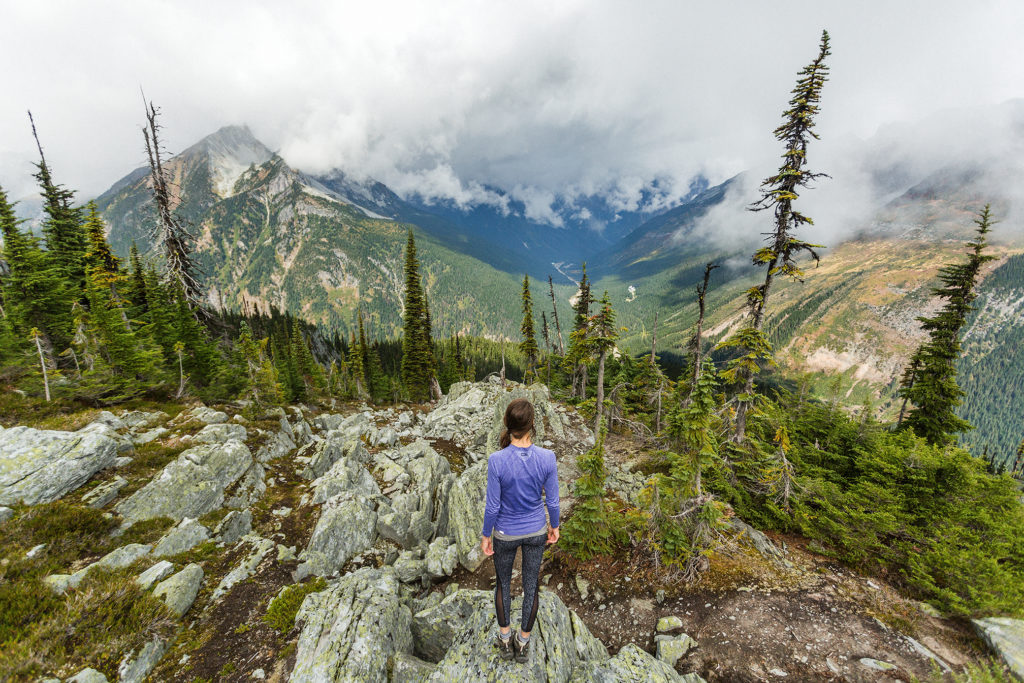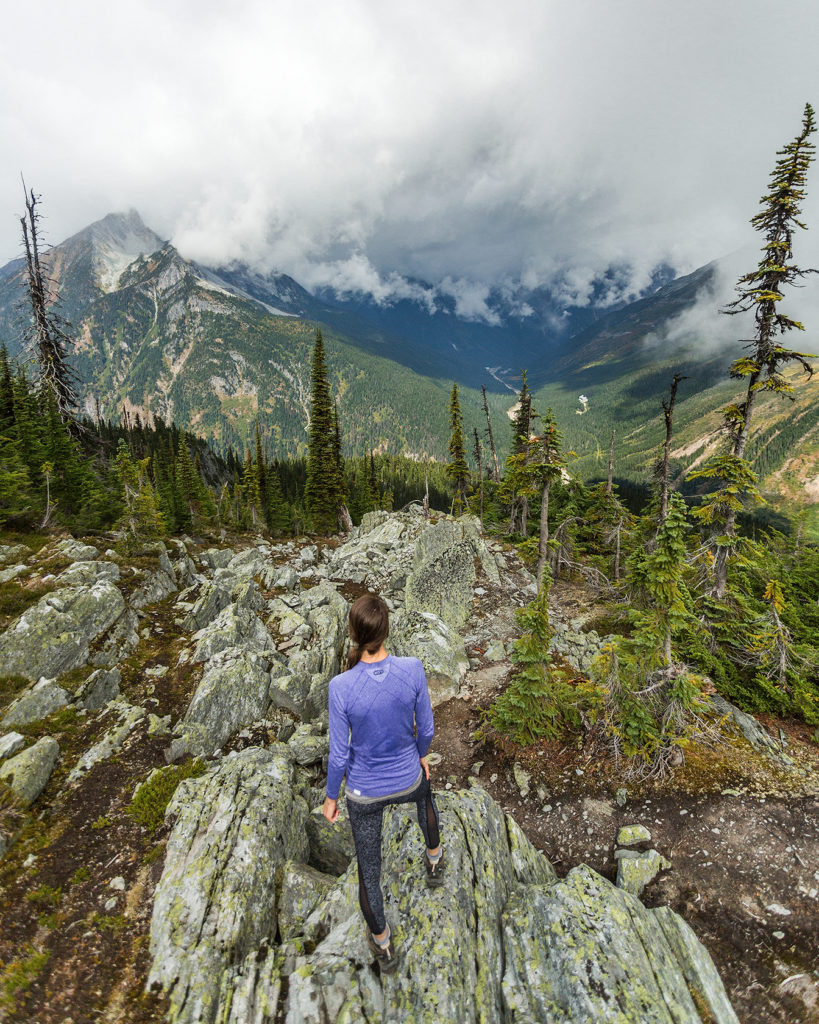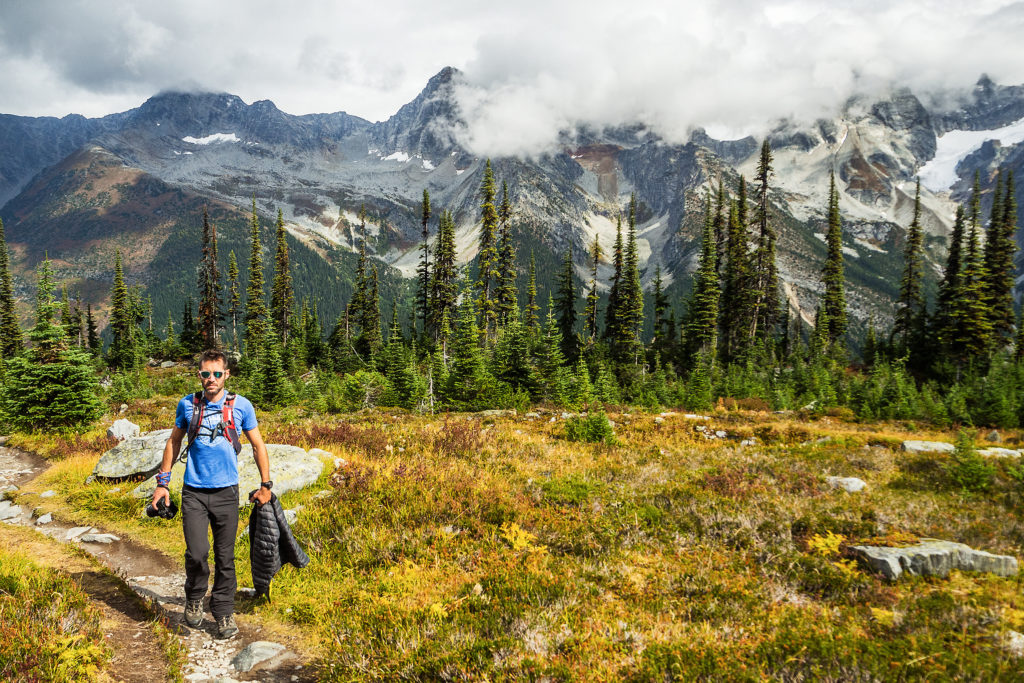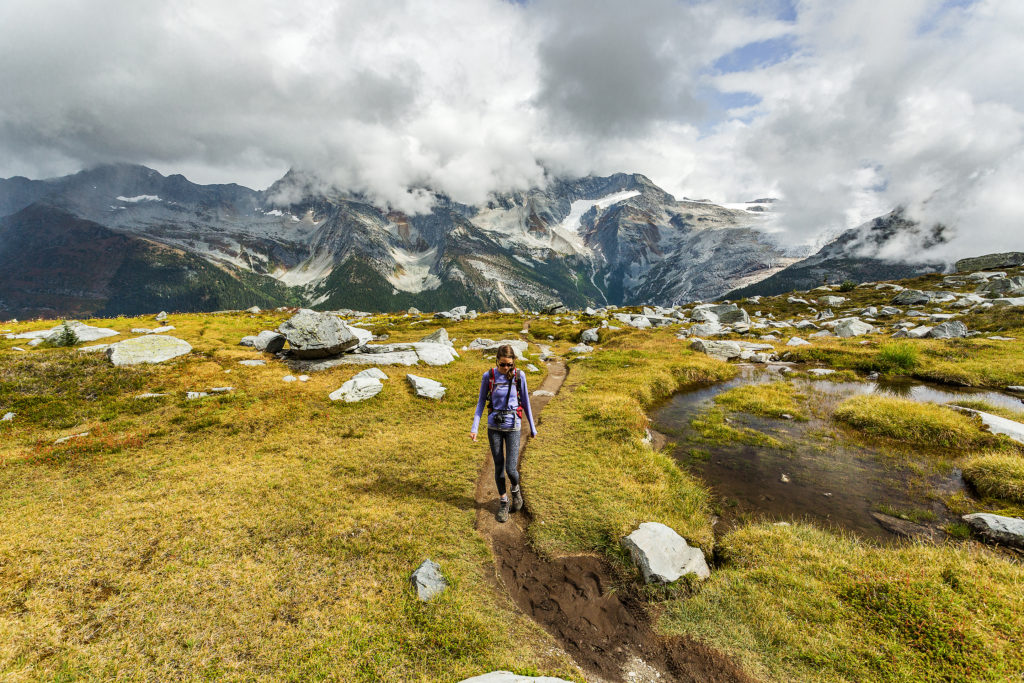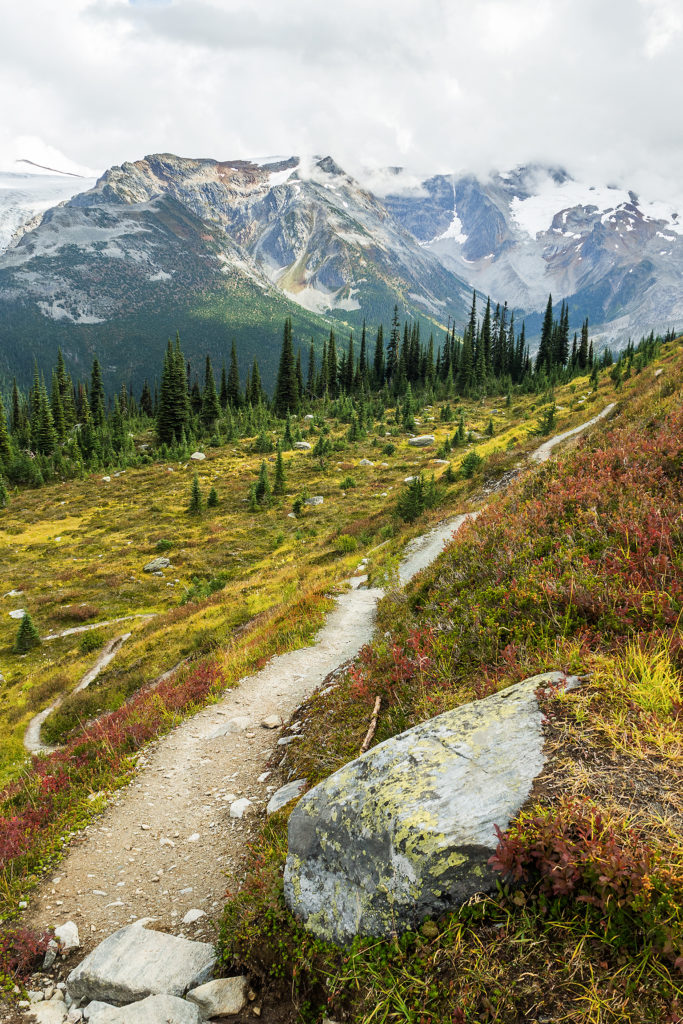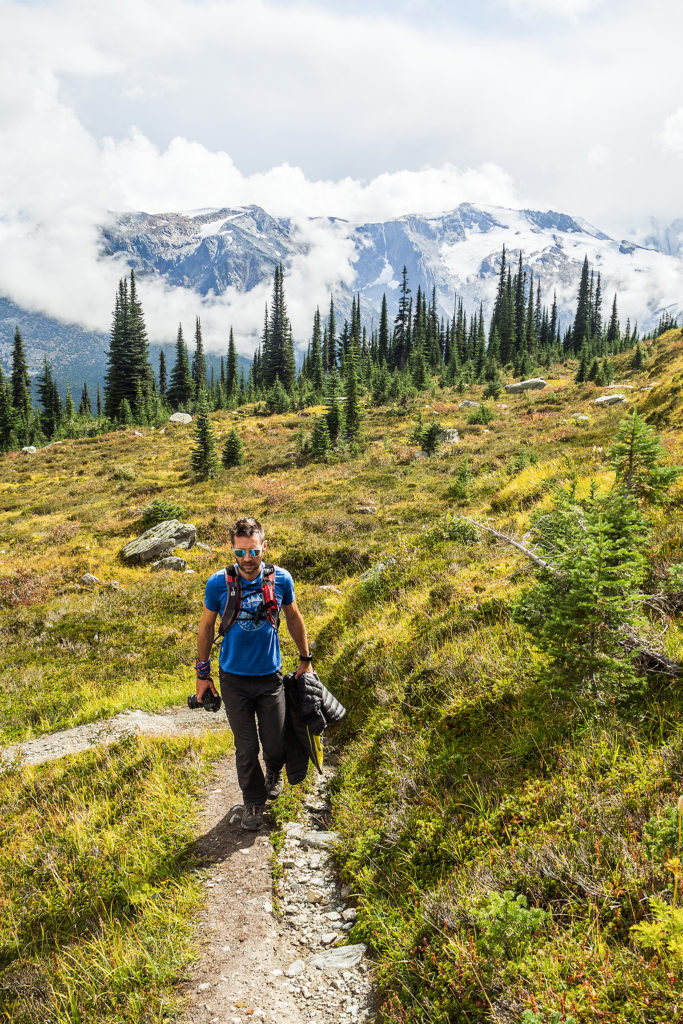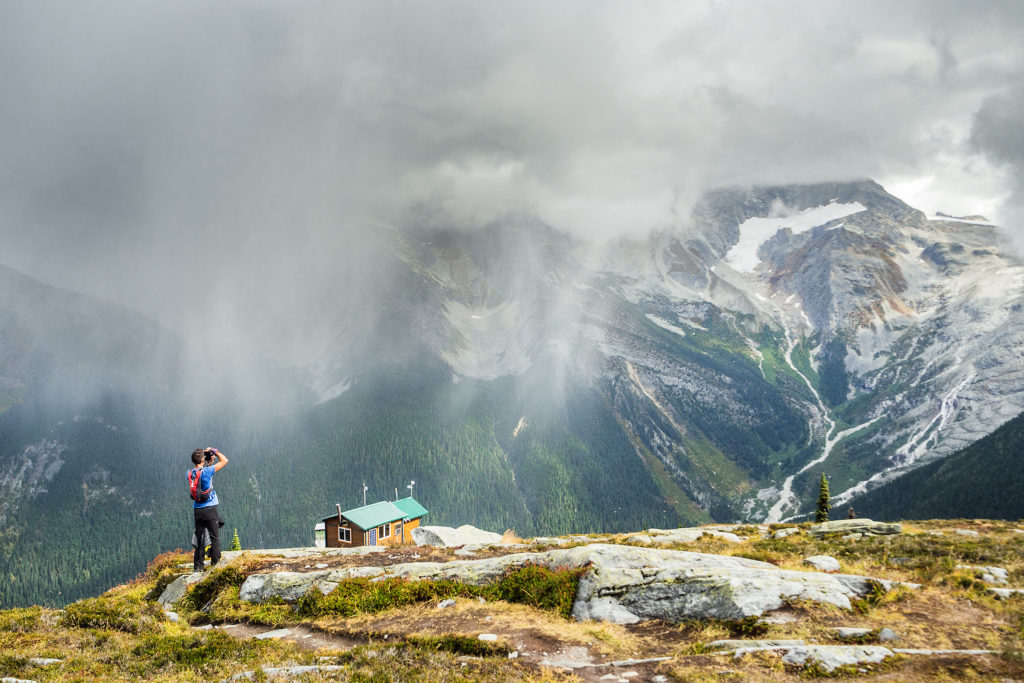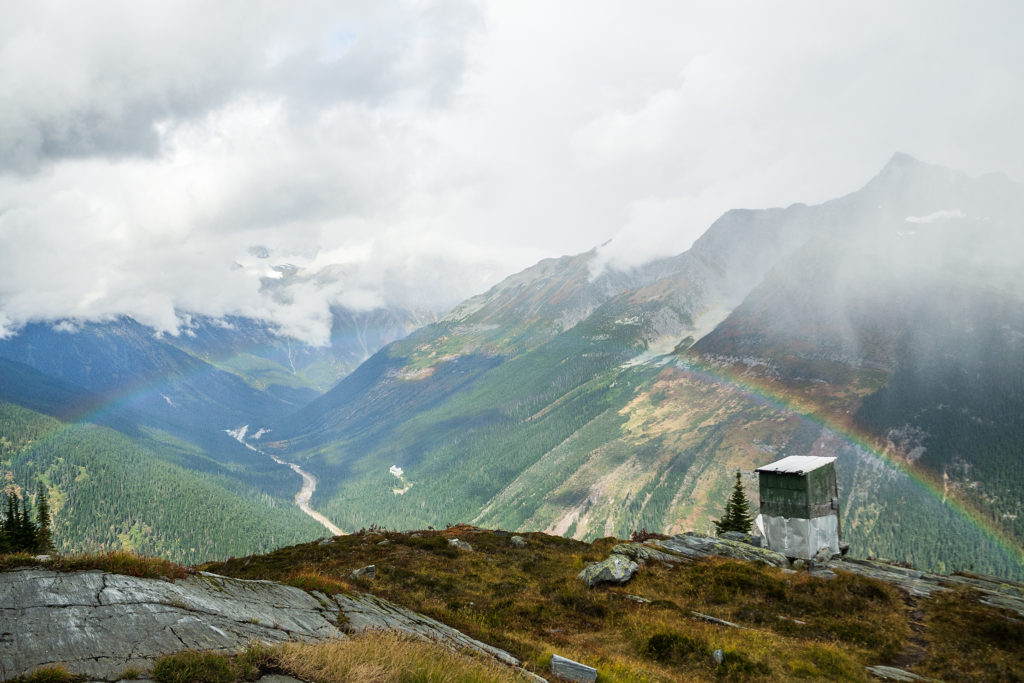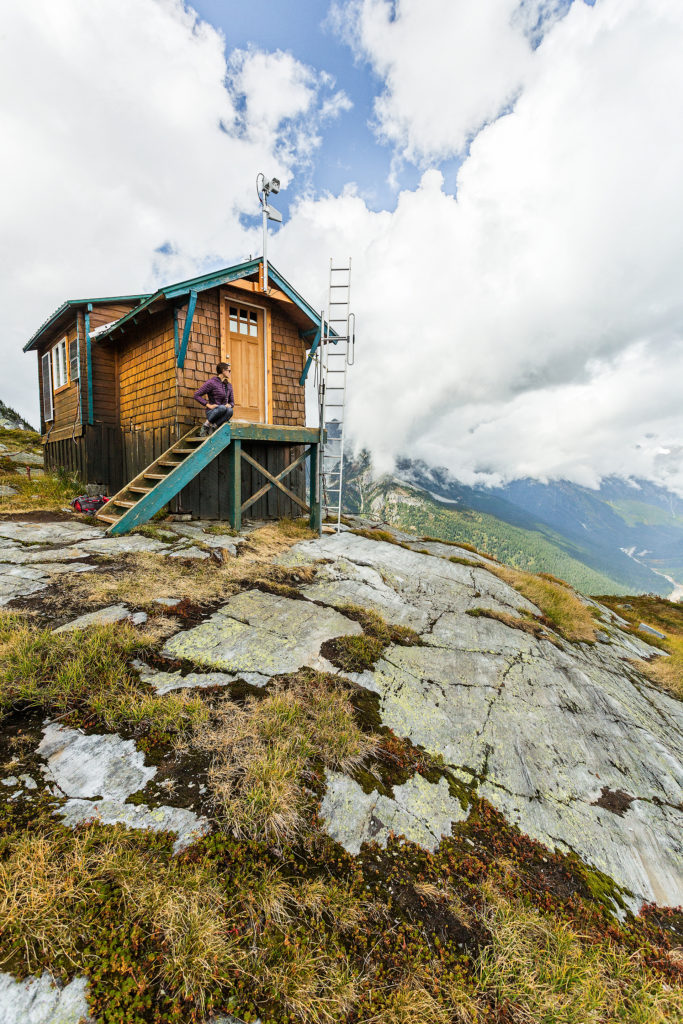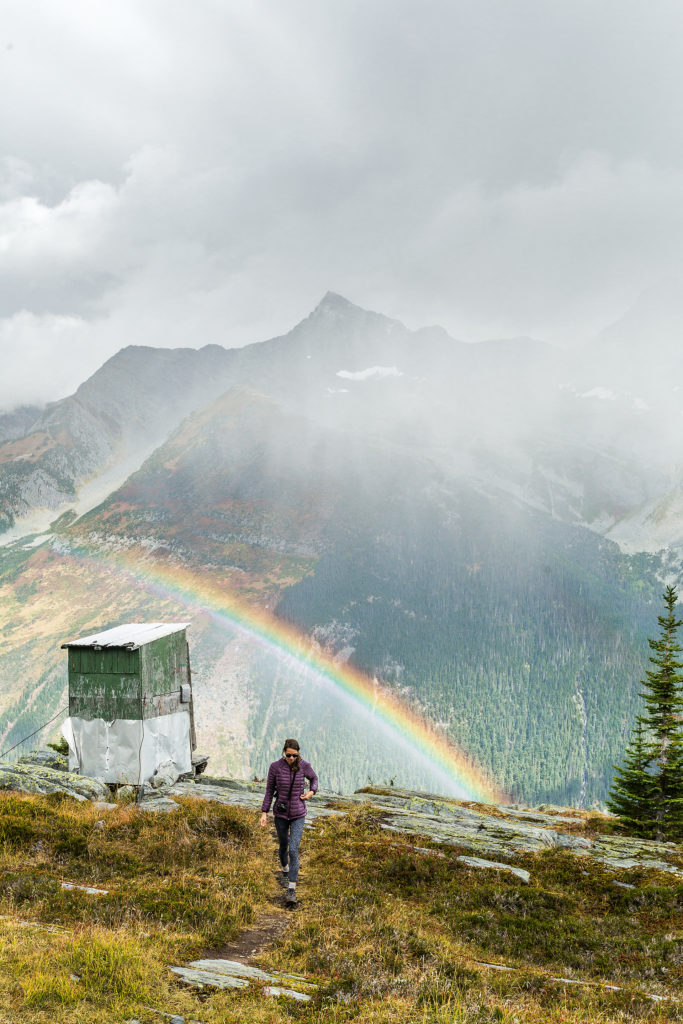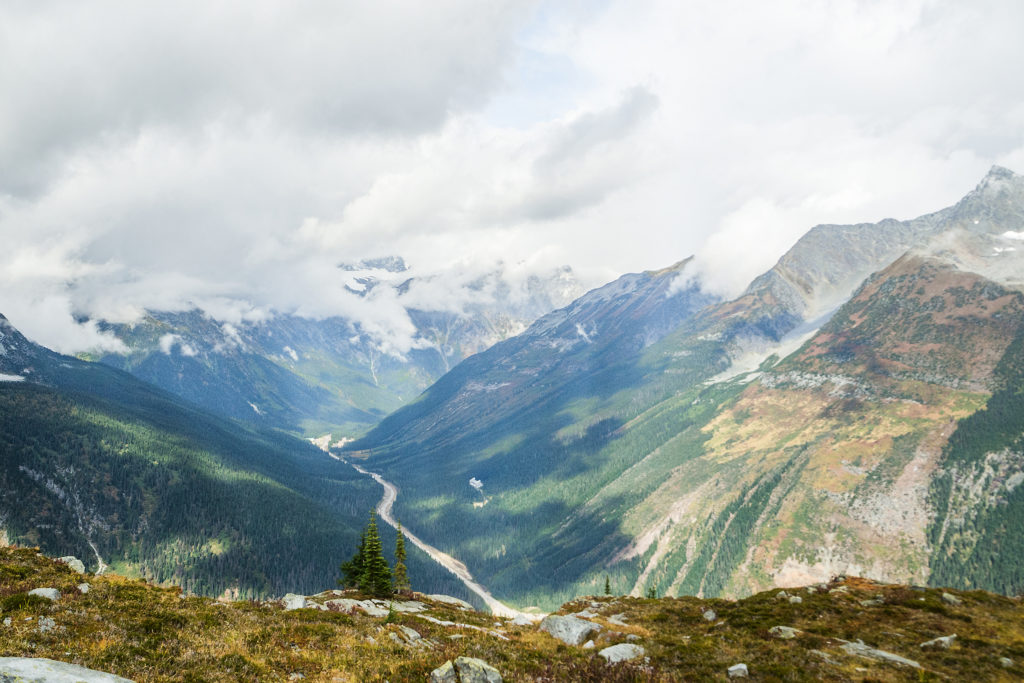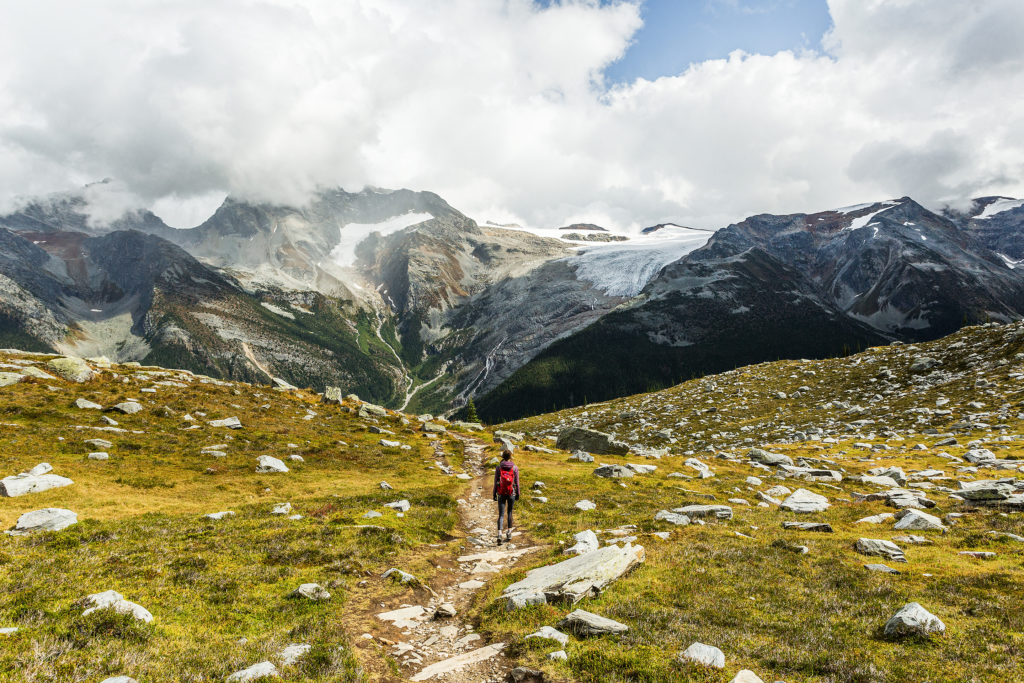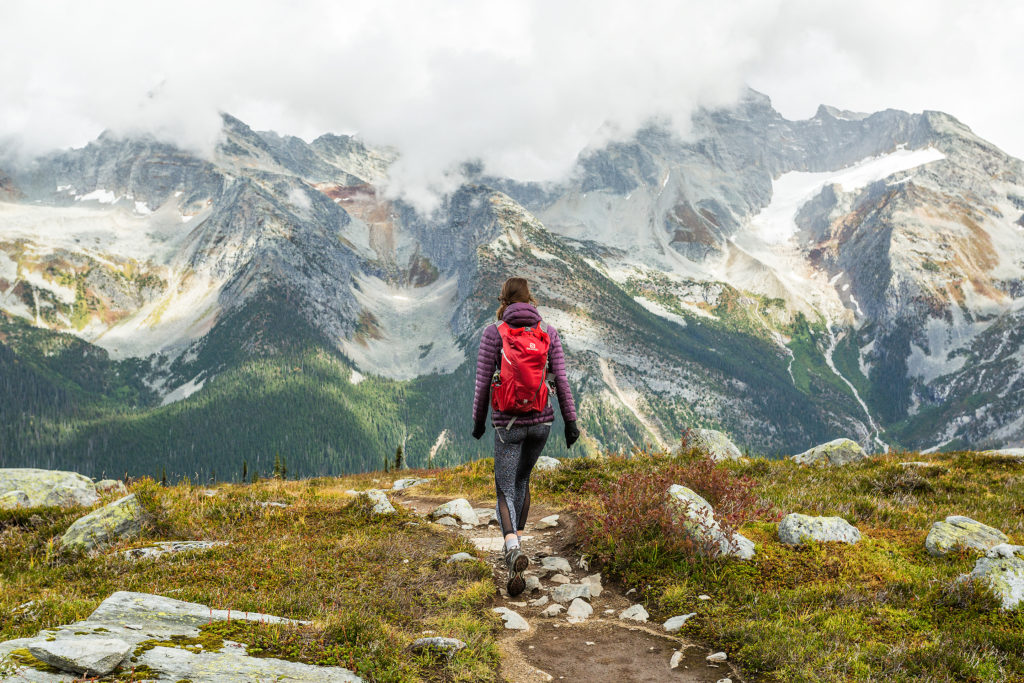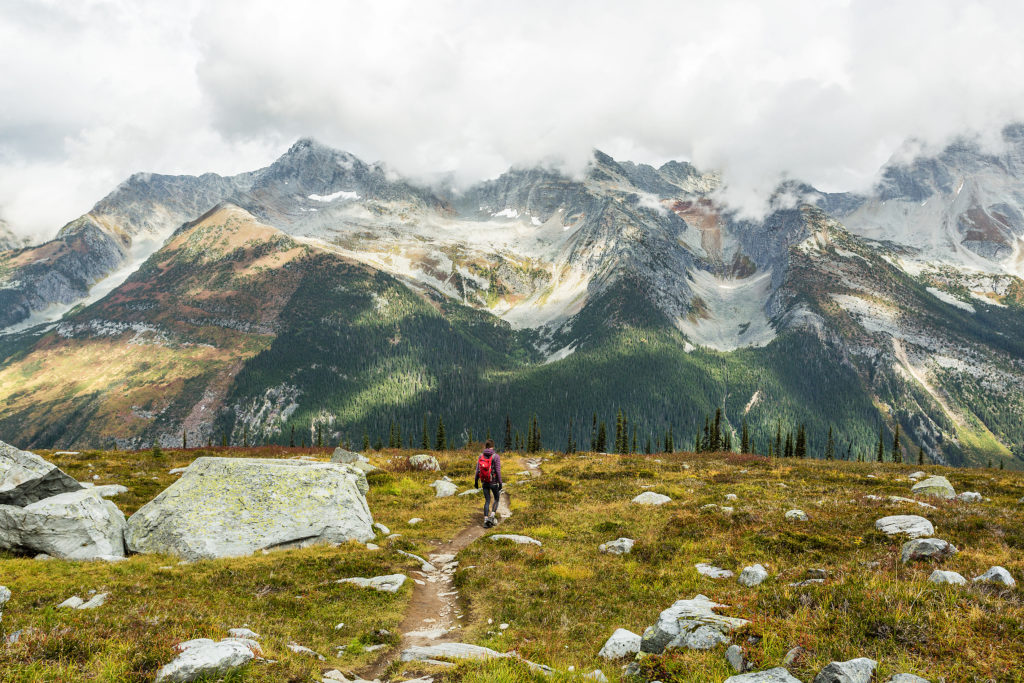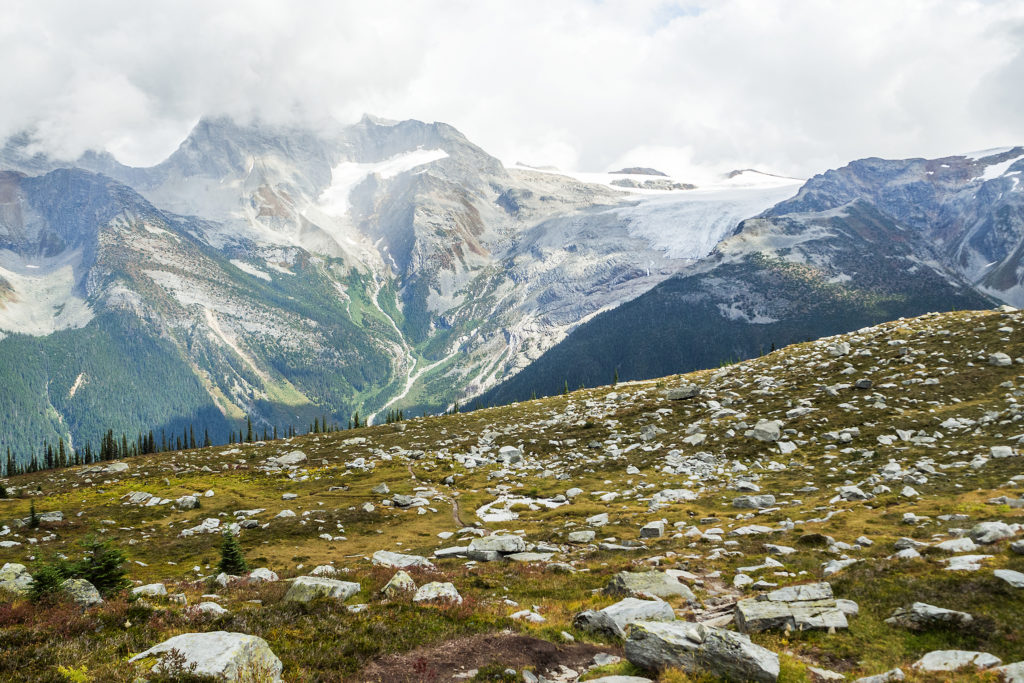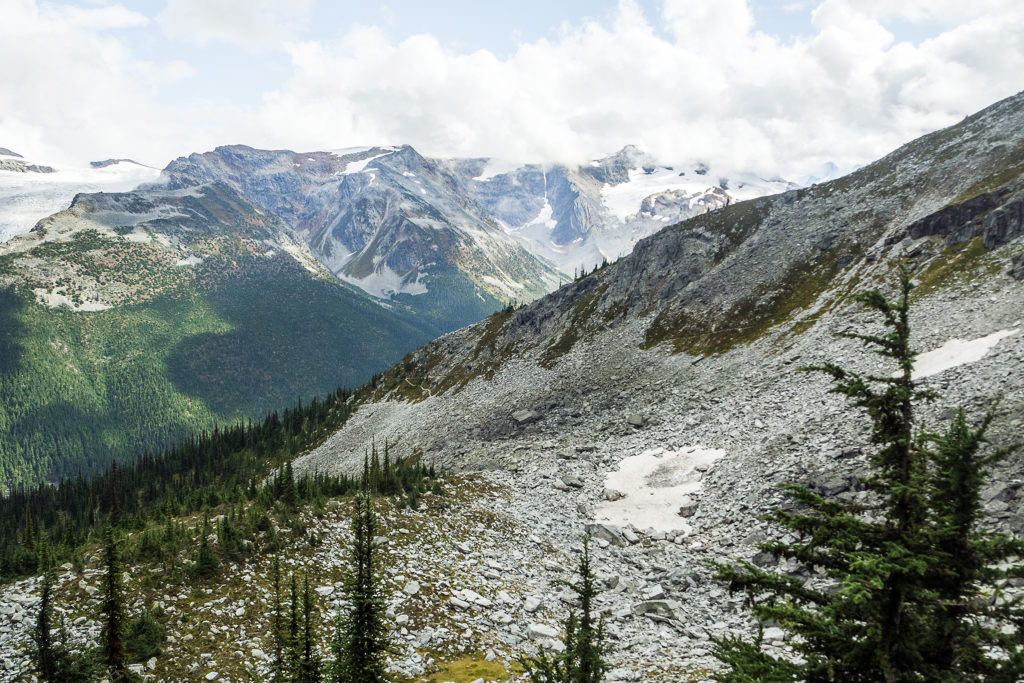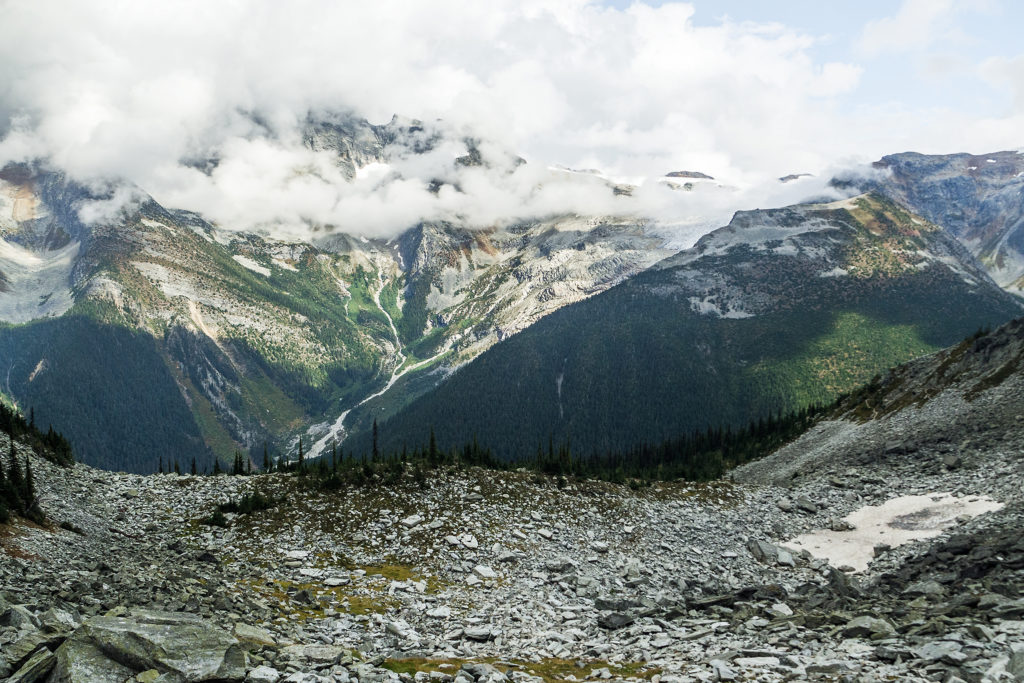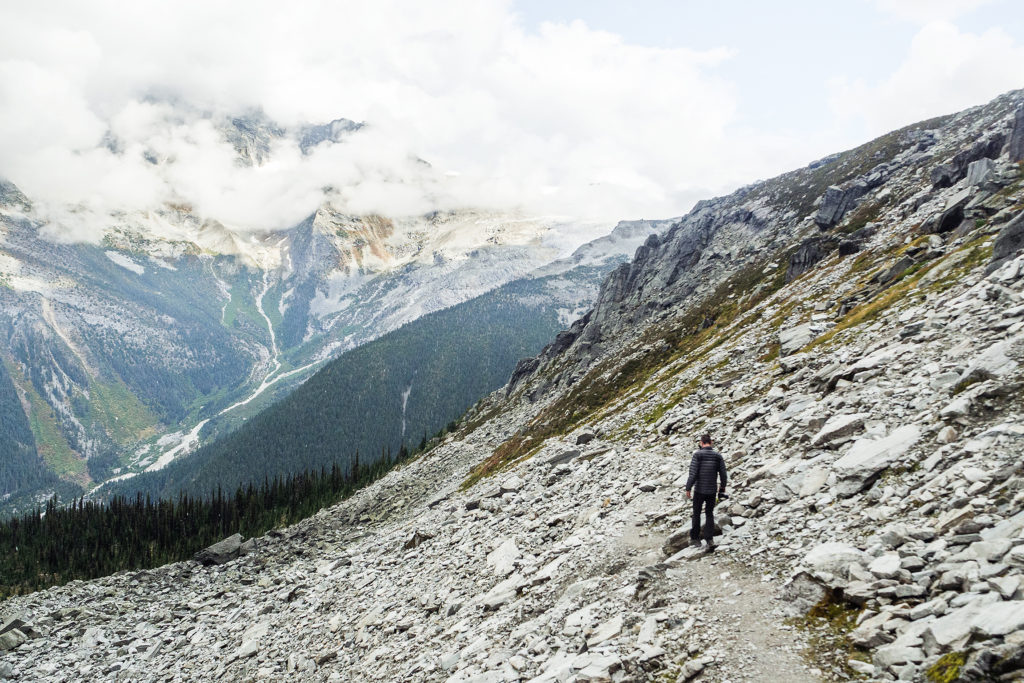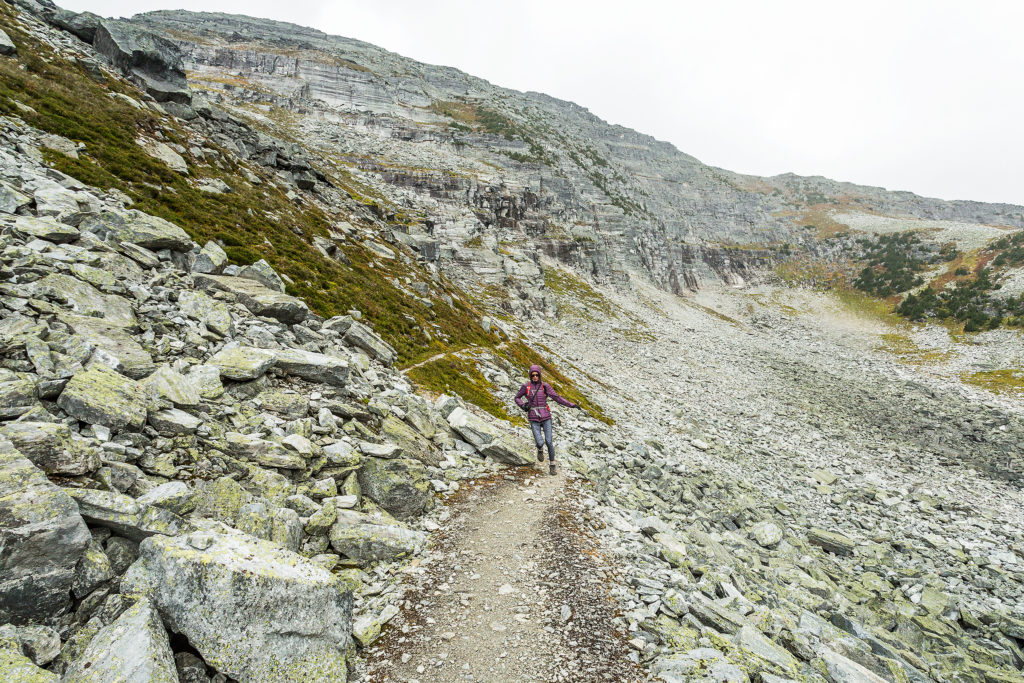This lake is probably one of the most photographed in Canada (maybe even North America), and I had seen it pop up countless times on my Instagram feed. Similar to the Torres in Patagonia, experiencing it in real life was like stepping into a postcard….a very busy postcard. Every photo on social media shows a single individual sitting or standing peacefully across from 4 rocky giants, separated by turquoise blue water.
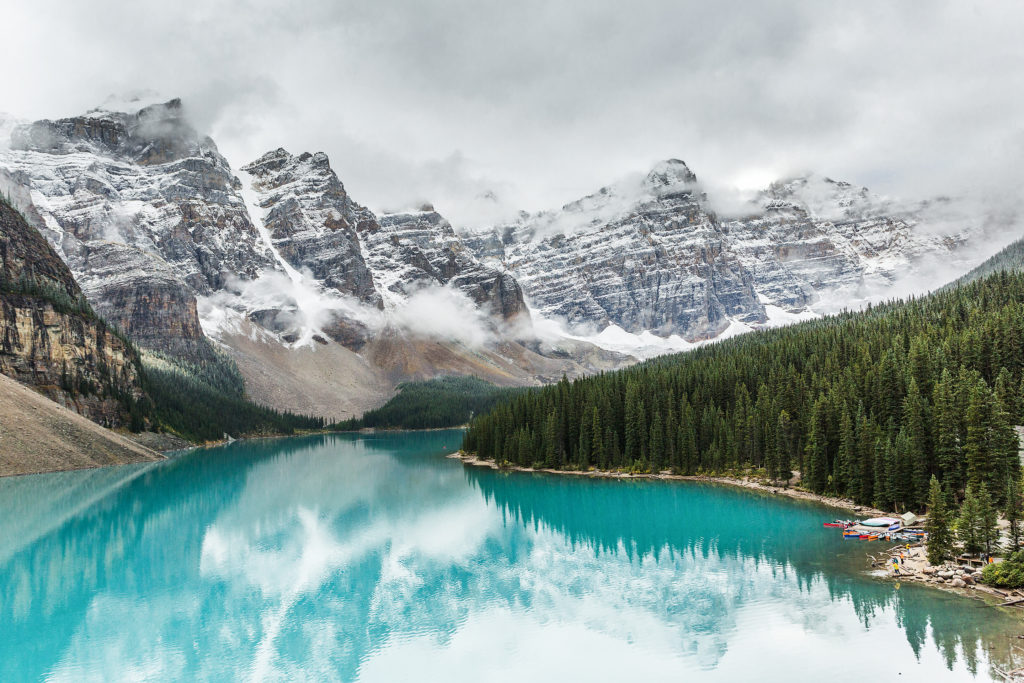
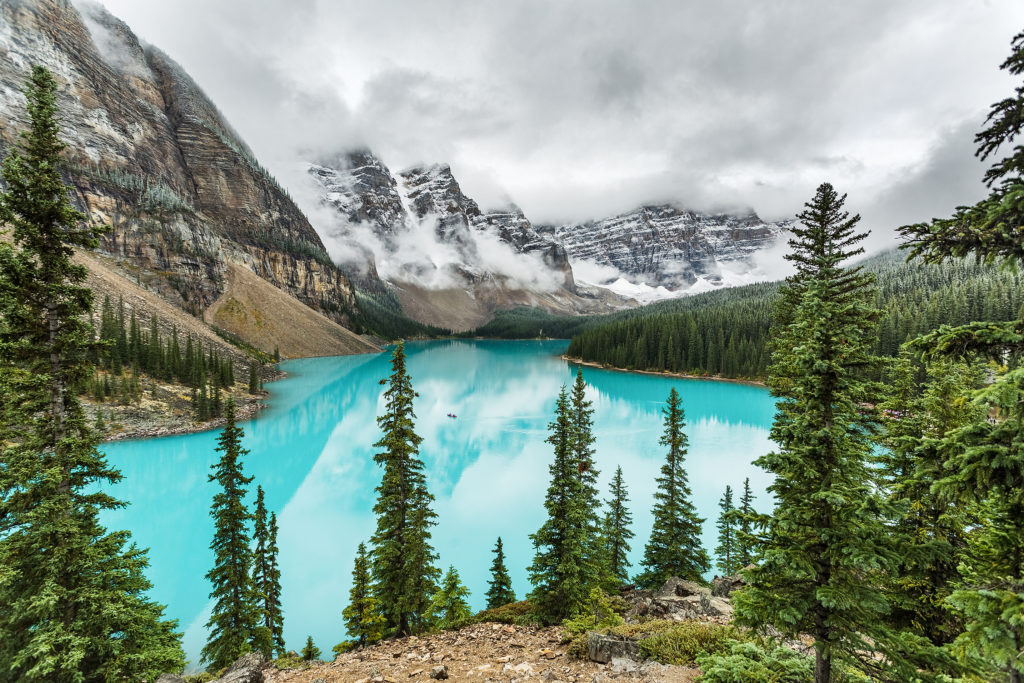
What photos don’t show, is the view the 4 giants would be staring at: a parking lot full to the brim with cars and tourist buses. A flow of the aforementioned tourists inundating the shore of the lake, specifically the boulder pile conveniently located at the one end of the lake, offering the perfect vantage point over the water. From the towering distance of those four peaks, that side of the lake would likely resemble an ant nest, little black spots crawling all over the mound and taking turn to pause (and pose) on that one outcrop, that one viewpoint, ready to record their own make-belief moment of piece, quiet, solitude and reflection.
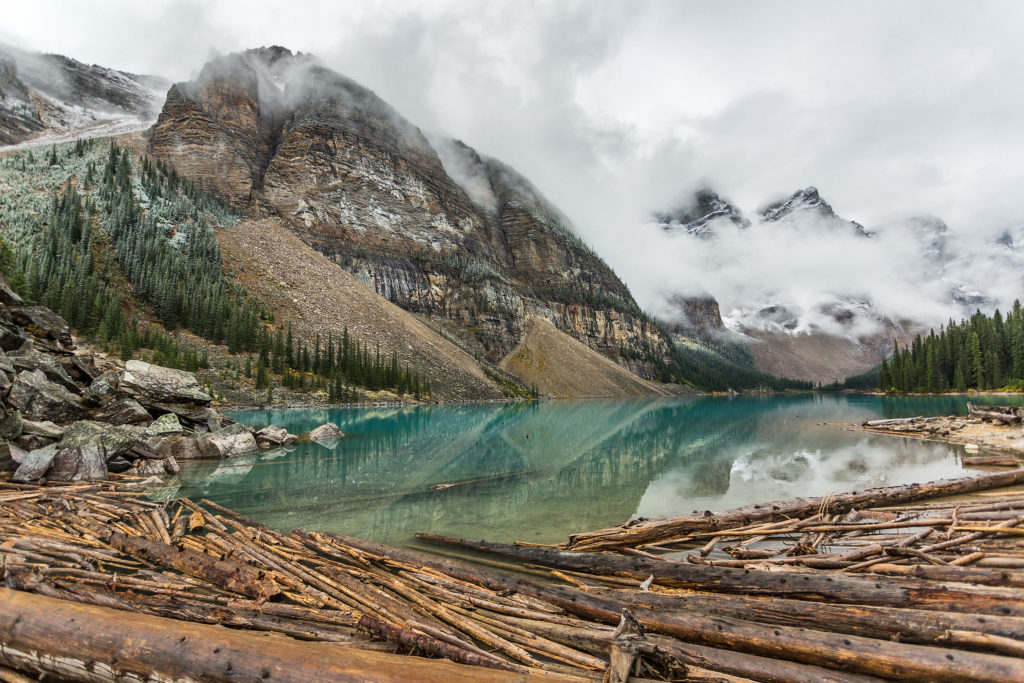
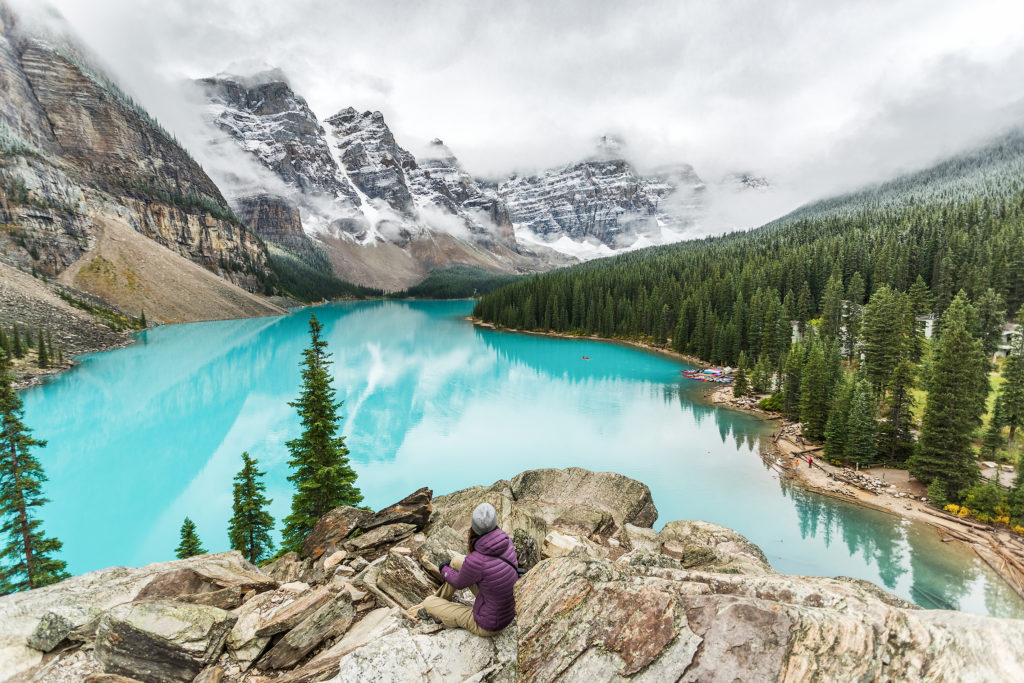
On this cold September morning, the trees were already sprinkled with frost and the temperature at lake level was below zero. It was shoulder season and the volume of visitors had already whittled down to a a somewhat manageable number (especially for us). We even managed to park less than 50 meters from the edge of the lake.

The iconic mountain range was partly obstructed by low clouds and fog when we first arrived, but it slowly cleared out as the morning went by. After joining the other ants on the boulder pile, and taking the inevitable solitary shots, we moved on to the next part of our exploration.

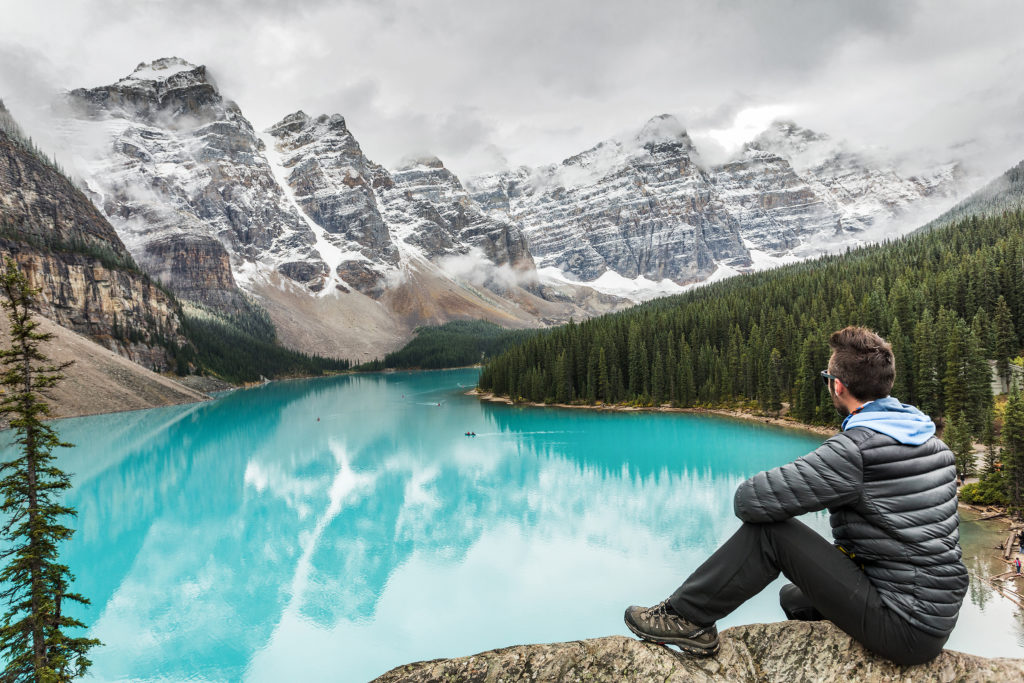

Thanks to the folks at Advanced Elements, we were able to bring 2 inflatable kayaks with us on the trip – an incredible addition to our usual get-up, allowing us to get slightly less mediatized perspective on the Canadian landmark.
Of course, you can rent canoes at Moraine Lake – red and orange ones, contrasting little lady bugs on the teal water. For $90 an hour. Yikes. Steep is a bit of an understatement, but admittedly, leaving the busy shore behind to enjoy the much more authentic tranquility of the water is part of the full experience (there are a limited number of canoes to rent, which ensures that traffic from the shore doesn’t spill over to the lake – although I’d be curious to know how many other floatation devices are brought along on the summer months.)
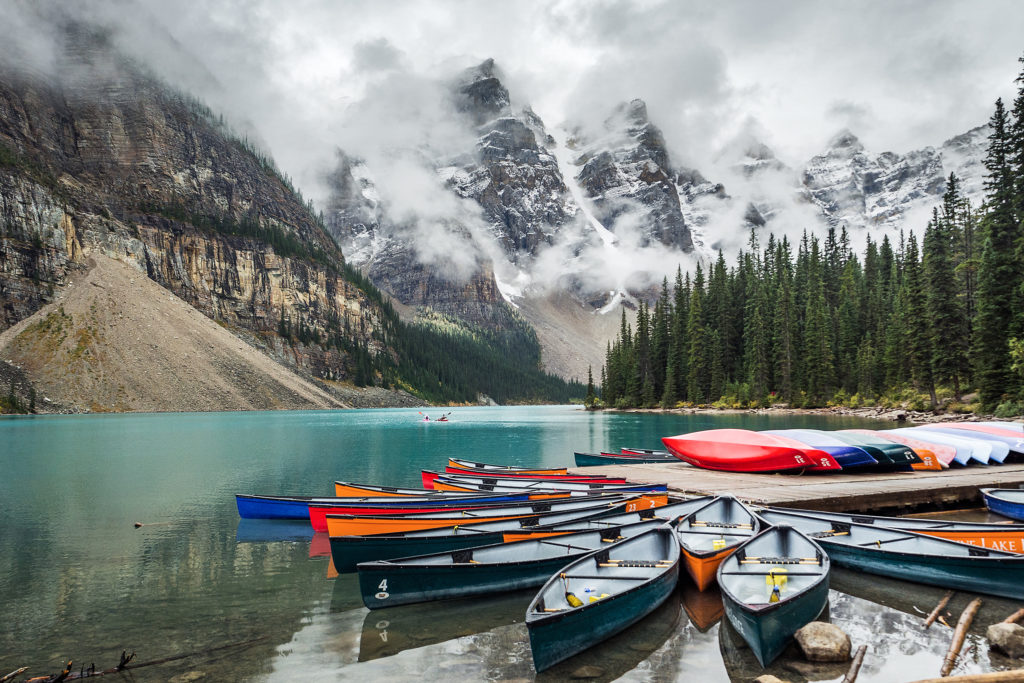

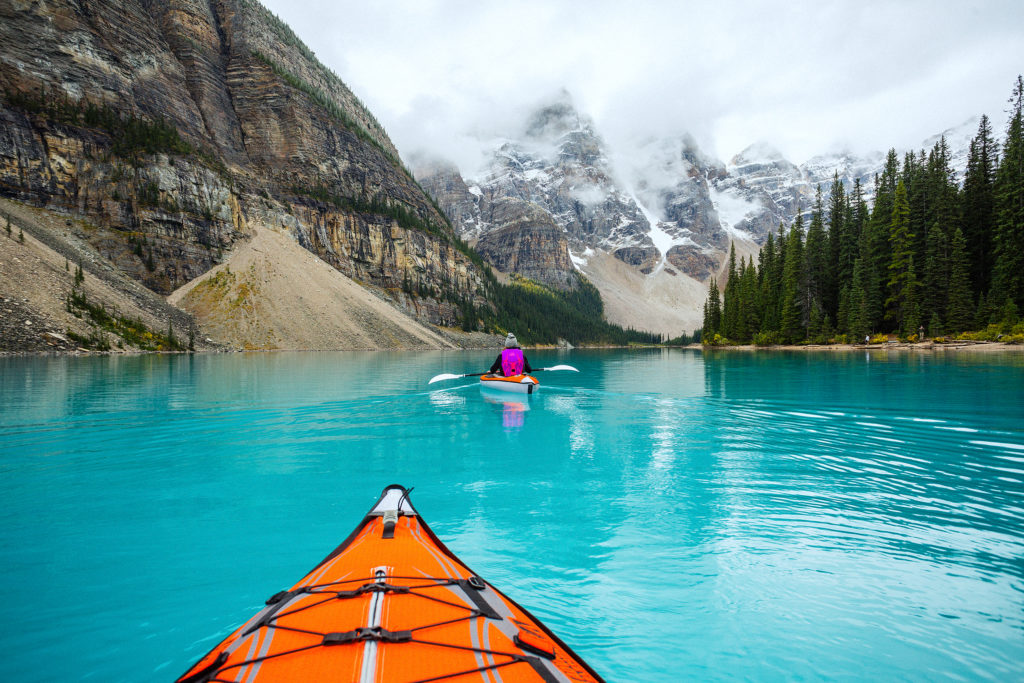
In just minutes, our bright orange kayaks were ready to go and a beat later, we were paddling away from the hustle. The lake has a surface of about 50 hectares, definitely big enough to put distance between us and the real world, and enjoy a truly serene moment. Floating on completely still lake water, surrounded by mighty mountains, slowly revealing themselves to us as time passes in slow motion. A true moment to stop and let go.
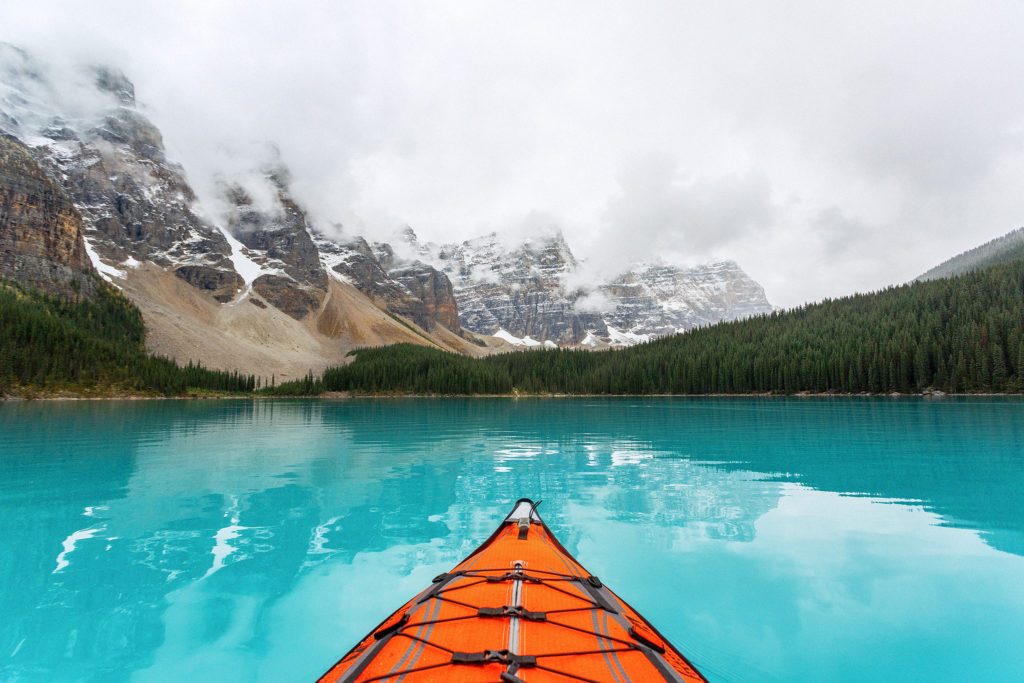
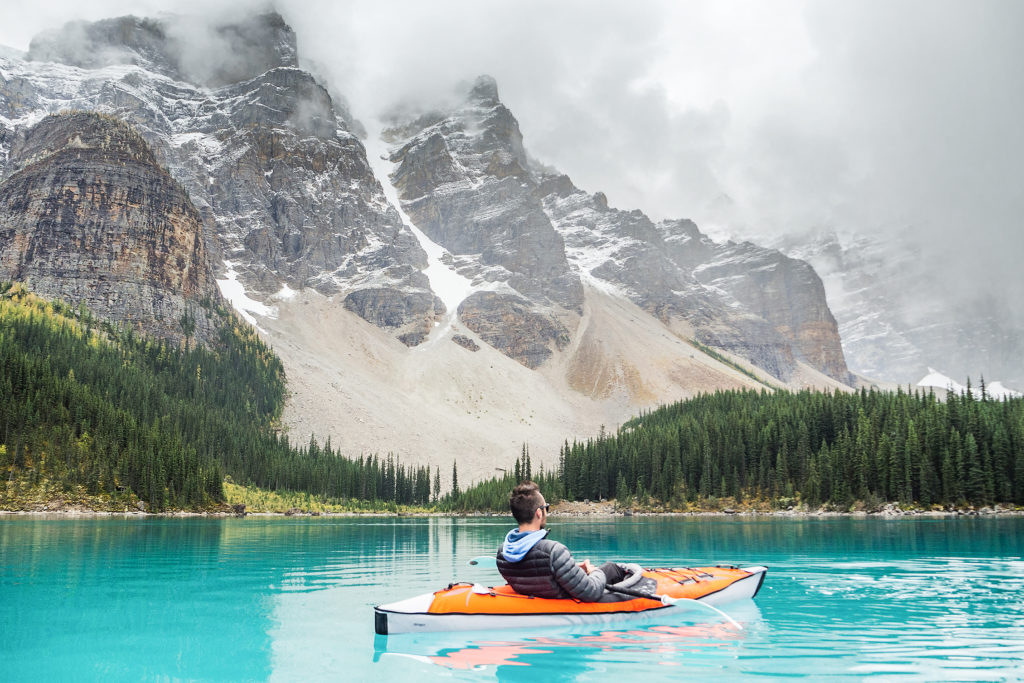
It was lunchtime when we came back to shore. After putting the kayaks away we grabbed a sandwich at the Lodge before heading up one of the many trails that start from the lake.
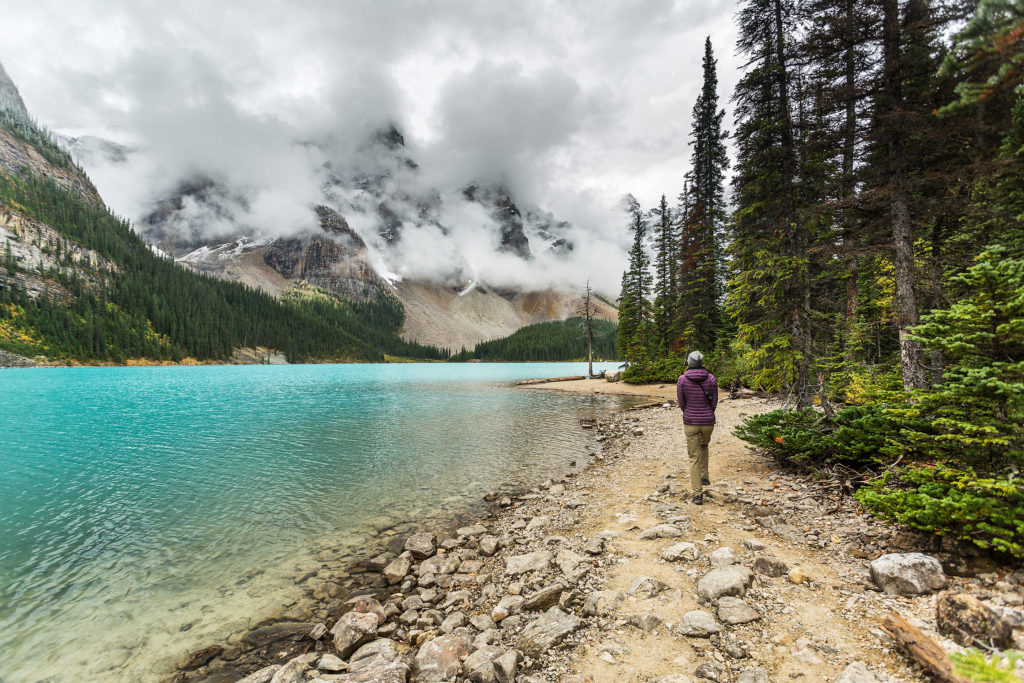
Another recurring fact learned from the few iconic places we visited. When you step away from the main, off-the-road attraction, 90% of the crowd vanishes. We made our way up the Larch/Paradise valley trail. We climbed the first 4k of switchbacks at a steady pace and arrived in the larch meadow less than an hour after starting.


That mid-september week seemed to be the perfect timing for our trip, as the Larch tress had already started to turn gold, and although frost was already covering the ground, the first snow dump wouldn’t be happening until the following week as we found out later.
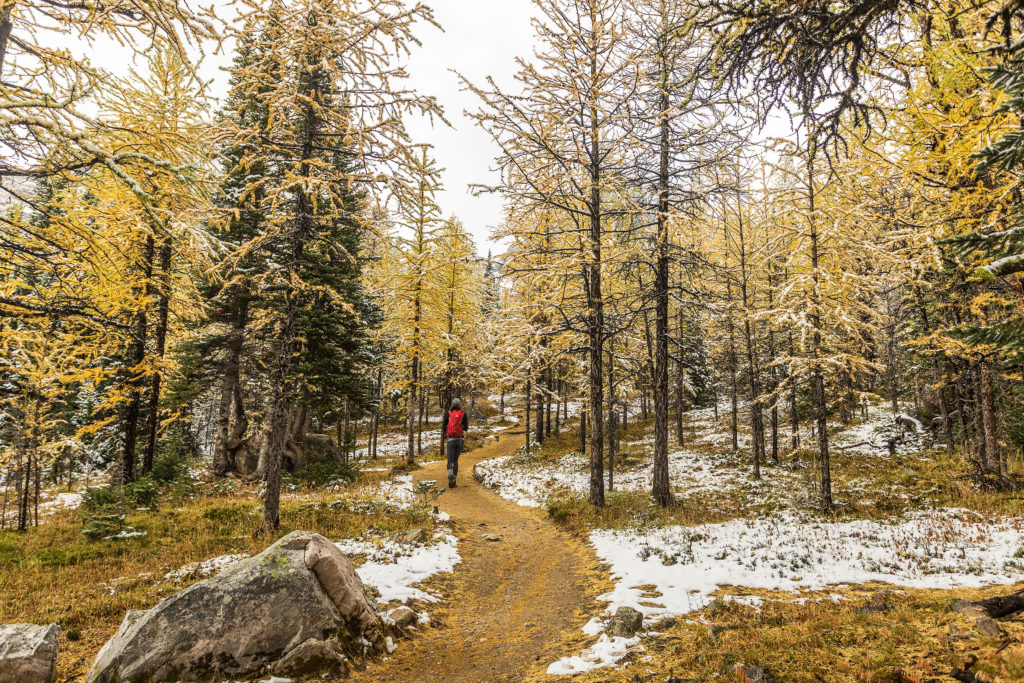
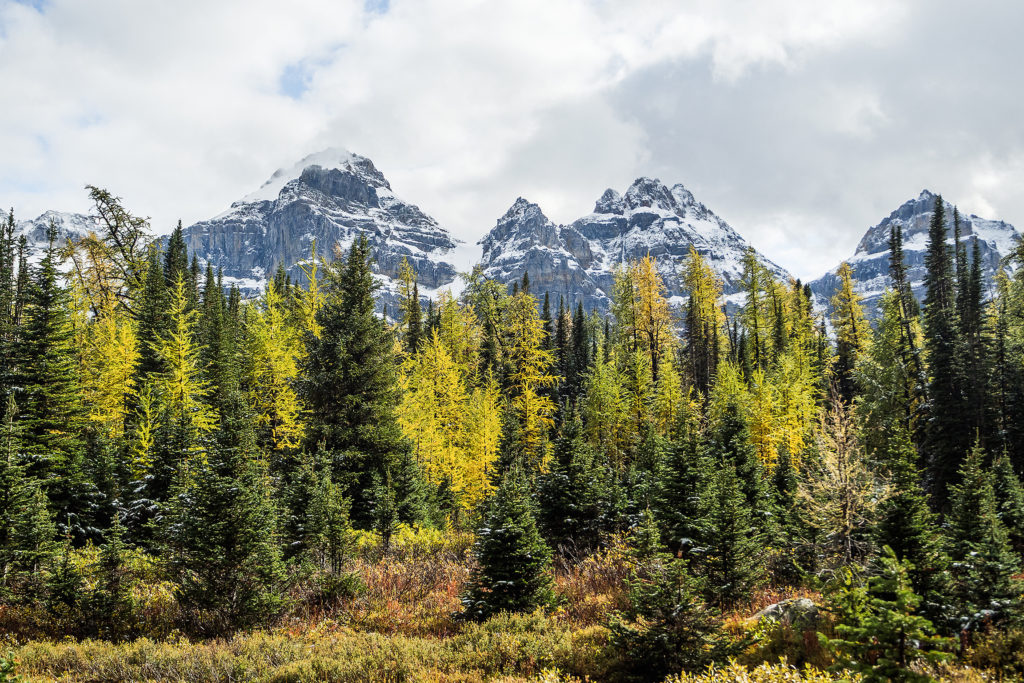
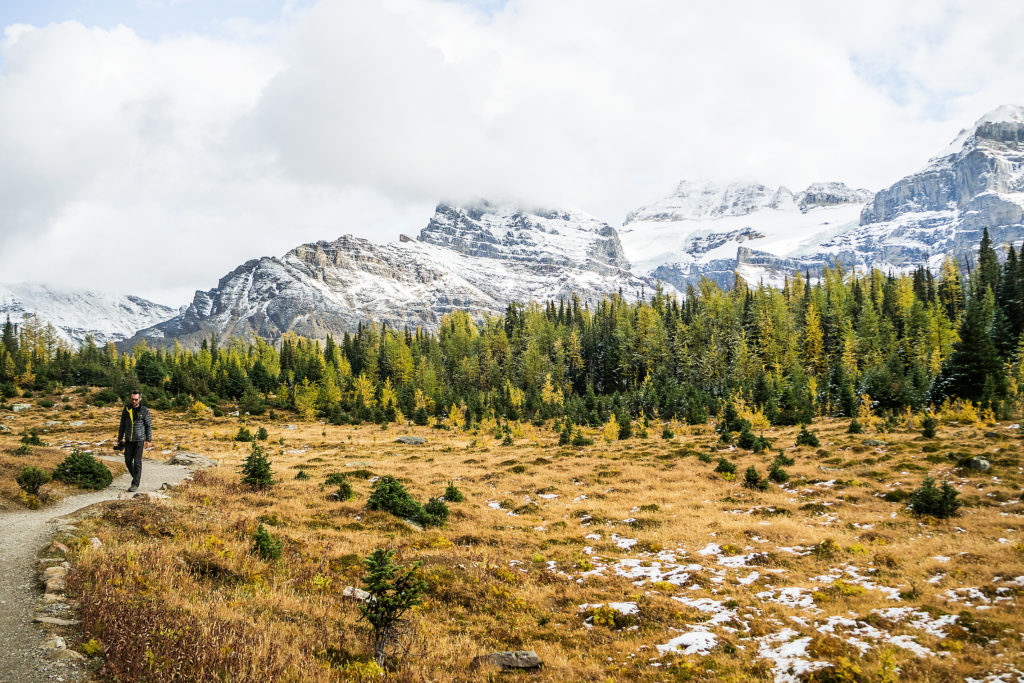
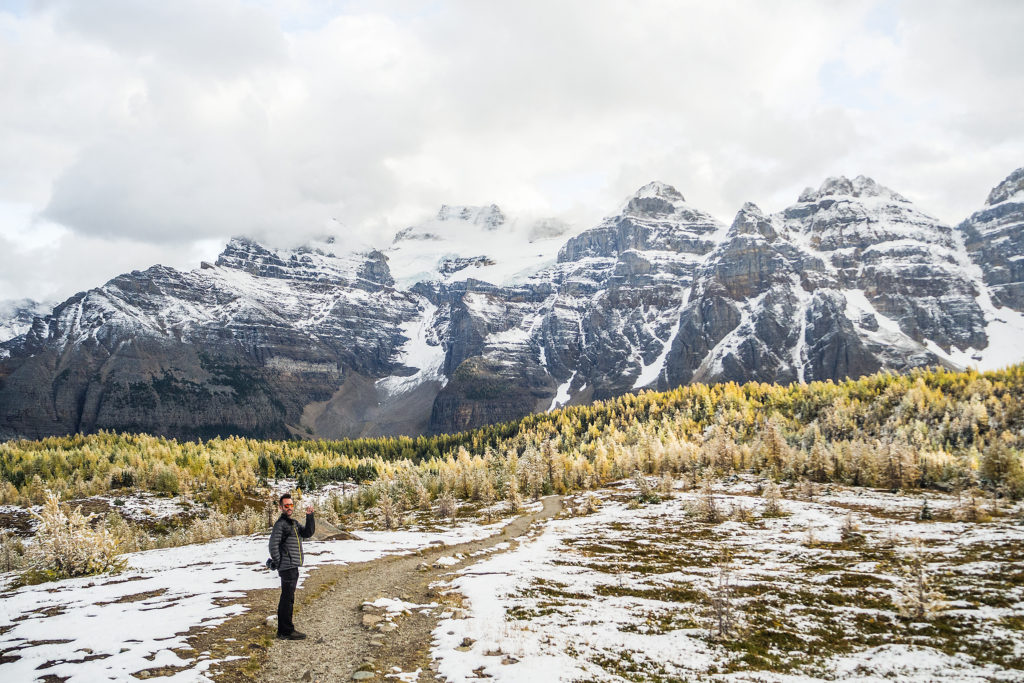
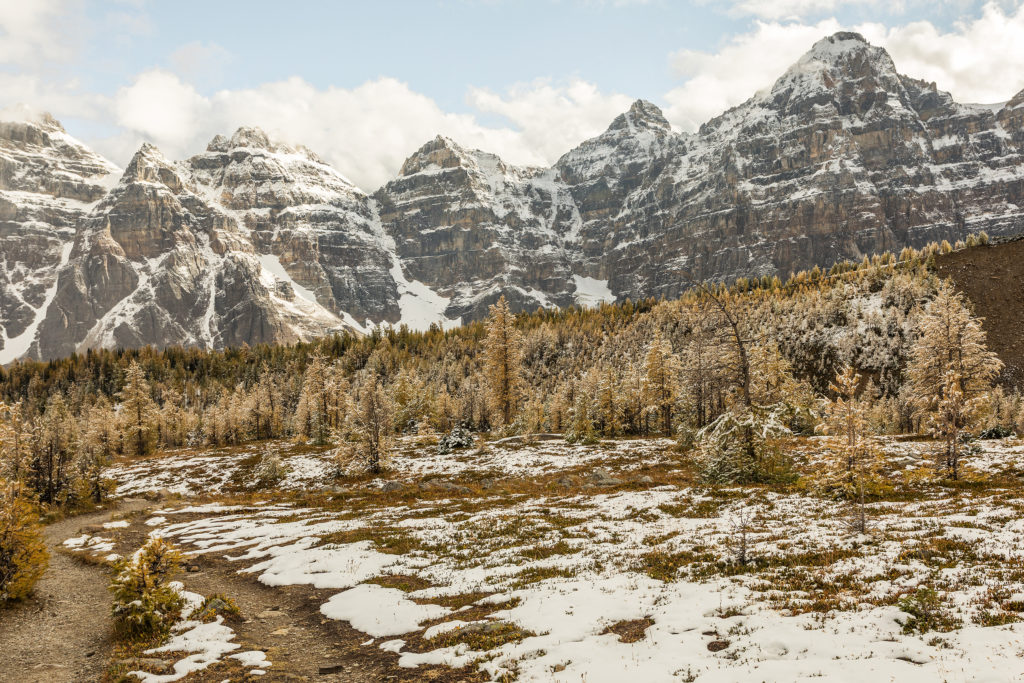
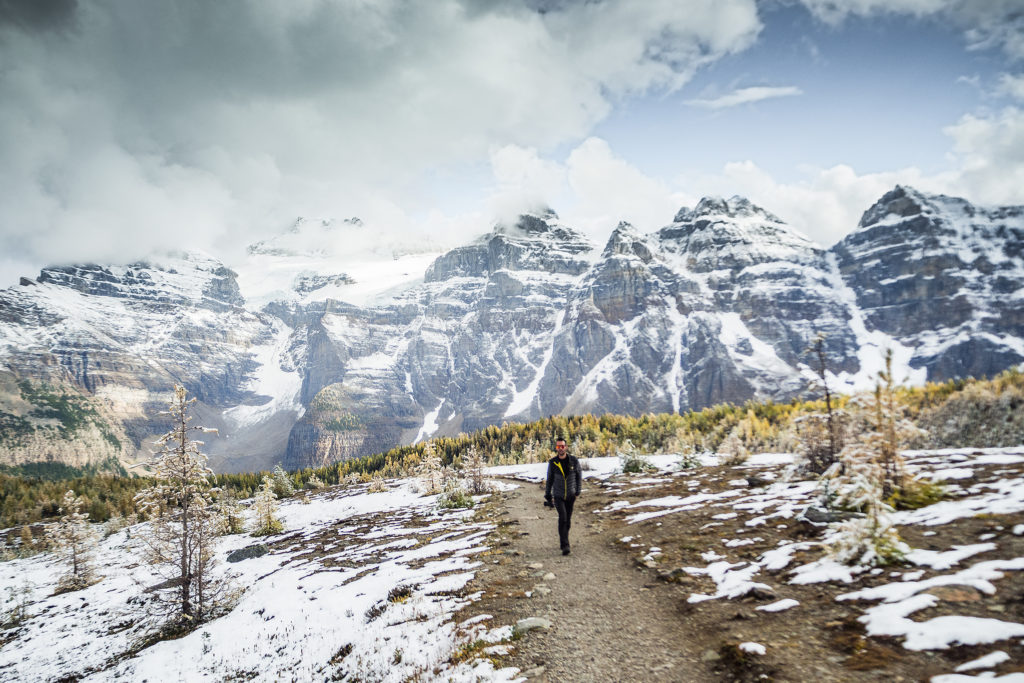
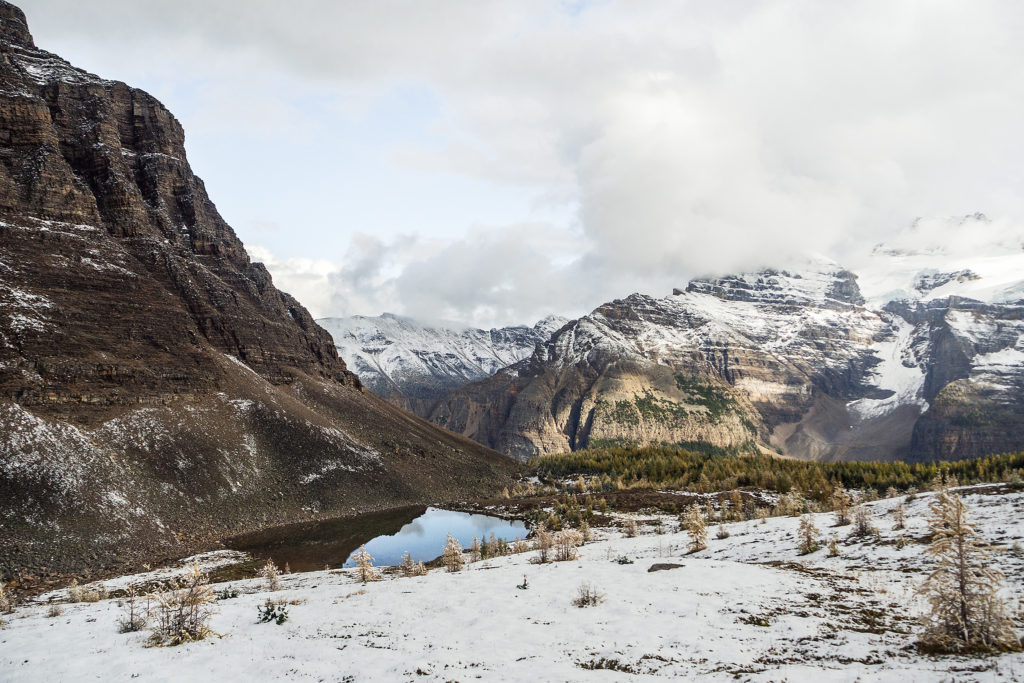
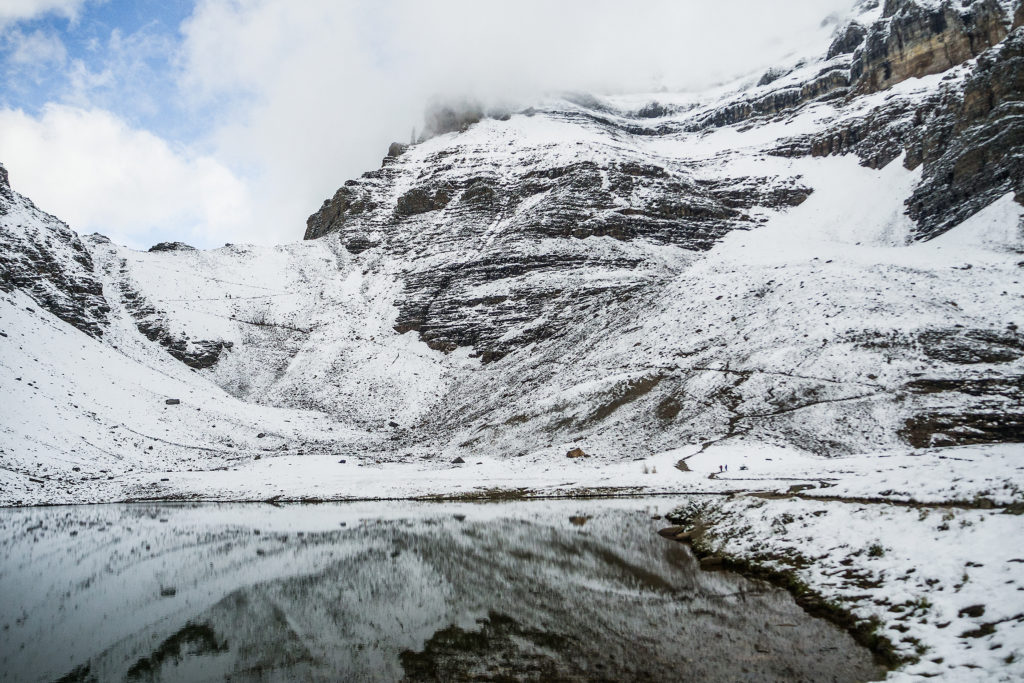
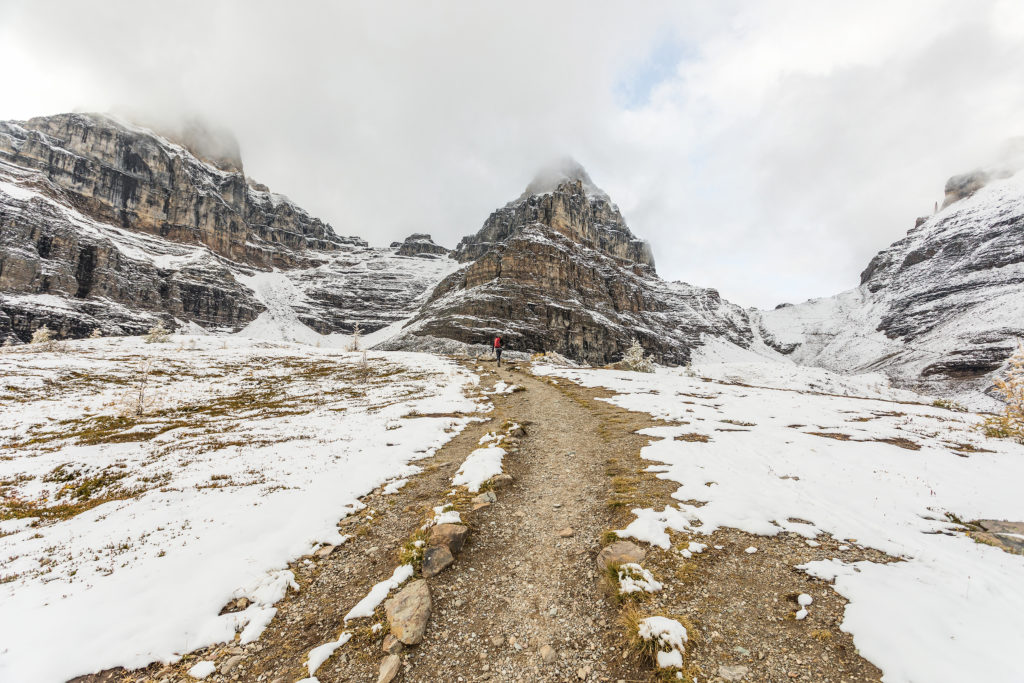
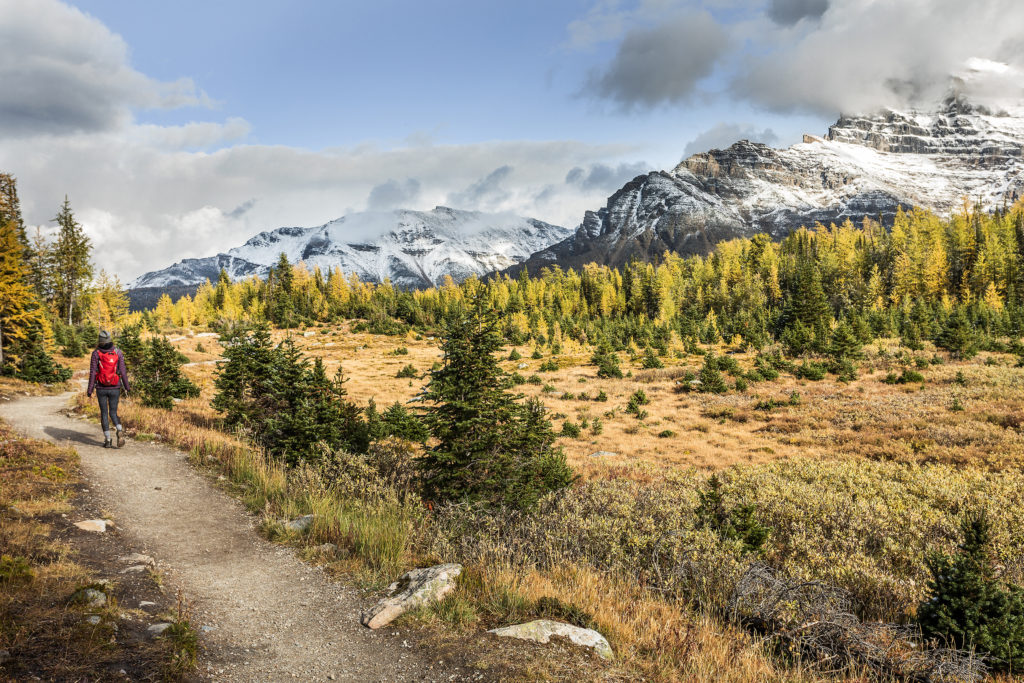
We didn’t make it up to Sentinel pass, but the snaking trail up the flank of the mountain was clearly visible from Minnestima Lake where we stopped before turning around. We could see the most adventurous of the little ants climbing up to the ridge and disappearing to the other side. We on the other hand made our way back down to the lake. The sun was starting to set and the clouds add cleared off the peaks and we climbed one more time to the top of the ant farm to capture yet another of the many faces of Moraine Lake – water mow glowing under the sun.
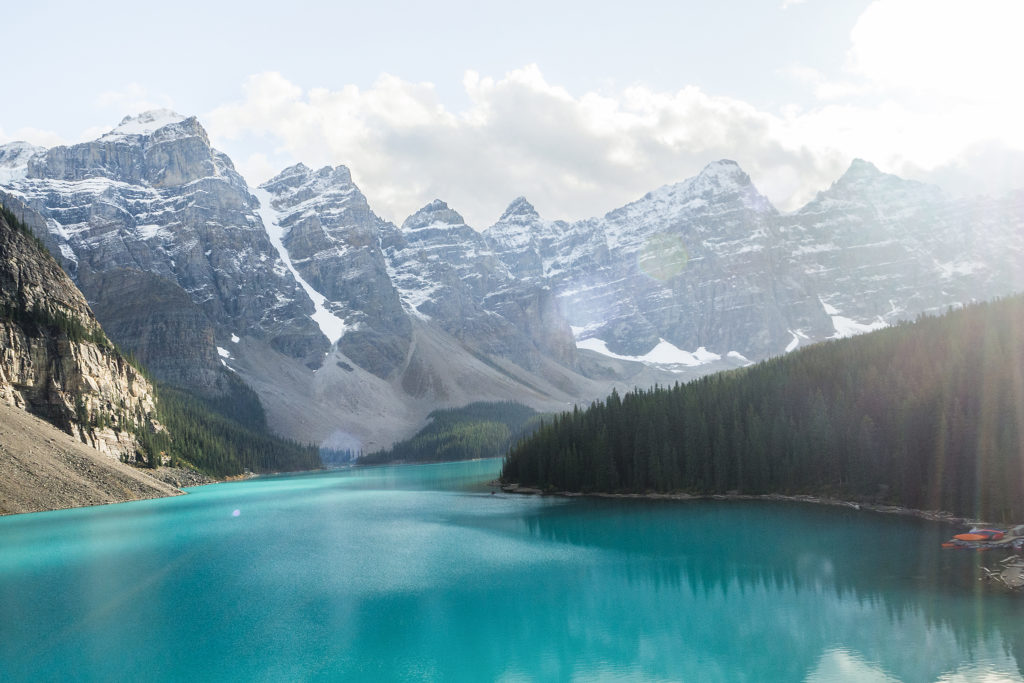
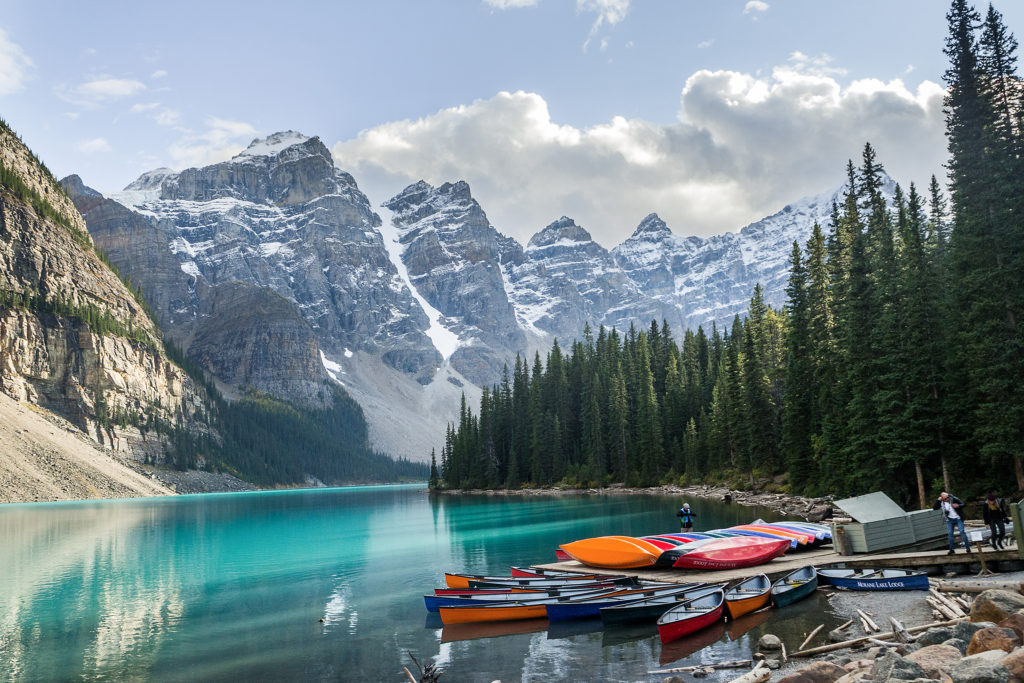
That evening we drove back west toward Yoho national park. We found an available camping site at the Kicking horse campground, the only one of the 4 in Yoho to offer hot showers – a pretty attractive feature when you’re camping by 0 degree weather.




